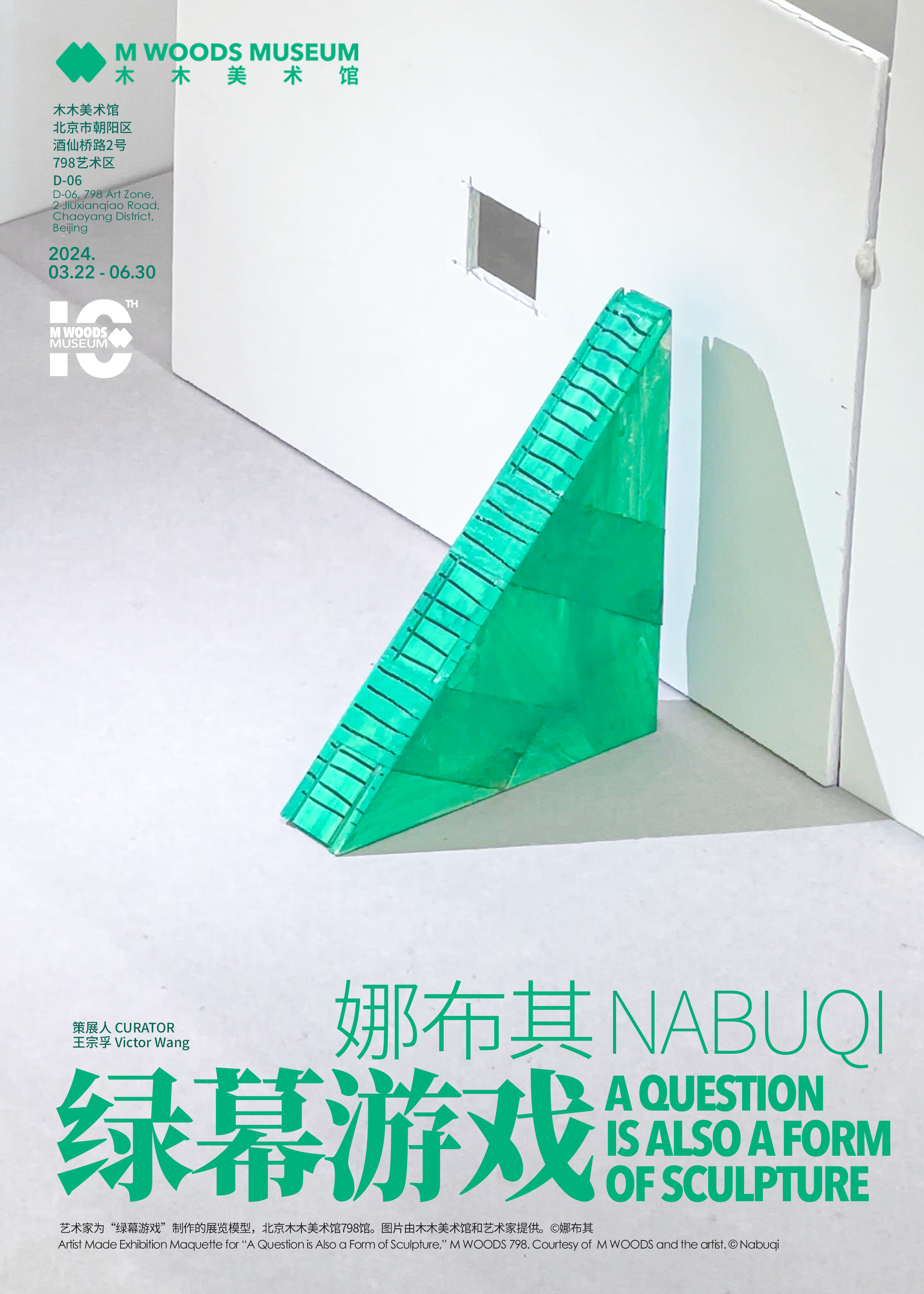
NABUQI
A
Question is Also a Form of Sculpture
Curated by Victor Wang
M WOODS 798
March 22-July 22, 2024
Beijing


A Question is Also a Form of Sculpture, M WOODS 798, Beijing, 2024, Image courtesy of M WOODS
Can an exhibition also be a form of sculpture, or, perhaps, can a question?
Take a step back with M WOODS as we circle around the first major mid-career survey of local Chinese artist Nabuqi (b. 1984 Inner Mongolia, lives Beijing)—a comprehensive exhibition that when seen from one angle functions as sculpture, however, when viewed from another a ‘sculptural study’ appears with the shift of gaze, one that explores a decade of her artistic inquiry into sculpture and its transformation amidst the rise of manufactured and mass-produced goods.
Curated by Victor Wang, M WOODS’ Artistic & Executive Director, and developed closely with the artist over the past year, this experimental mid-career survey unfolds as a multi-sided object. Further, on each surface of this object, a series of ‘sculptural zones’ materialize, developing the ideas and questions Nabuqi has explored through her art. In total, the curator and artist have selected over 40 pivotal works by Nabuqi, that come together to create this unique physical experience.
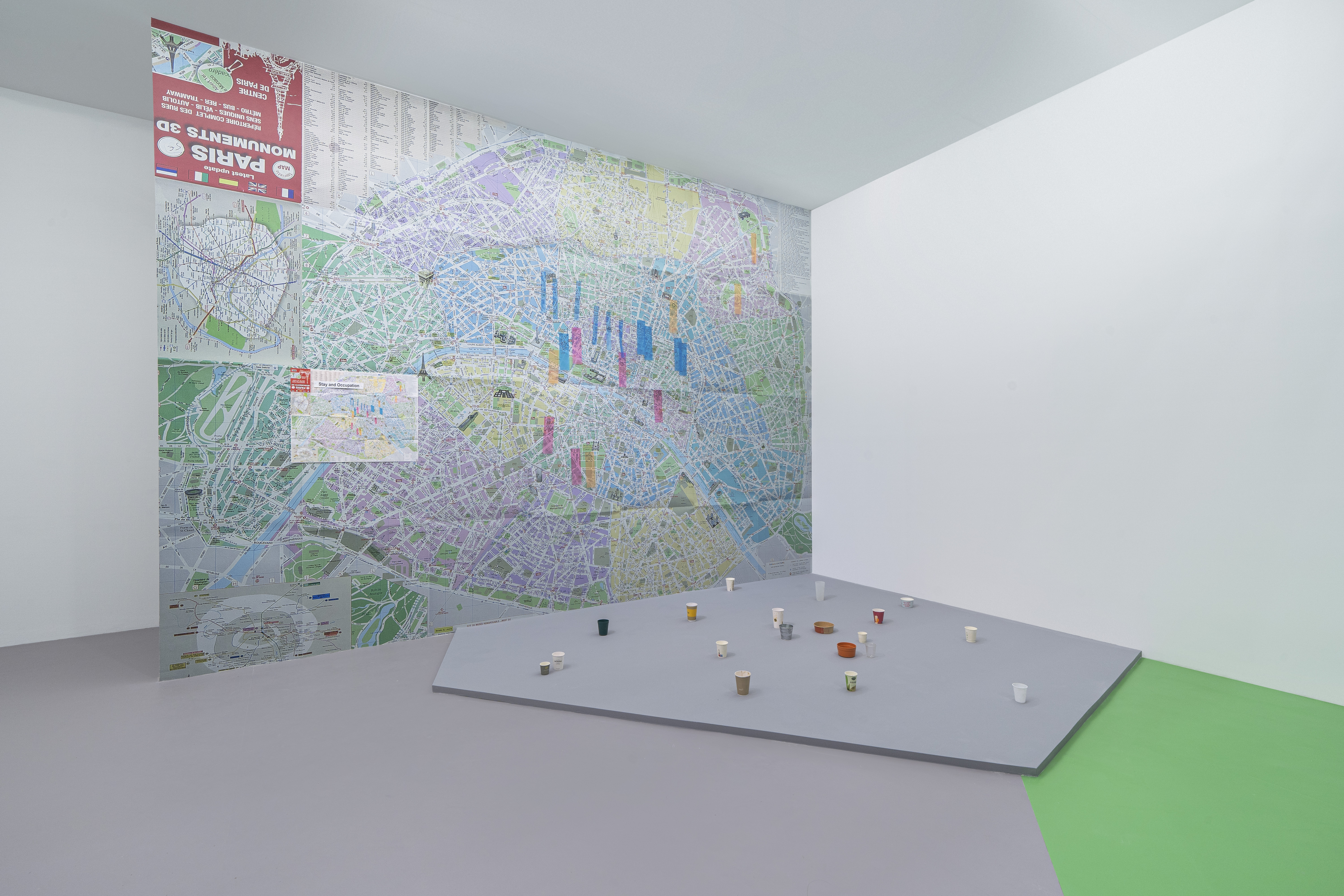
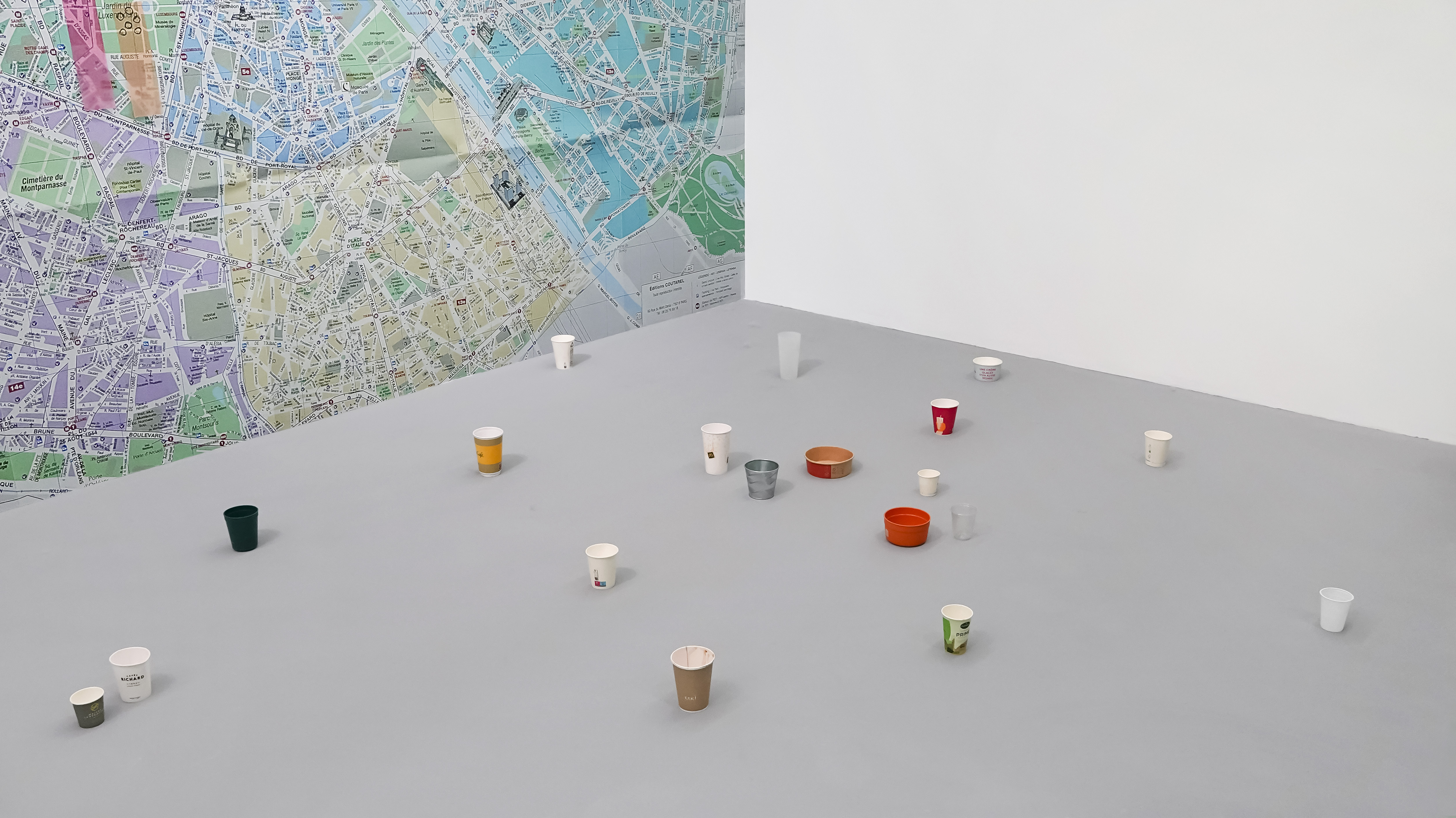
Installation view, Nabuqi: A Question is Also a Form of Sculpture, M WOODS 798, Beijing, 2024, Image courtesy of M WOODS
The exhibition is constructed into two central thematic sections. The first floor of the museum is defined by a new large-scale Central Hall sculpture commission, a microcosm of a larger system that adopts a green screen-like outdoor environment, effectively turning the main gallery into an interactive public space. Here, audiences venture both inside and outside simultaneously, challenging the conventional separation of urban and rural areas. The Central Hall becomes both an interior world unto itself and a manufactured outside world, filtered through a monument that emphasizes the interconnections between public space and sculpture.
The second floor offers an overview of the last decade of Nabuqi's work. It foregrounds key questions in Nabuqi’s art, such as the ability of sculpture to maintain its unique artistic identity in an era dominated by manufactured and mass-produced goods. Additionally, it provides insights into the artist's continuous exploration of landscapes and nature as sculptural entities, showcased through a diverse presentation of Nabuqi's works. This curated look into the past features a selection of important works from 2014-2023, such as the "A View Beyond Space" series (NO.1, NO.4, NO.7, and NO.5). Featured pieces like "A View Beyond Space No. 4, 2015," and "No.8 (Swiss Cheese Plant in a Plate)" underscore Nabuqi's investigation into sculpture as a medium for interpreting the complex layers of urbanized nature. “A View Beyond Space No. 4”, 2015, a meticulously constructed stainless steel landscape, reminiscent of a city skyline, immediately conjures thoughts of urban environments, representing the continual encroachment of urban structures into natural landscapes. In contrast, the 2022 bronze sculpture "No.8 (Swiss Cheese Plant in a Plate)" presents a fragmented tropical flowering plant. Its bronze sheen highlights the transformation of the Swiss cheese plant (Monstera deliciosa) into an aesthetic object, bridging the stark, manufactured world of contemporary sculpture with the domestication and rapid cultivation of this popular indoor house plant. Additionally, the East Gallery on the second floor will showcase the interactive, large-scale work "Board Game: Accidental Cases" from 2022. This piece emphasizes play and participation, offering a unique, hands-on experience with the artwork.
To accompany the exhibition, a comprehensive exhibition catalogue will be produced, documenting Nabuqi's works alongside a series of commissioned essays. Further, a series of events will also be held at the museum, designed to deepen public engagement with the artist's work and offer a closer examination into her decade-spanning practice.

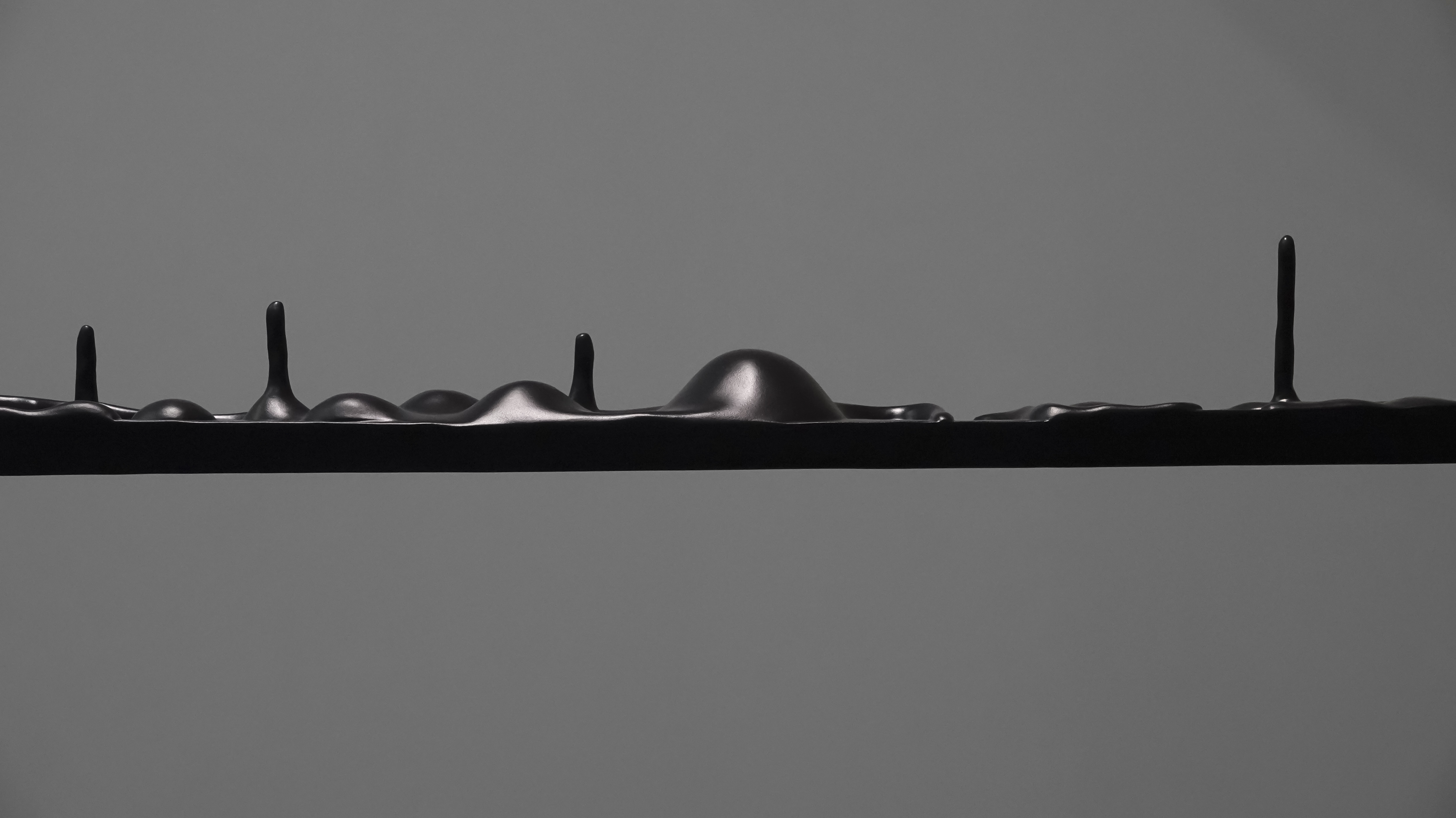
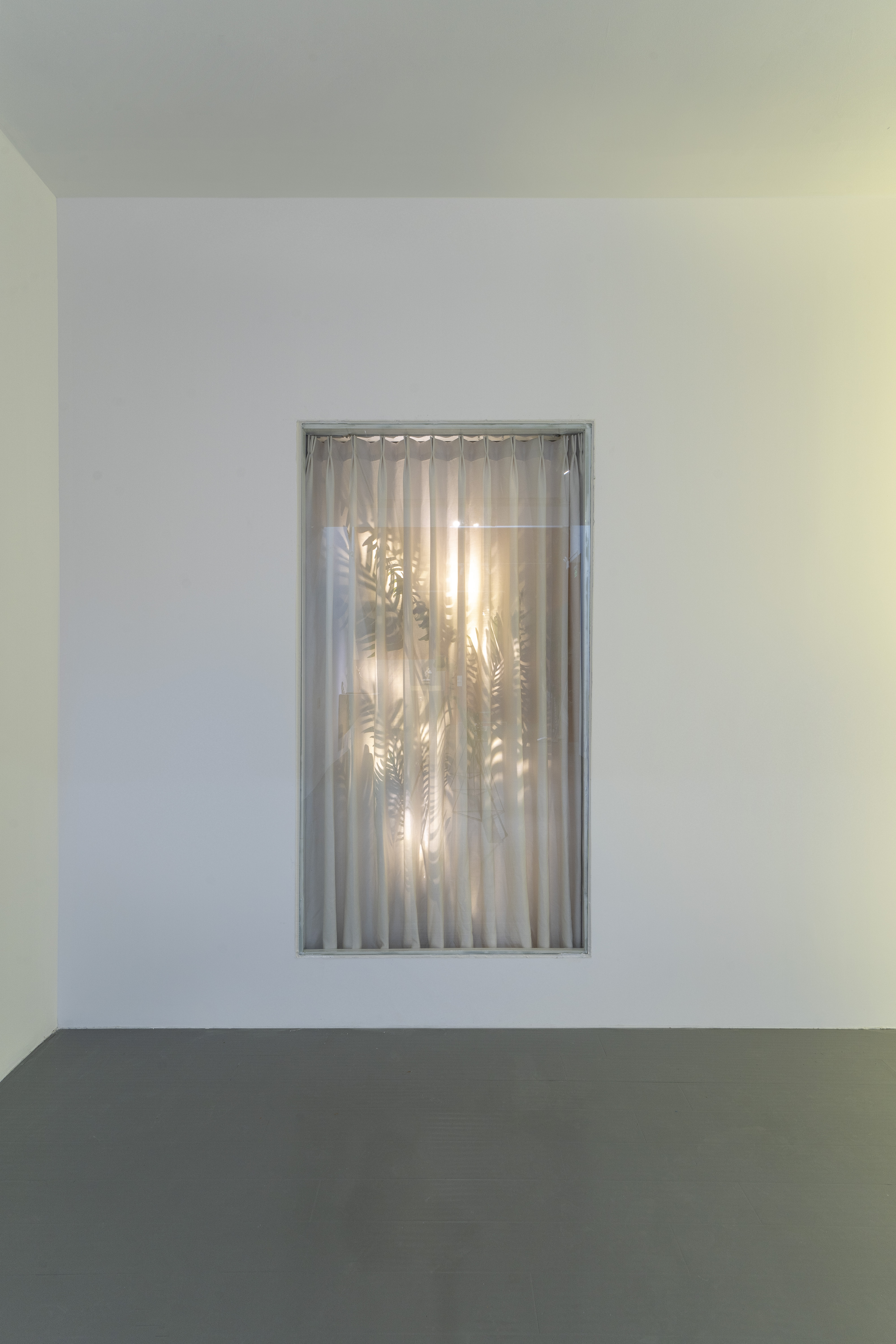
Installation view, Nabuqi: A Question is Also a Form of Sculpture,M WOODS 798, Beijing, 2024, Image courtesy of M WOODS
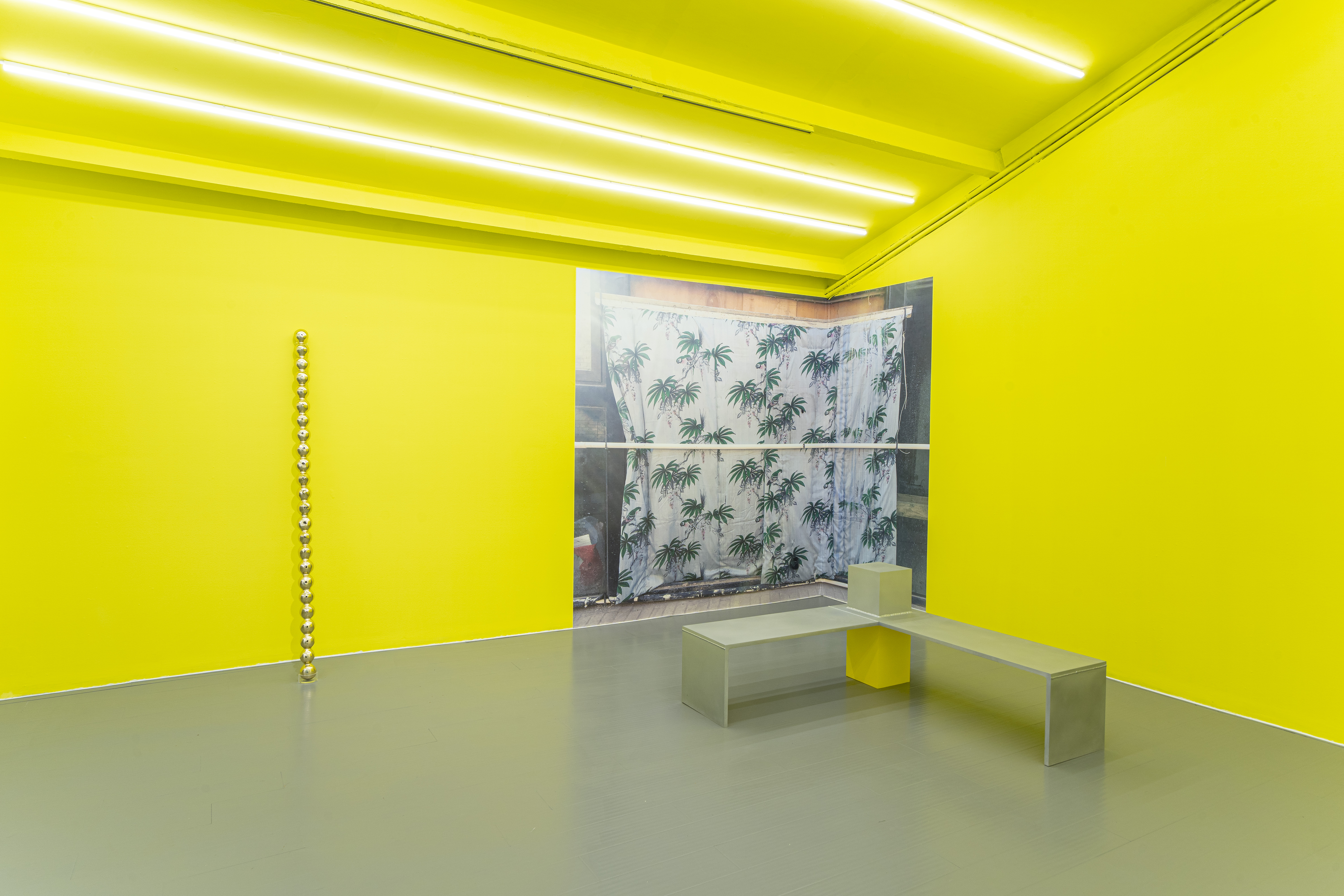
Installation view, Nabuqi: A Question is Also a Form of Sculpture,M WOODS 798, Beijing, 2024, Image courtesy of M WOODS
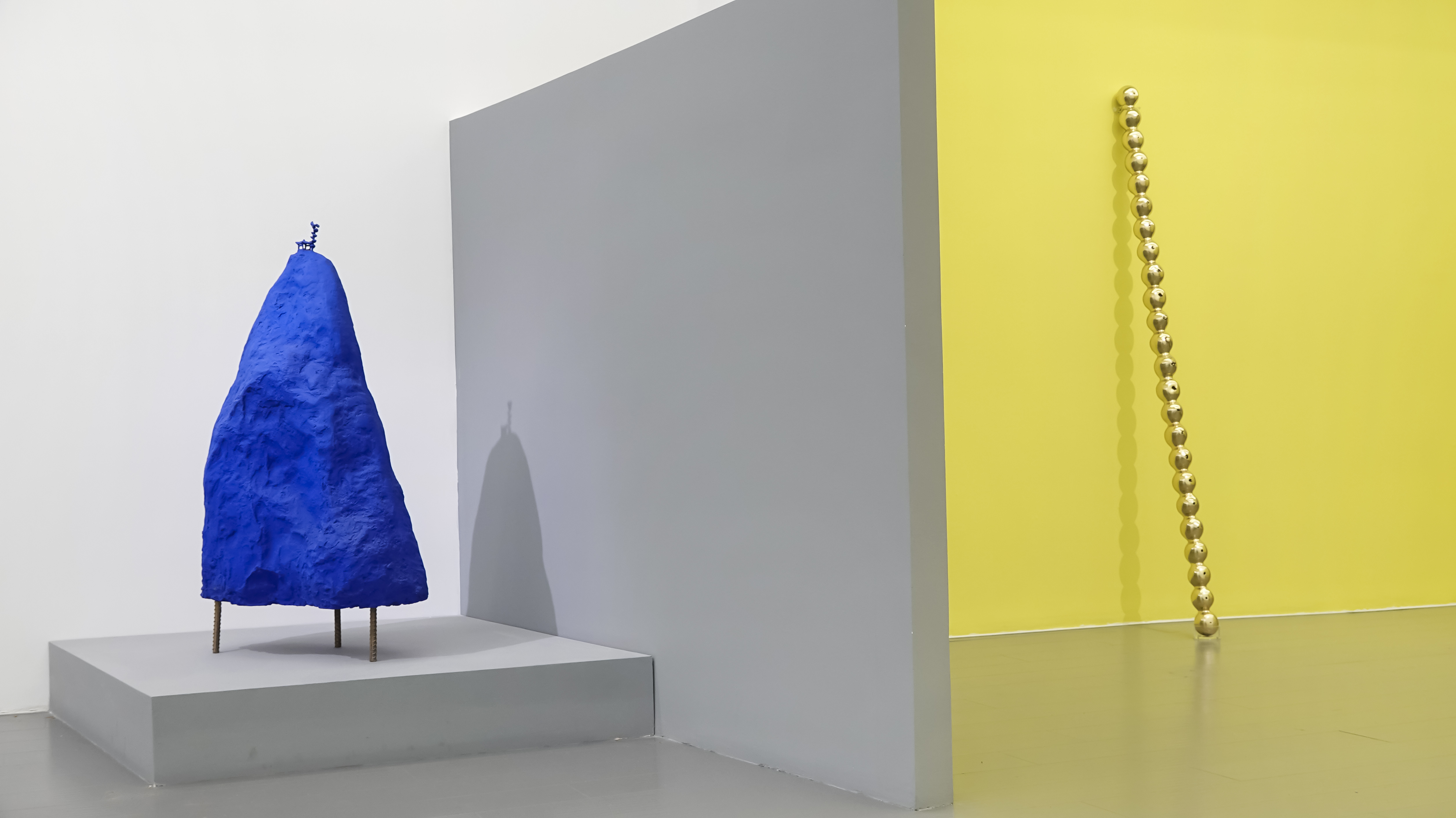

Installation view, Nabuqi: A Question is Also a Form of Sculpture,M WOODS 798, Beijing, 2024, Image courtesy of M WOODS
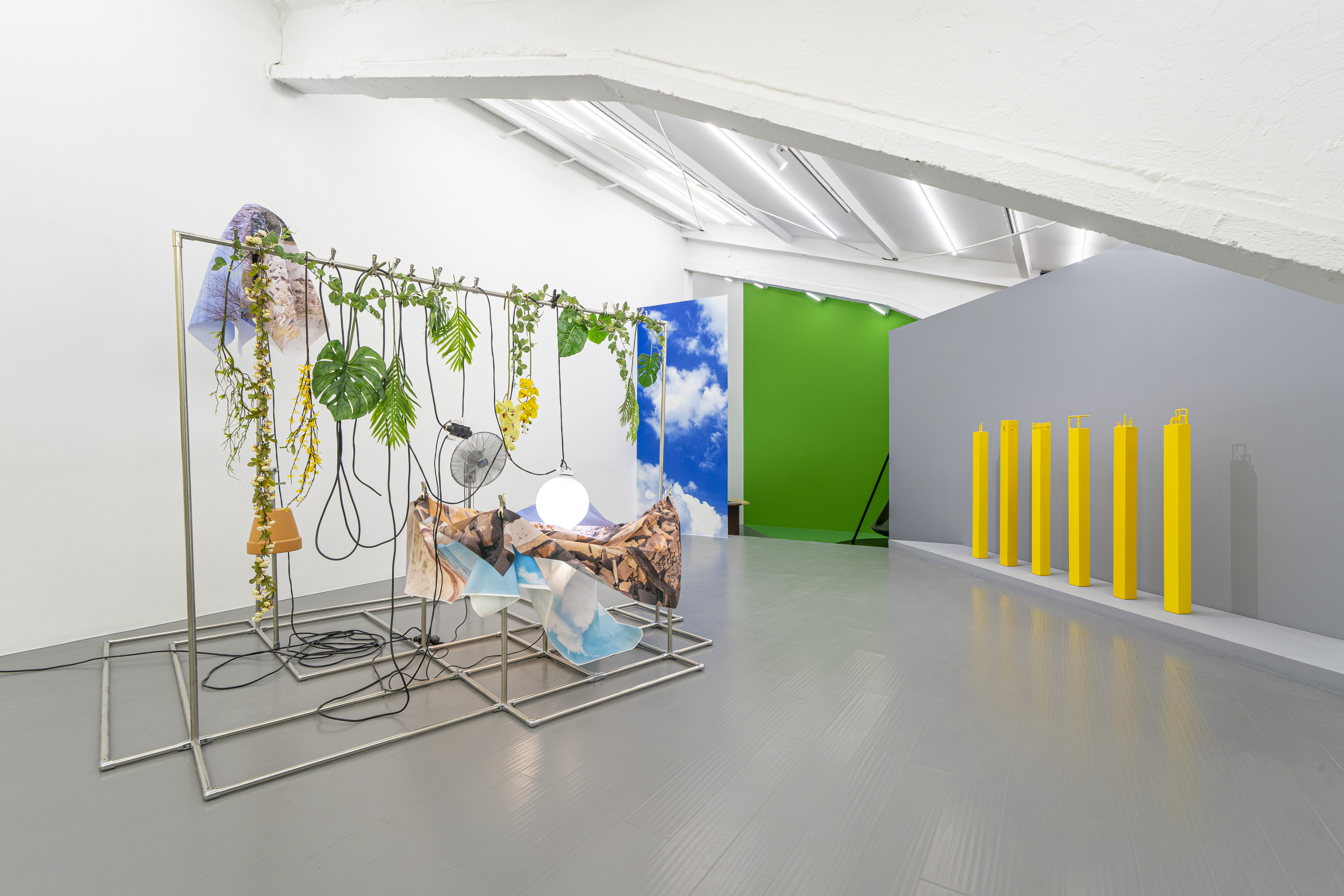
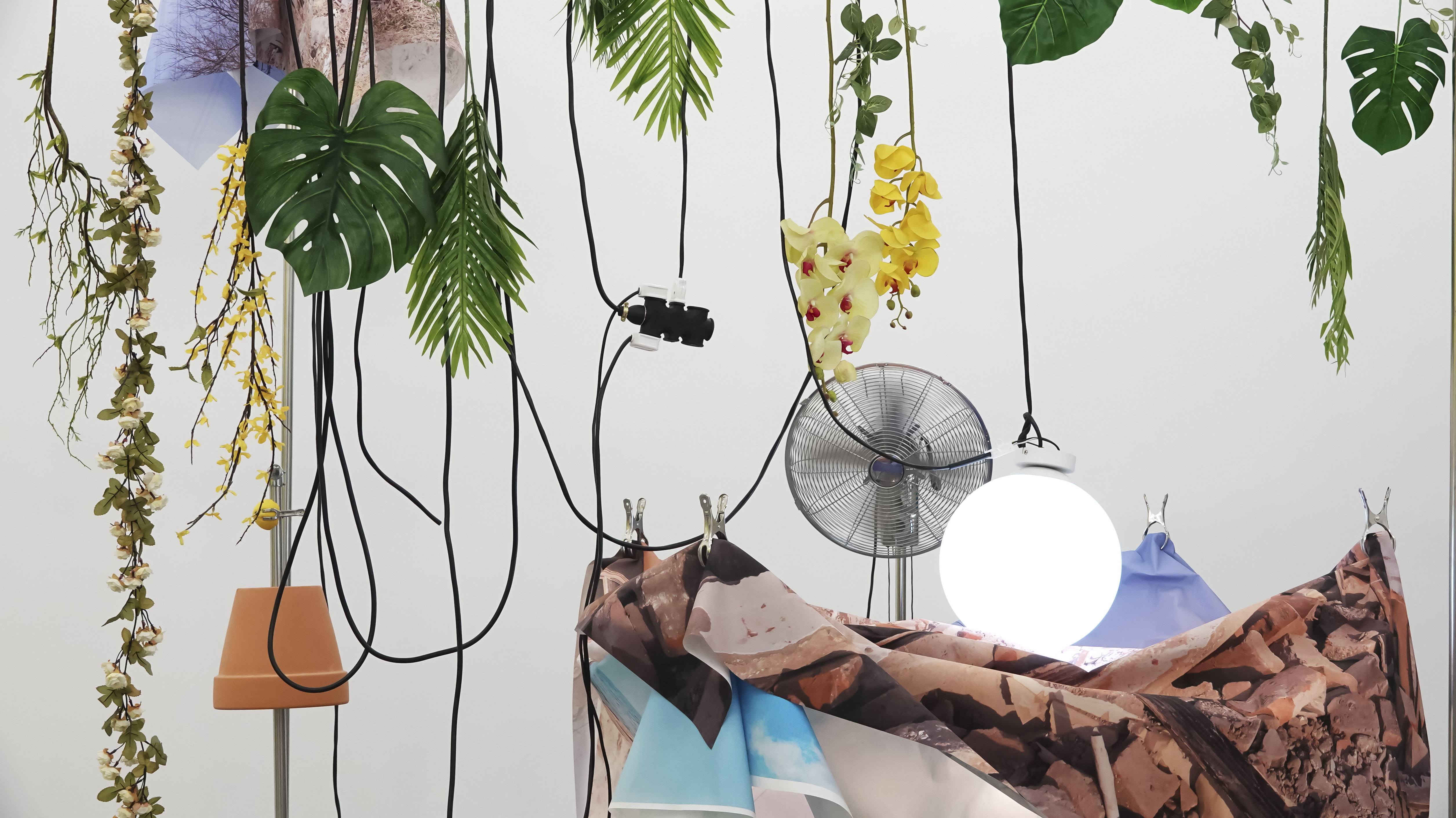
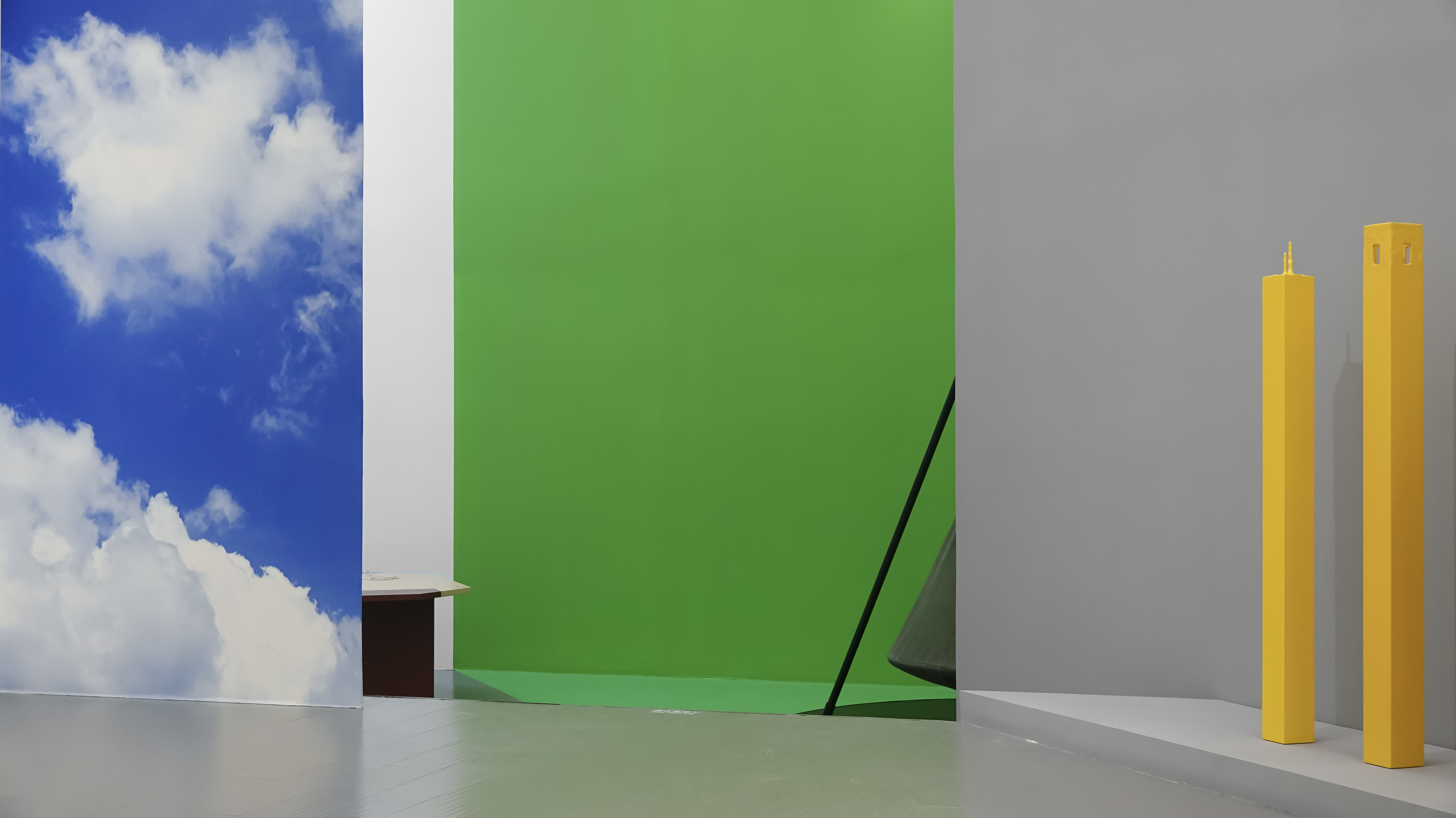
Installation view, Nabuqi: A Question is Also a Form of Sculpture,M WOODS 798, Beijing, 2024, Image courtesy of M WOODS
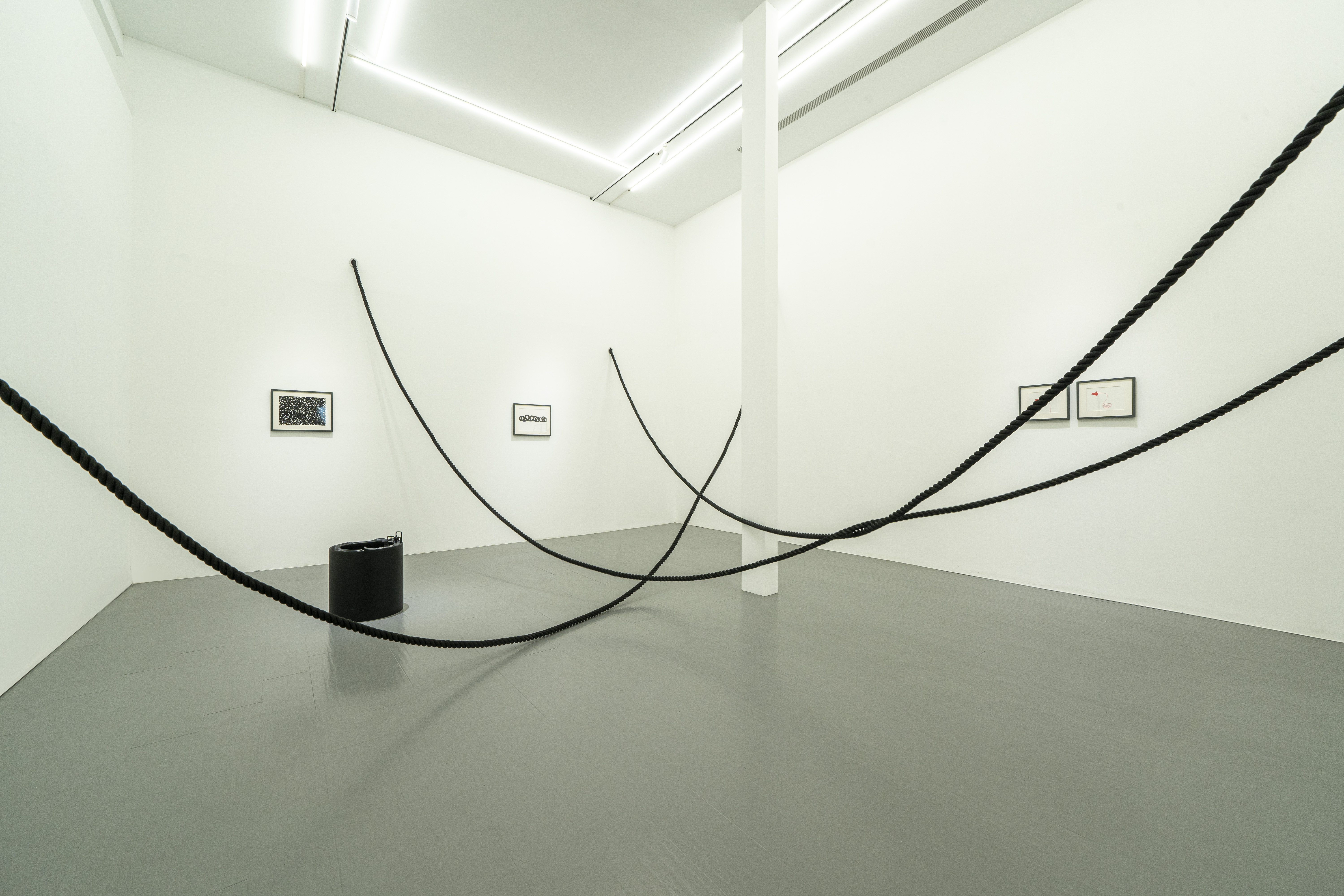


Installation view, Nabuqi: A Question is Also a Form of Sculpture,M WOODS 798, Beijing, 2024, Image courtesy of M WOODS
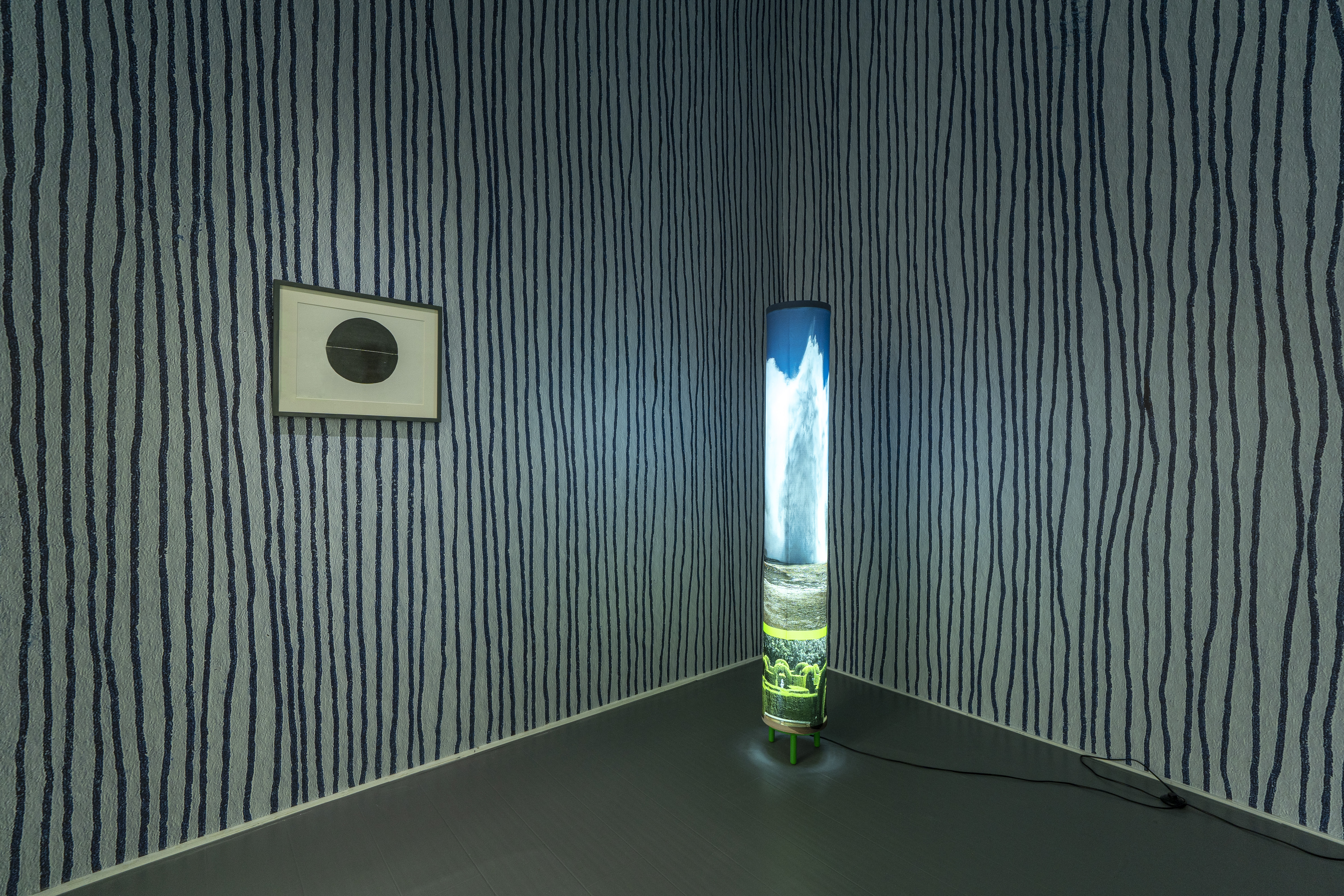
Installation view, Nabuqi: A Question is Also a Form of Sculpture,M WOODS 798, Beijing, 2024, Image courtesy of M WOODS


Installation view, Nabuqi: A Question is Also a Form of Sculpture,M WOODS 798, Beijing, 2024, Image courtesy of M WOODS


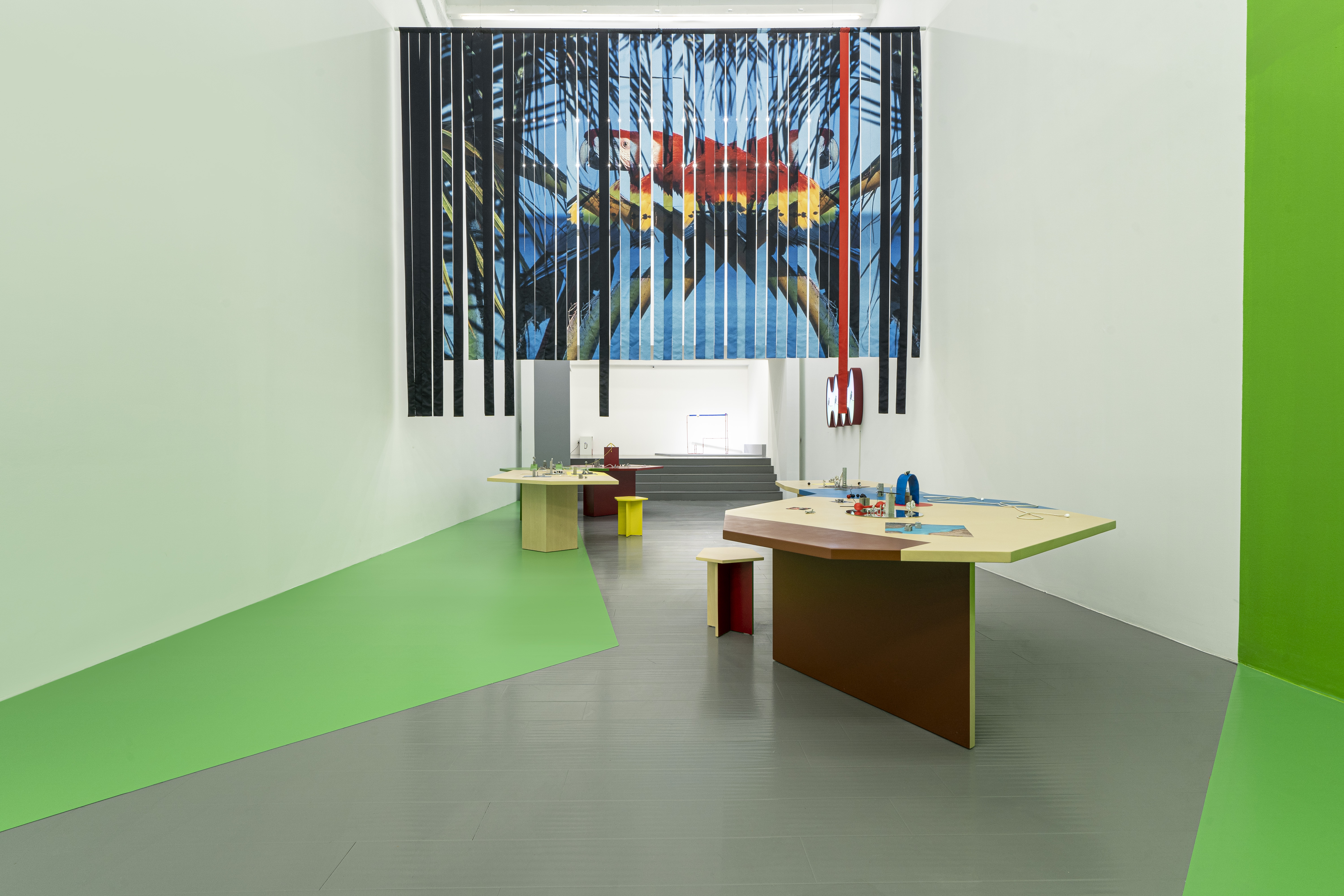
Installation view, Nabuqi: A Question is Also a Form of Sculpture,M WOODS 798, Beijing, 2024, Image courtesy of M WOODS
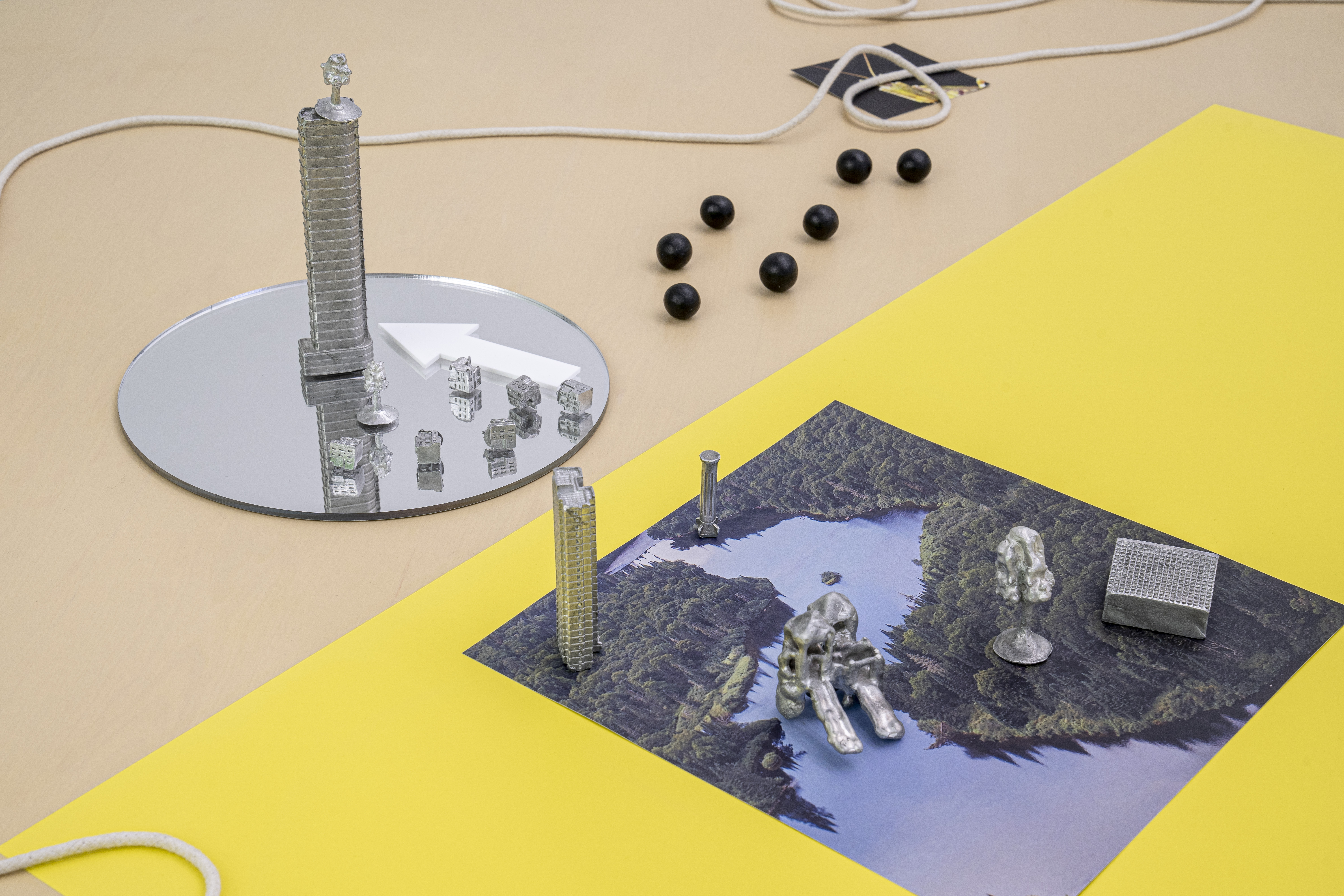
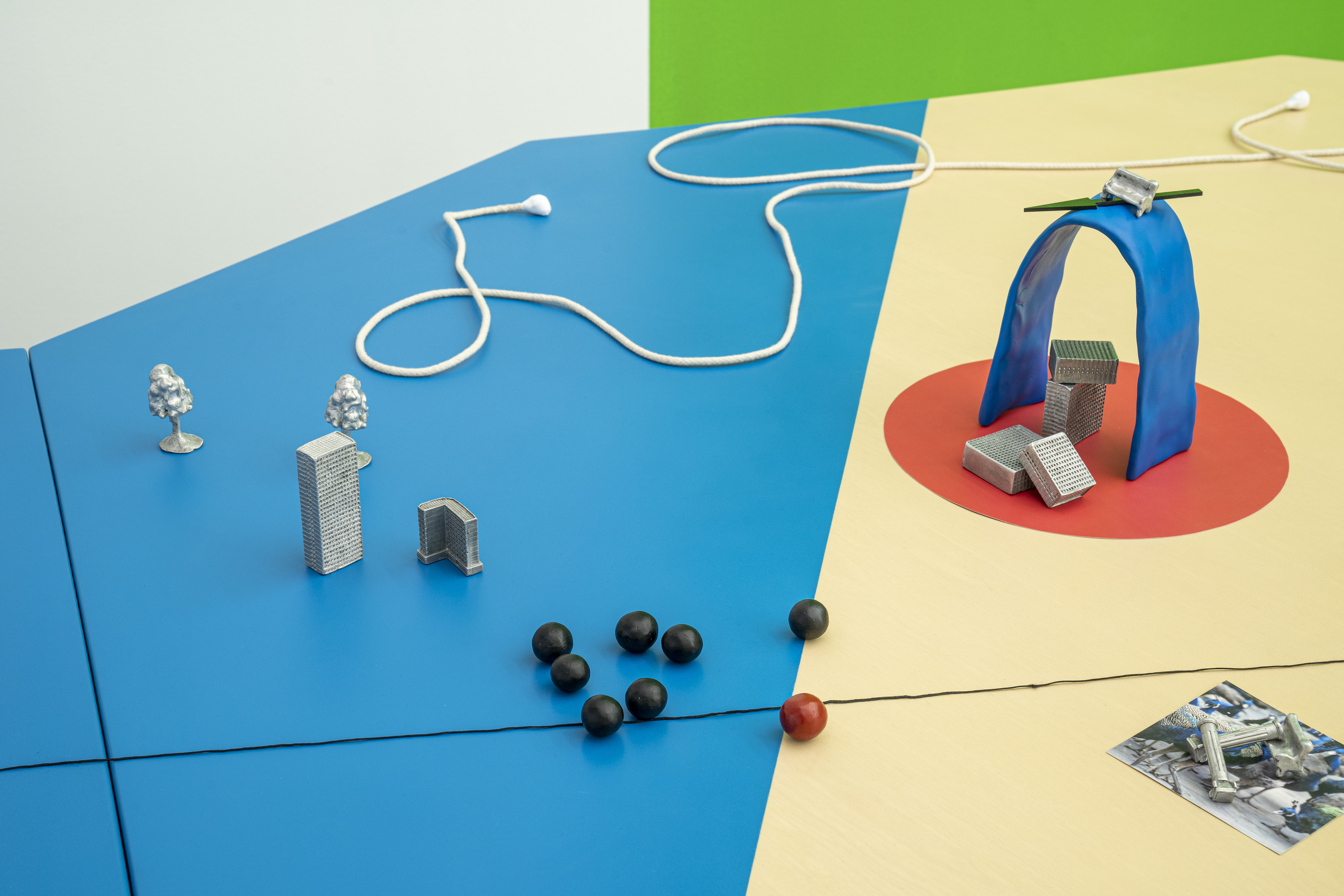
Installation view, Nabuqi: A Question is Also a Form of Sculpture,M WOODS 798, Beijing, 2024, Image courtesy of M WOODS
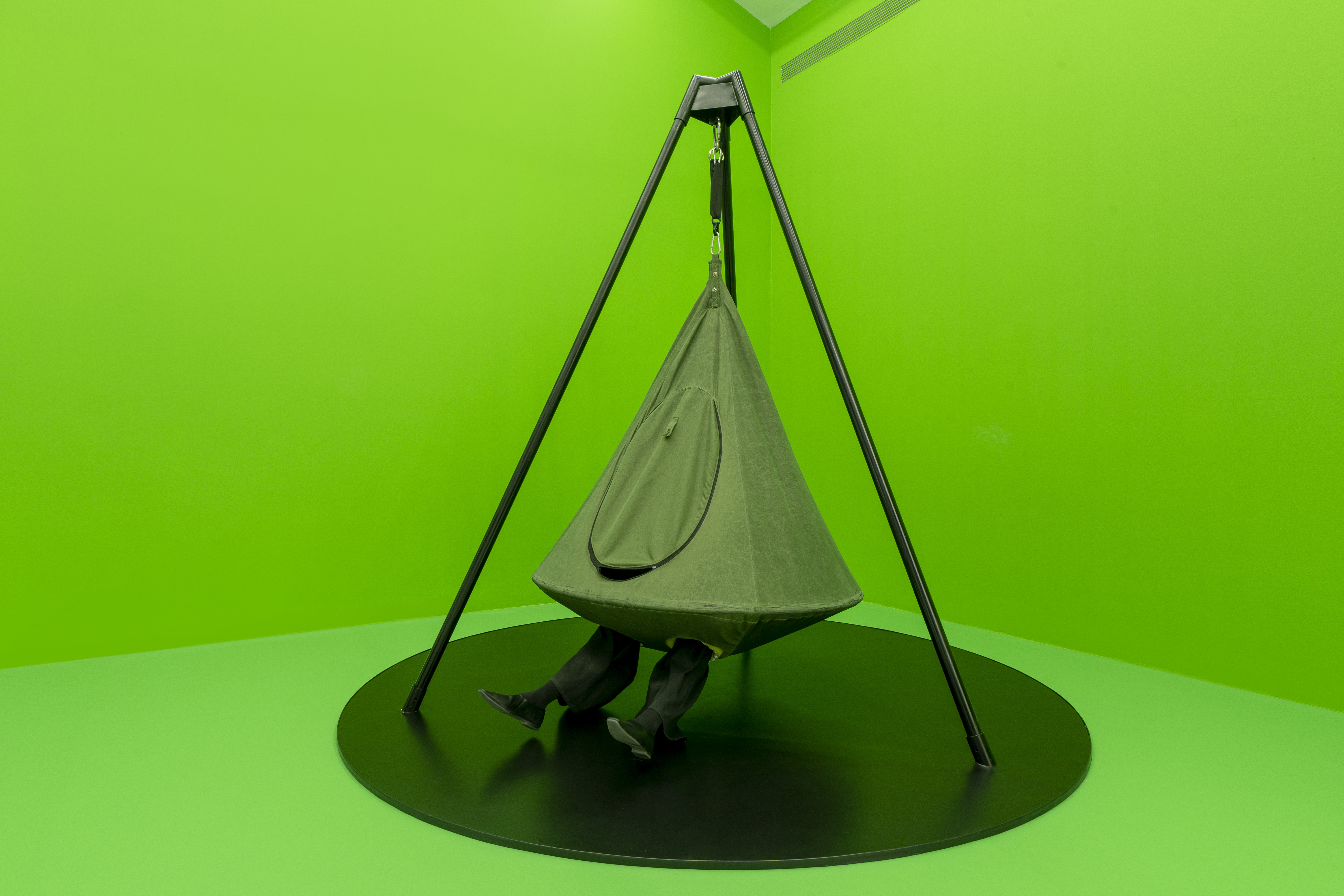
Installation view, Nabuqi: A Question is Also a Form of Sculpture,M WOODS 798, Beijing, 2024, Image courtesy of M WOODS
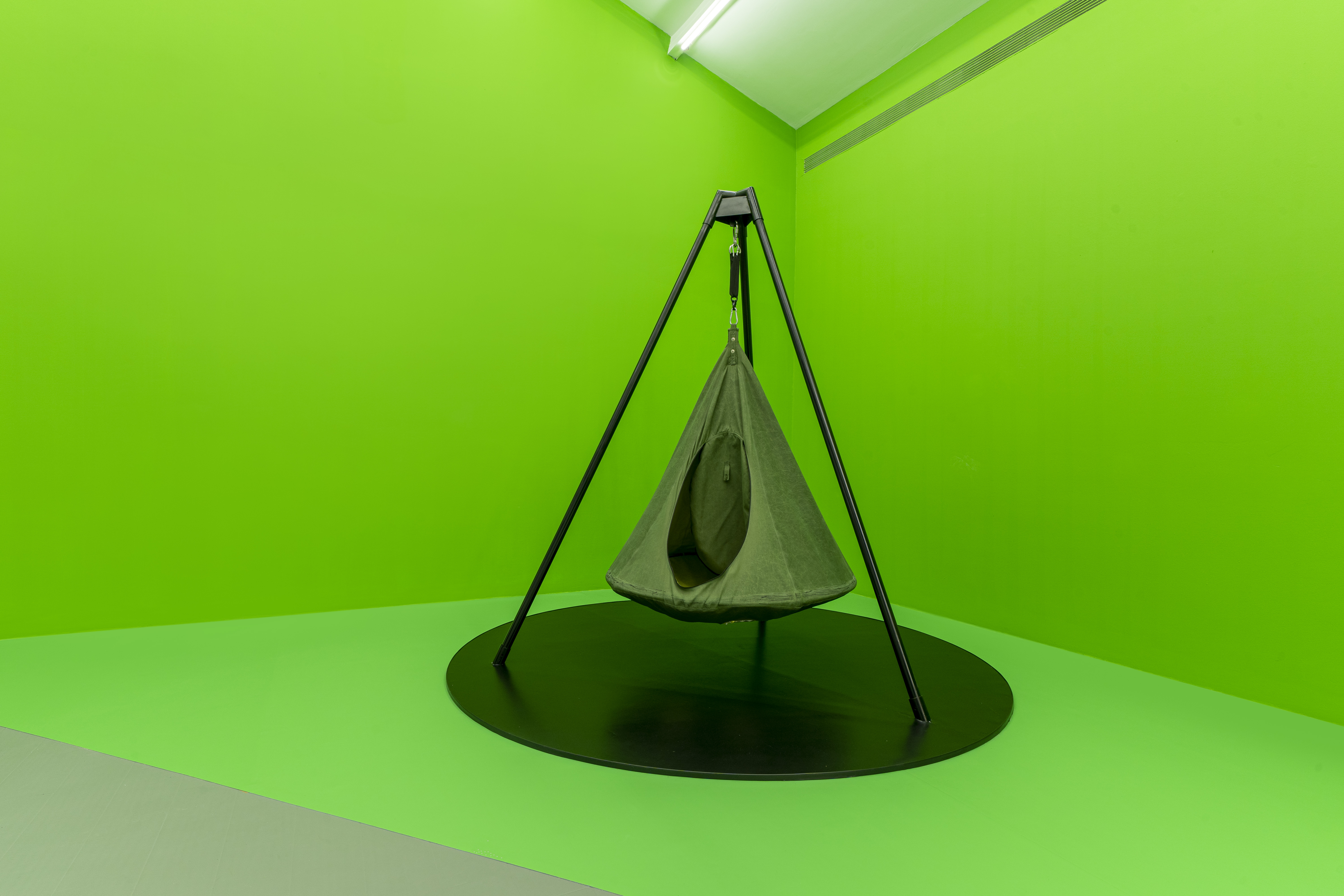

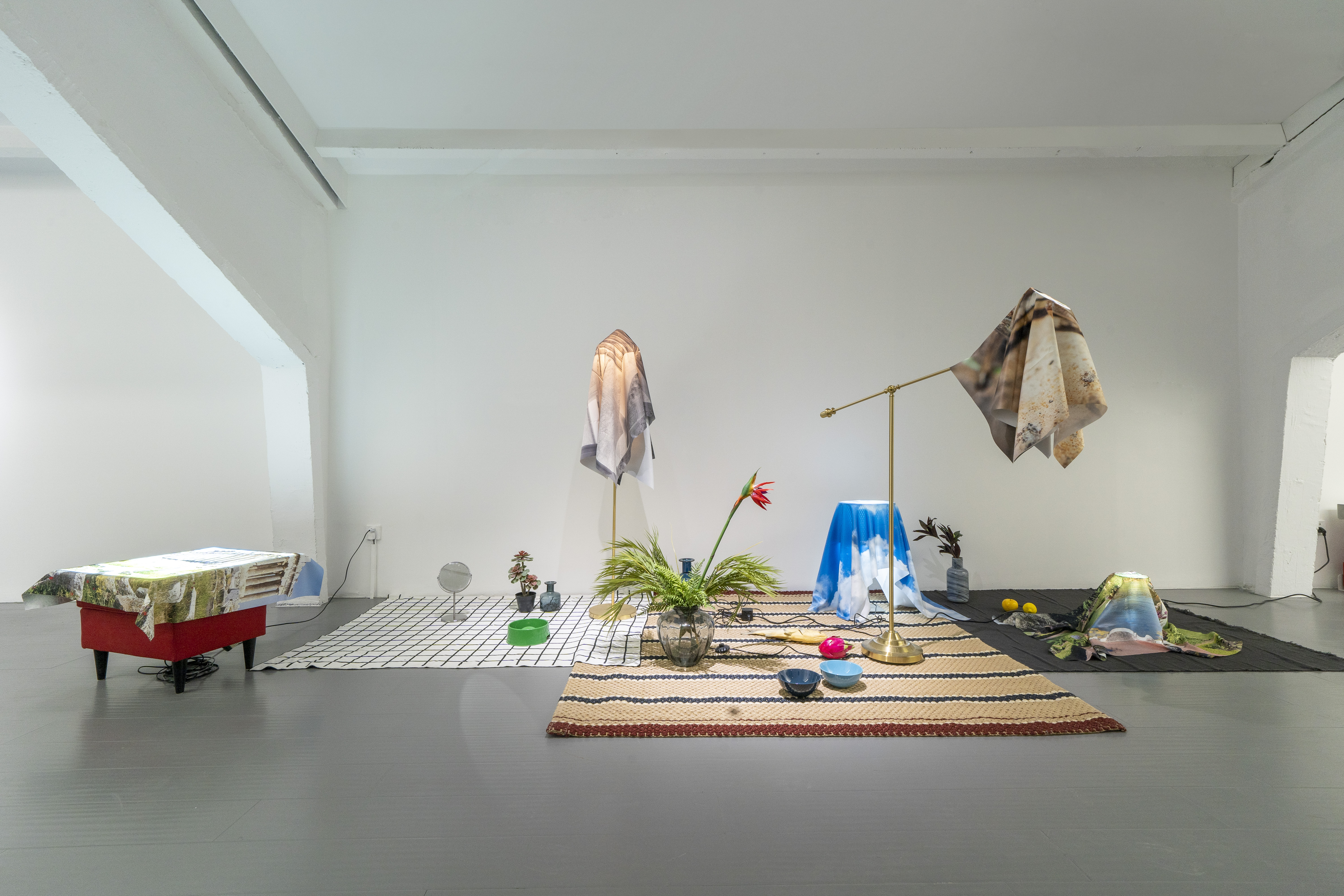
Installation view, Nabuqi: A Question is Also a Form of Sculpture,M WOODS 798, Beijing, 2024, Image courtesy of M WOODS
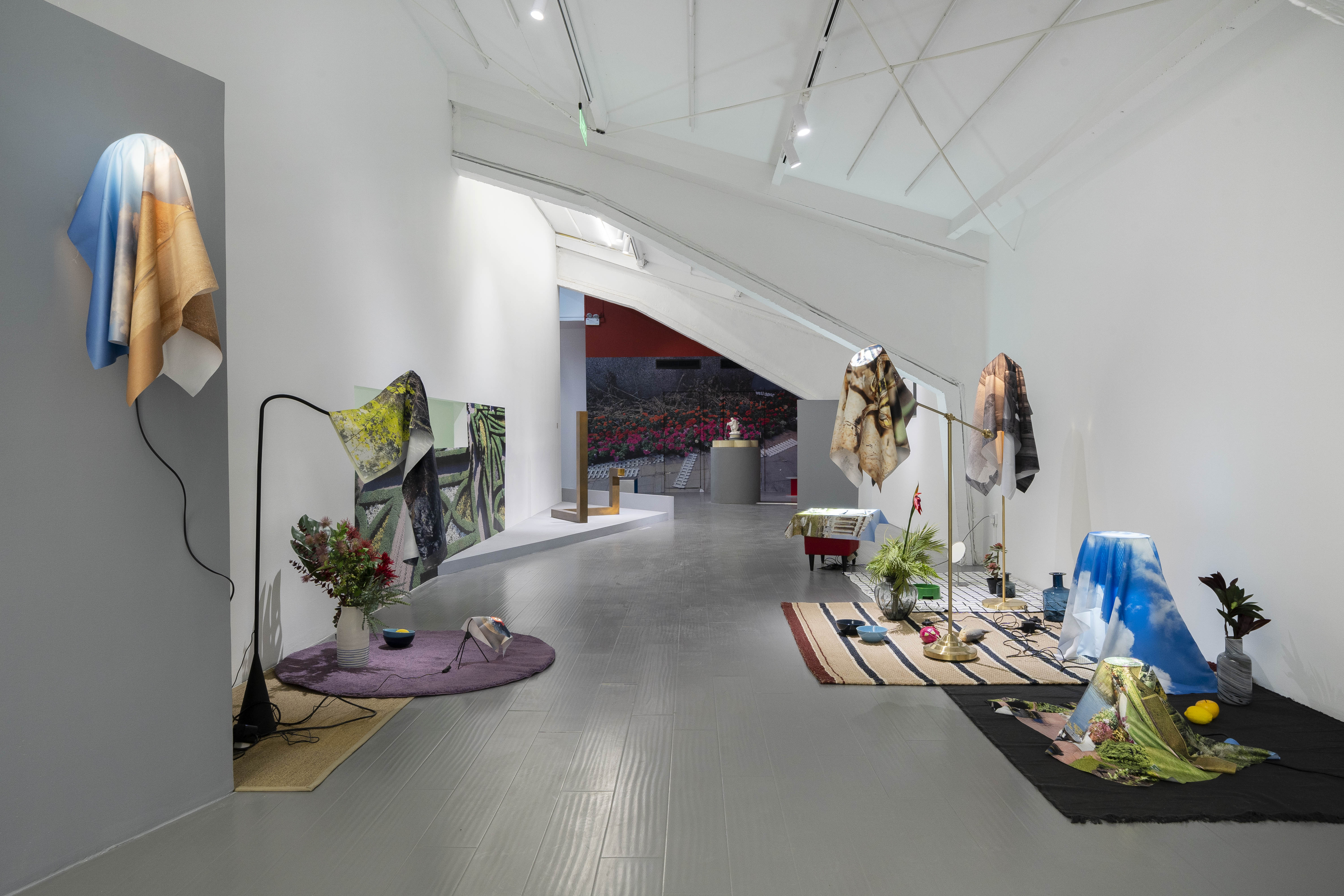
Installation view, Nabuqi: A Question is Also a Form of Sculpture,M WOODS 798, Beijing, 2024, Image courtesy of M WOODS

Installation view, Nabuqi: A Question is Also a Form of Sculpture,M WOODS 798, Beijing, 2024, Image courtesy of M WOODS
-----
About the Artist
Nabuqi was born 1984 in Inner Mongolia, China. She graduated from the Central Academy of Fine Arts in 2013, and currently lives and works in Beijing. Her recent exhibitions include 58th Venice Biennale (Venice, 2019); Cold Nights (UCCA Art Centre, 2017); Absent Paragraph (Museum Beelden aan Zee, 2017); Any Ball (Central Academy of Fine Arts, 2017), The 11th Shanghai Biennale (2016) and the 10th Gwangju Biennale (2016). She has been nominated for the 2016 Art Sanya Huayu Youth Award.
--

Florian Krewer
Nice Dog
Curated by Matthew Higgs, director and chief curator, White Columns, and Victor Wang, artistic & executive director, M WOODS Museum
Assistant curator, Qi Yuanlin
M WOODS 798
December 02, 2023 – March 02, 2024
M WOODS Museum proudly presents “Nice Dog,” the most comprehensive survey of the paintings of Florian Krewer (b. 1986, Gerolstein, Germany) to date, and the artist’s first institutional solo exhibition in Asia. The exhibition is a collaboration with the Aspen Art Museum, which showed the artist's first institutional solo exhibition in the United States earlier this year.
With the New York night as his muse, Krewer paints all the vastness, liberation, and uncertainty it has to offer. Derived from lived experiences and fantasy, the artist creates a seductive world of magical encounters set against the staged backdrops of imagined landscapes and interiors. Primal needs, longing, and precarious interactions are depicted with the greater intention of revealing our collective vulnerabilities.
Exploring the last six years of Krewer’s career, the exhibition features new paintings alongside a selection of paintings from collections around the world. It charts Krewer’s journey since his 2017 graduation from Kunstakademie Düsseldorf, where he studied under the artist Peter Doig. Krewer’s more recent paintings reflect the relentless and often anxious energy of New York, his newfound home.

Installation view, Florian Krewer “Nice Dog”, M WOODS 798, Beijing, 2023, Image courtesy of M WOODS
Exhibited in the urban sprawl of Beijing, Krewer’s work captures the off-beat pulse of city life, portraying figures in varying states of stress and release, ready for the night. In raw and intimate moments, Krewer's characters twist, merge, and engage with animals and shadows. Their actions, fraught with tension, blur the line between personal desires and societal expectations. “Nice Dog” delves deep into this dichotomy, exploring the complex interplay of private passions against the backdrop of public existence.


Installation view, Florian Krewer “Nice Dog”, M WOODS 798, Beijing, 2023, Image courtesy of M WOODS
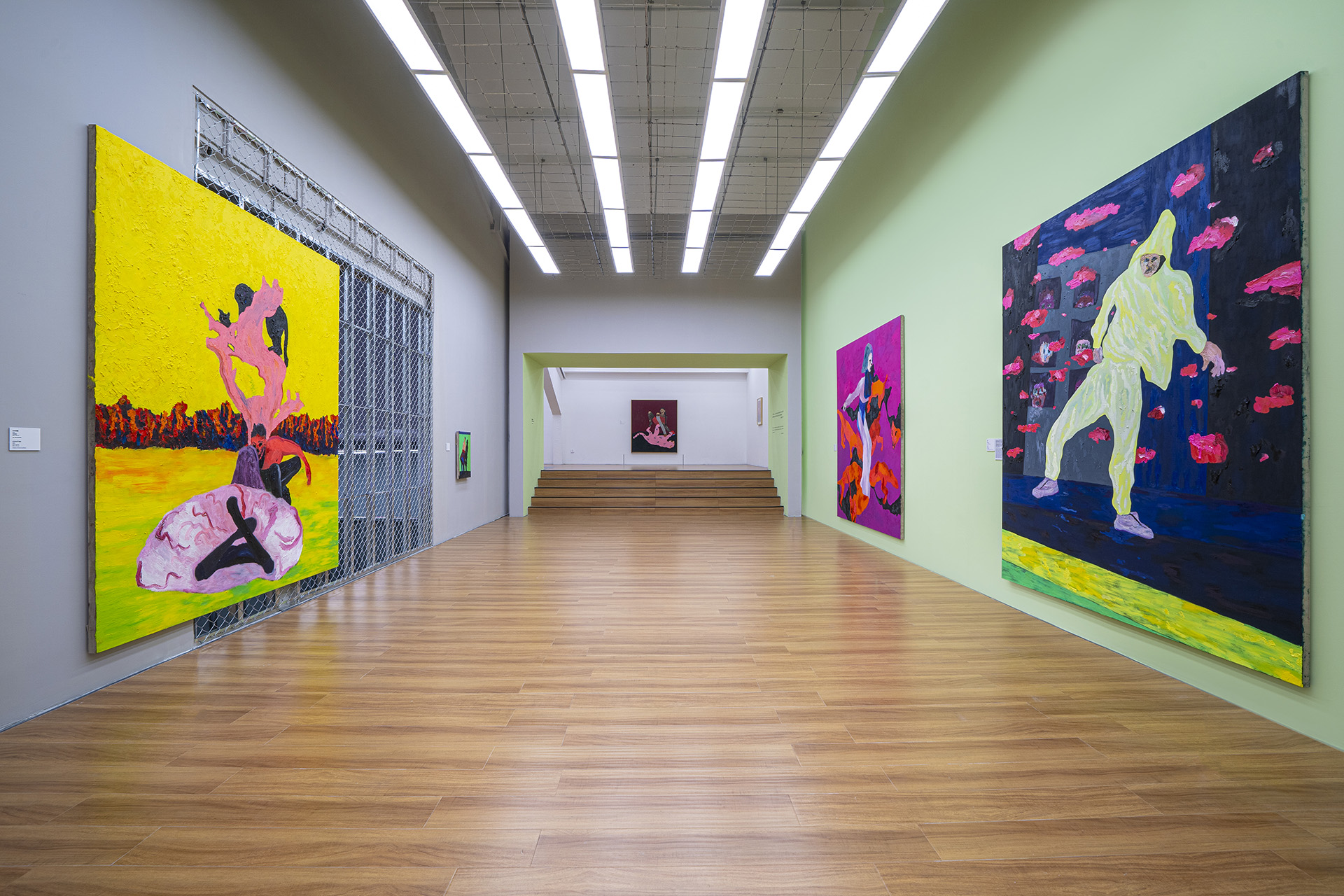
Installation view, Florian Krewer “Nice Dog”, M WOODS 798, Beijing, 2023, Image courtesy of M WOODS
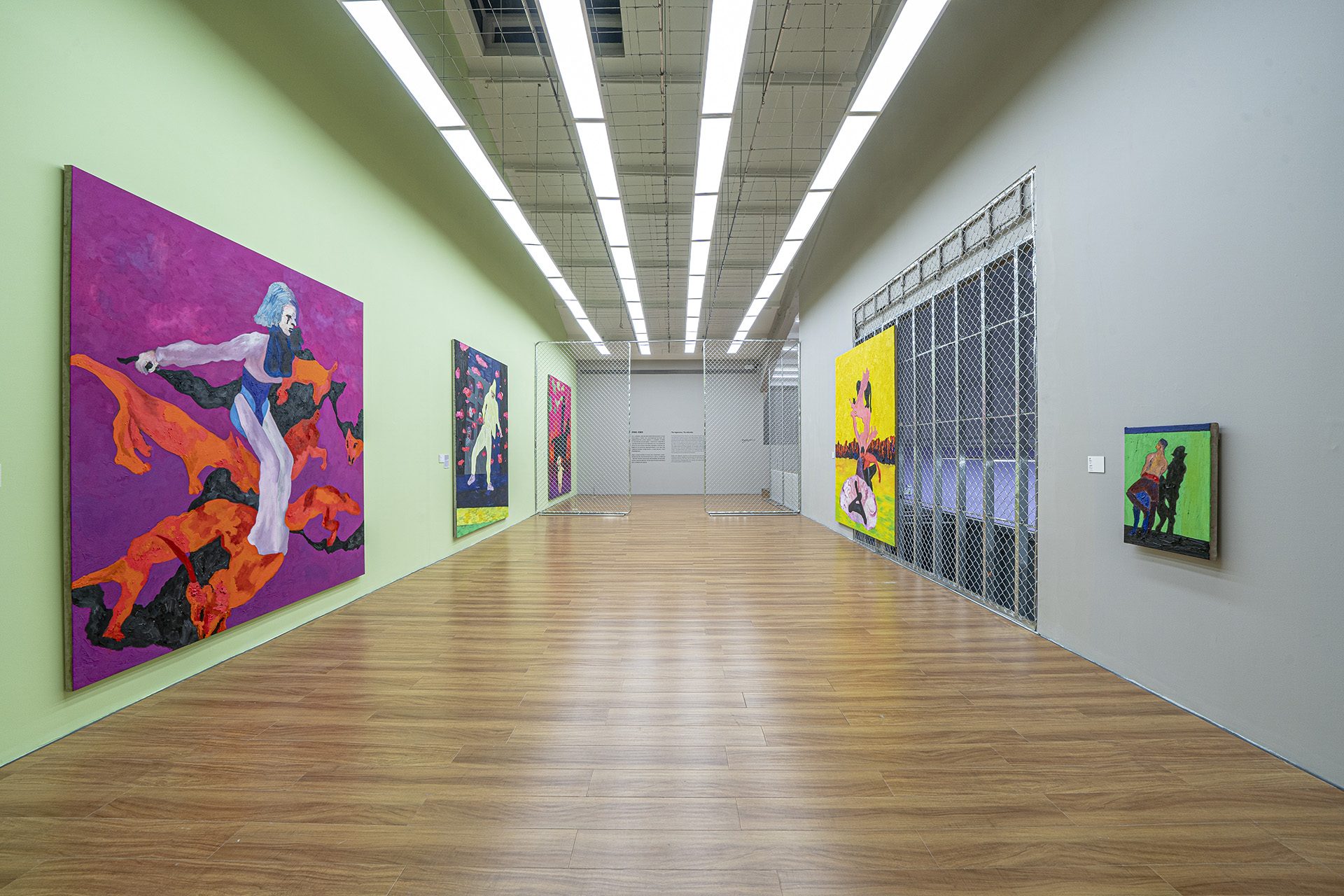
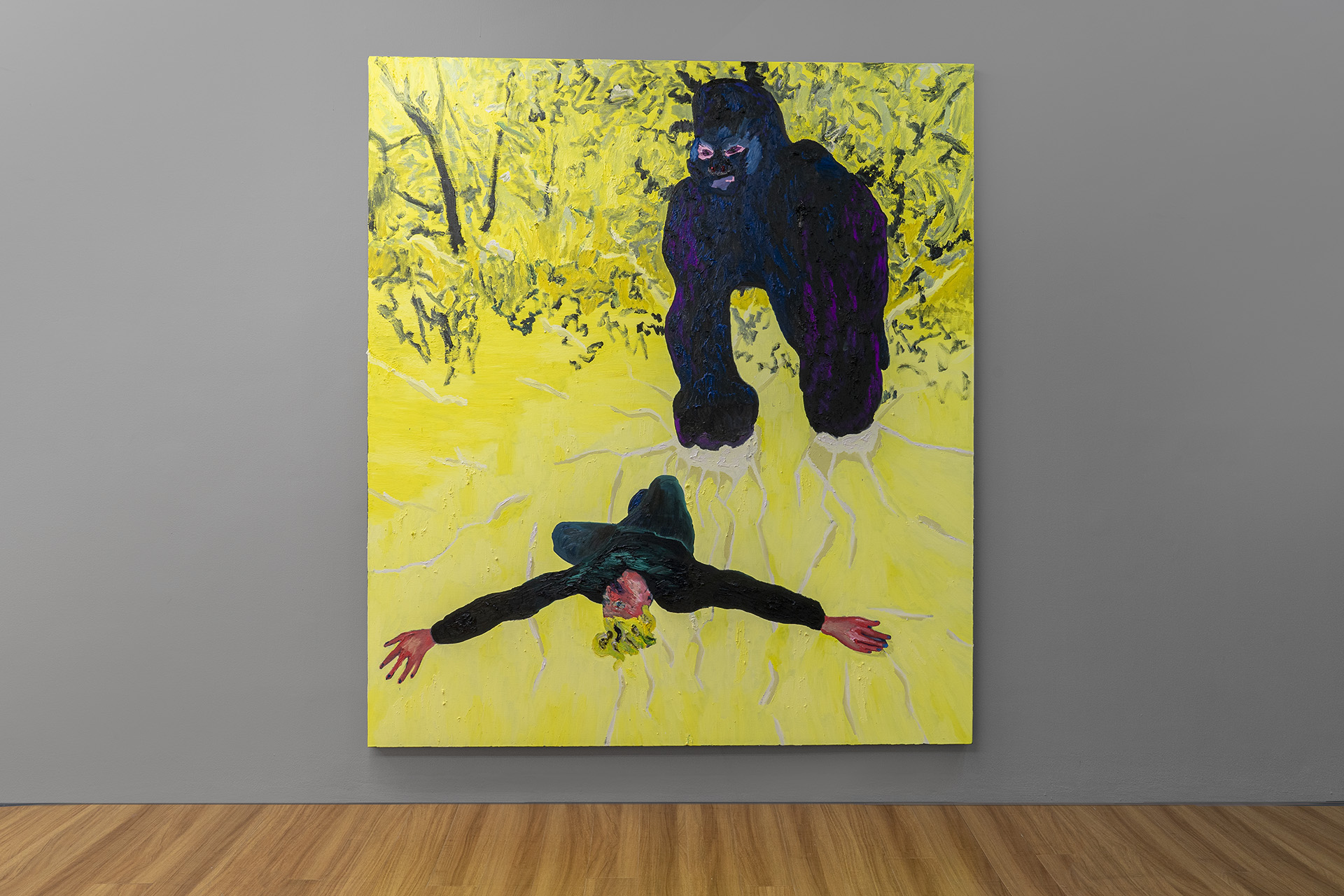
Installation view, Florian Krewer “Nice Dog”, M WOODS 798, Beijing, 2023, Image courtesy of M WOODS

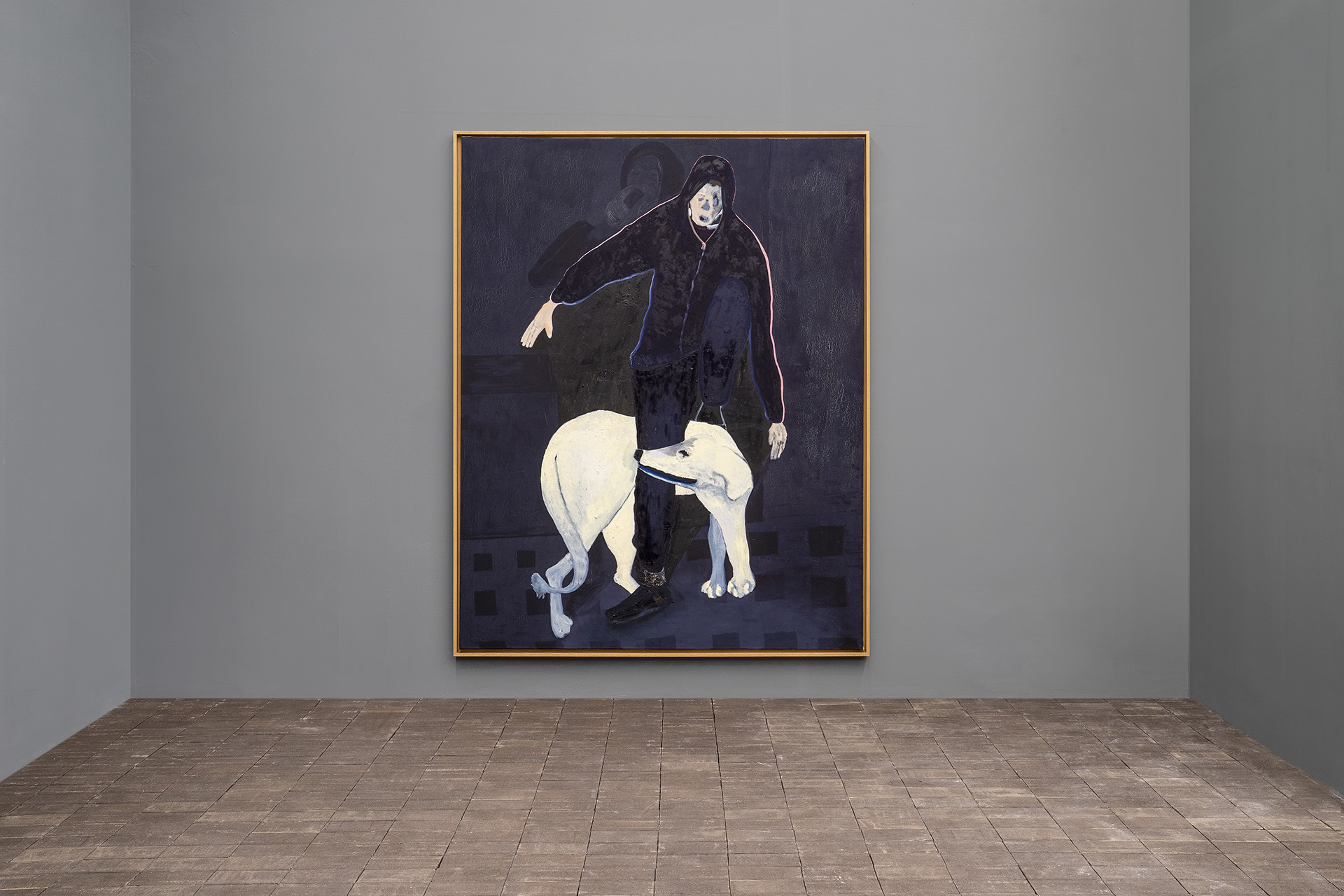

Installation view, Florian Krewer “Nice Dog”, M WOODS 798, Beijing, 2023, Image courtesy of M WOODS
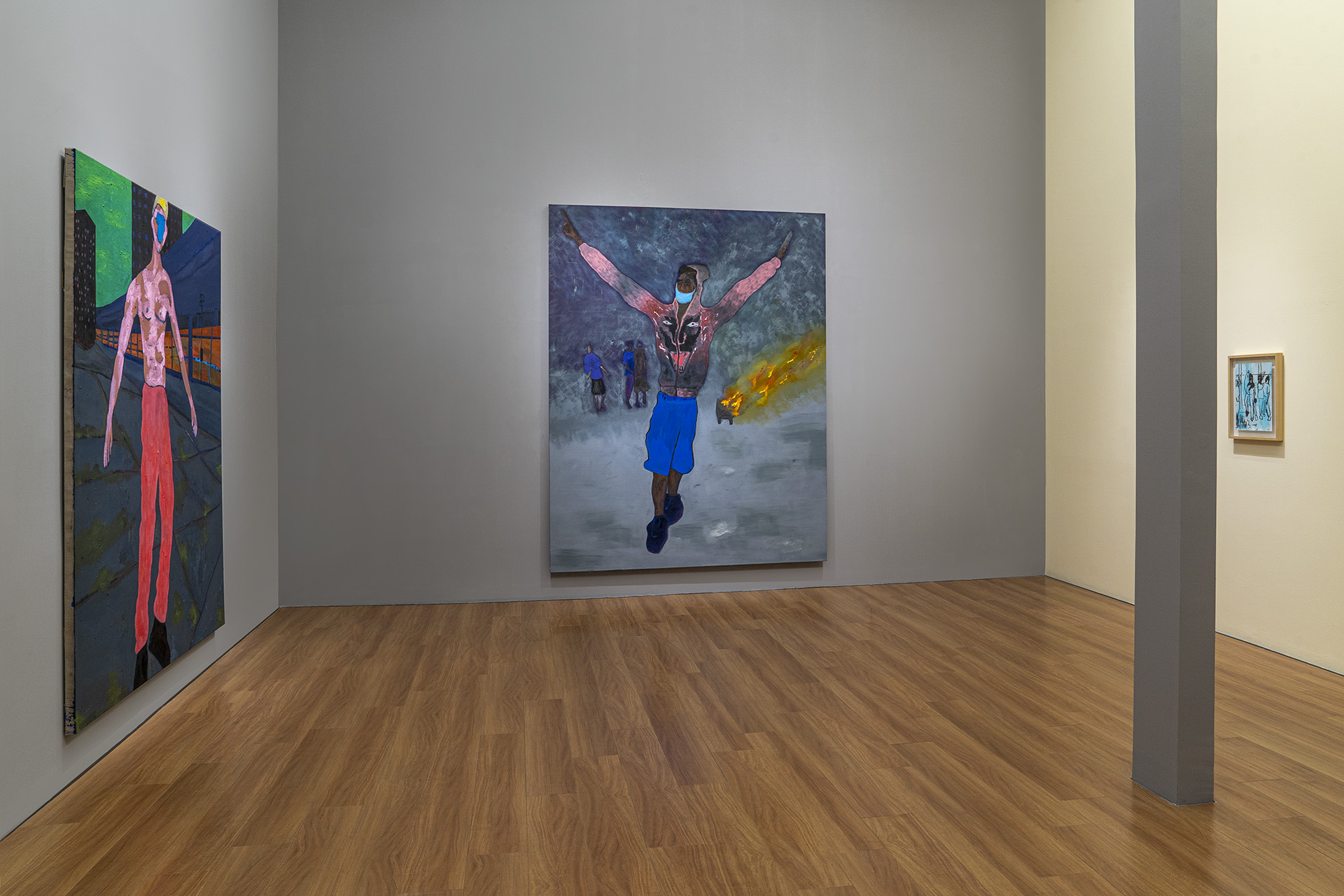

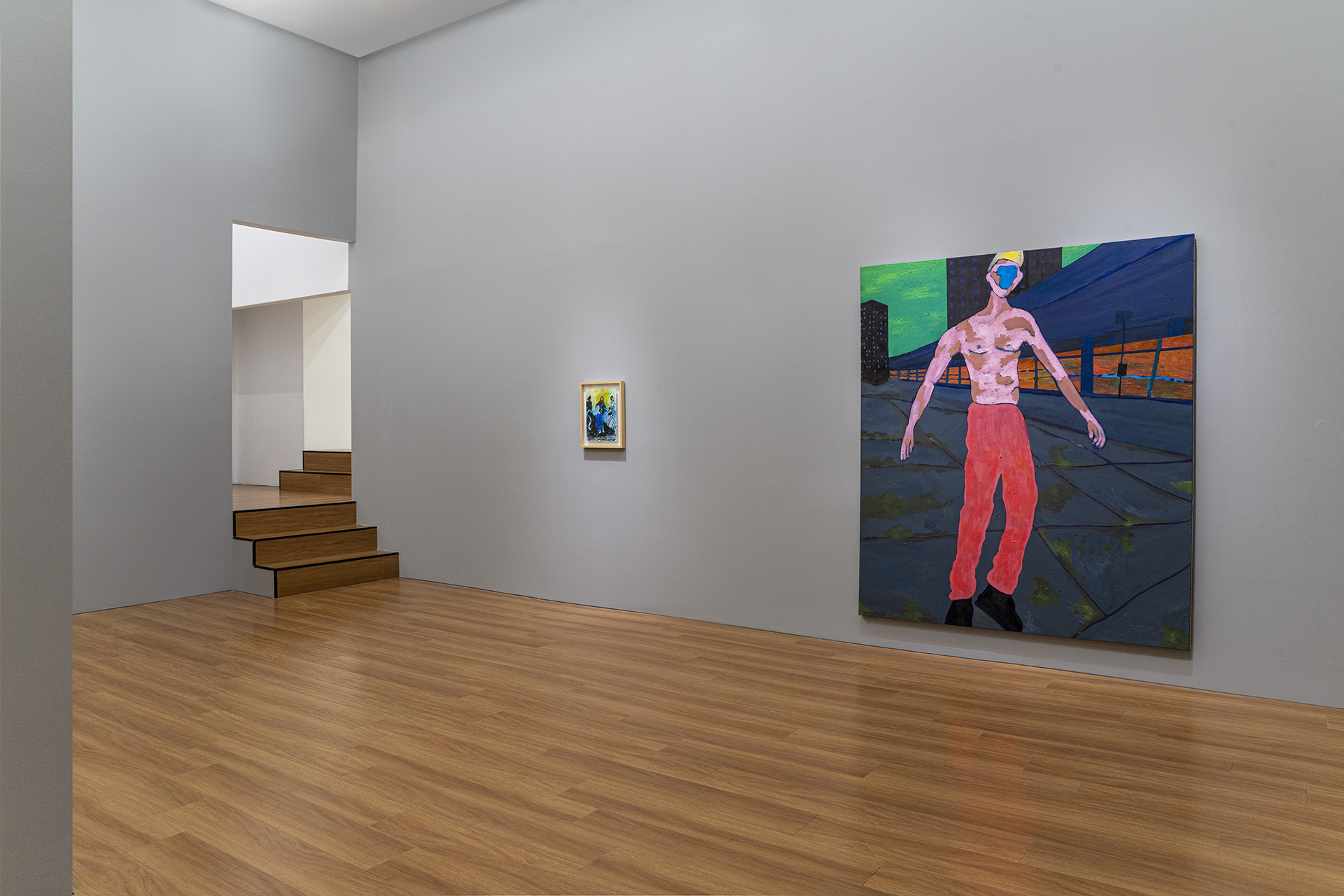
Installation view, Florian Krewer “Nice Dog”, M WOODS 798, Beijing, 2023, Image courtesy of M WOODS
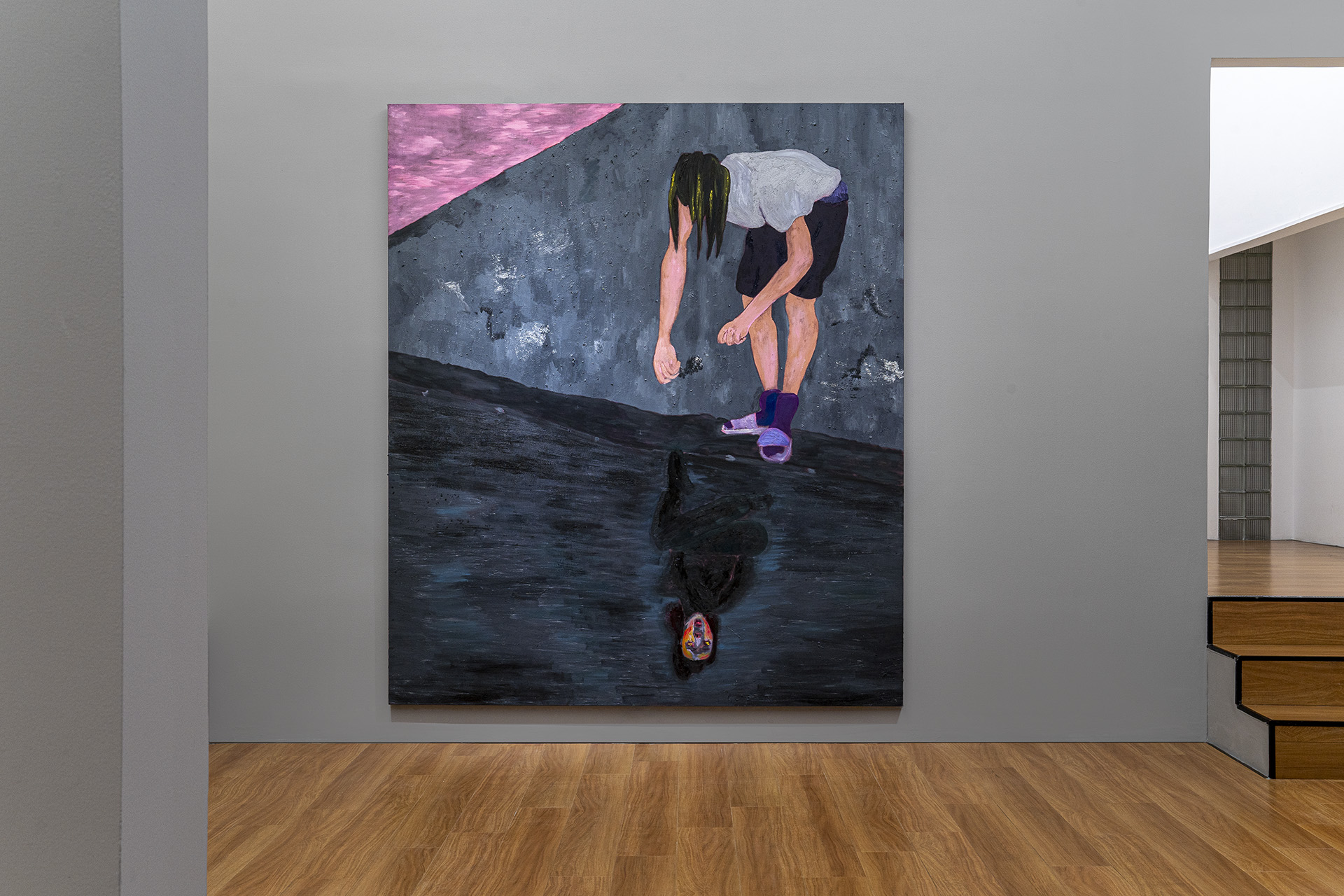
Installation view, Florian Krewer “Nice Dog”, M WOODS 798, Beijing, 2023, Image courtesy of M WOODS
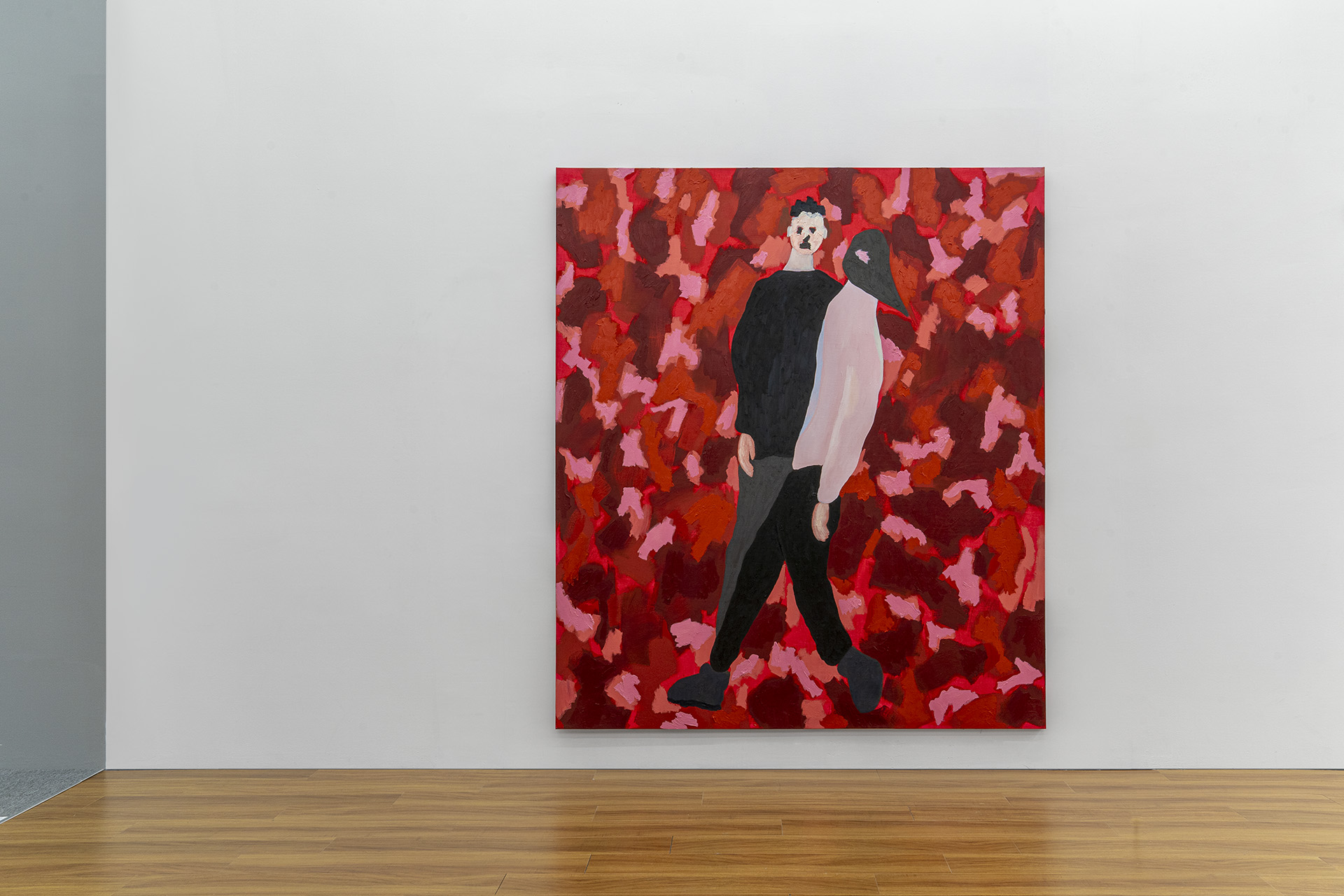
Installation view, Florian Krewer “Nice Dog”, M WOODS 798, Beijing, 2023, Image courtesy of M WOODS
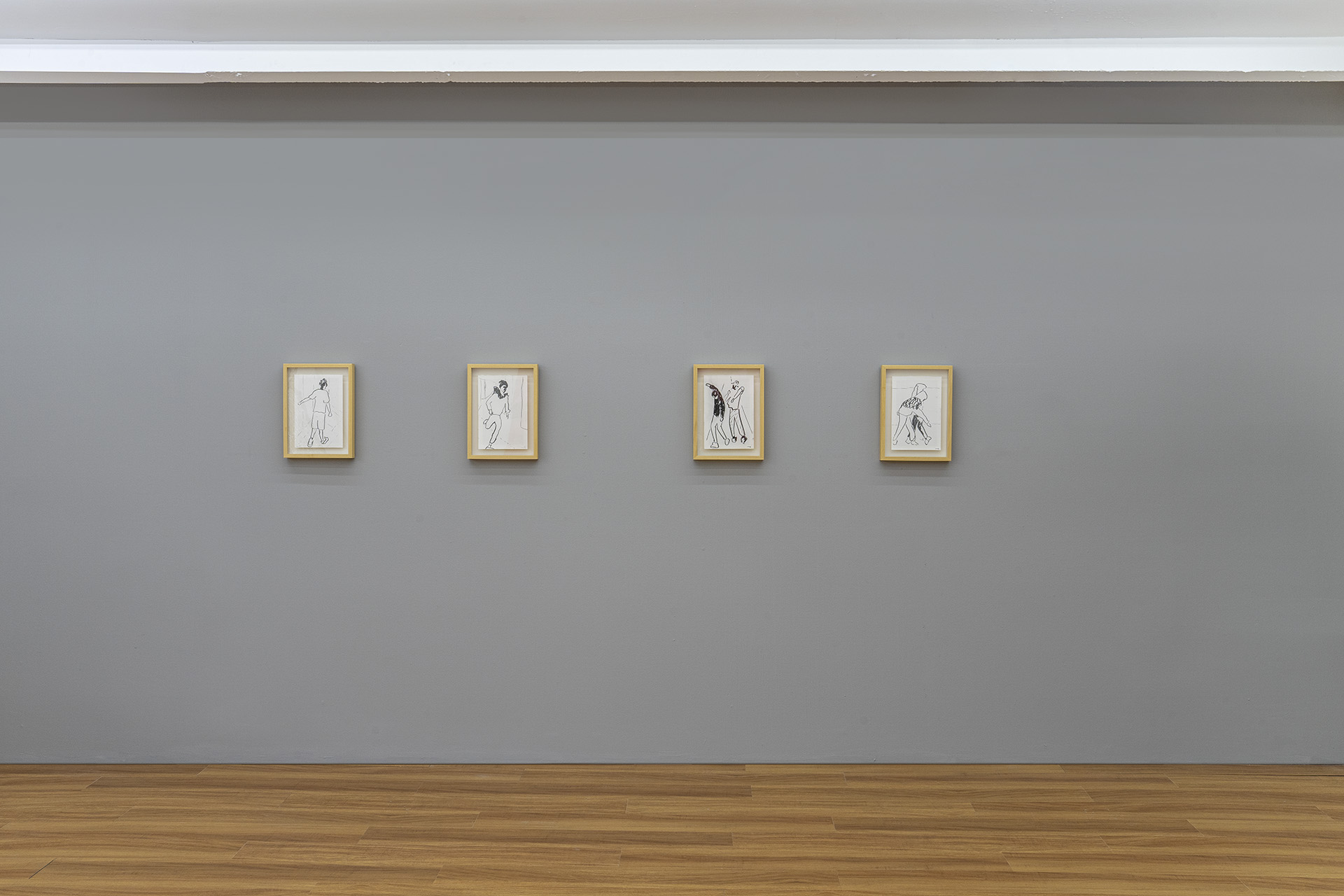

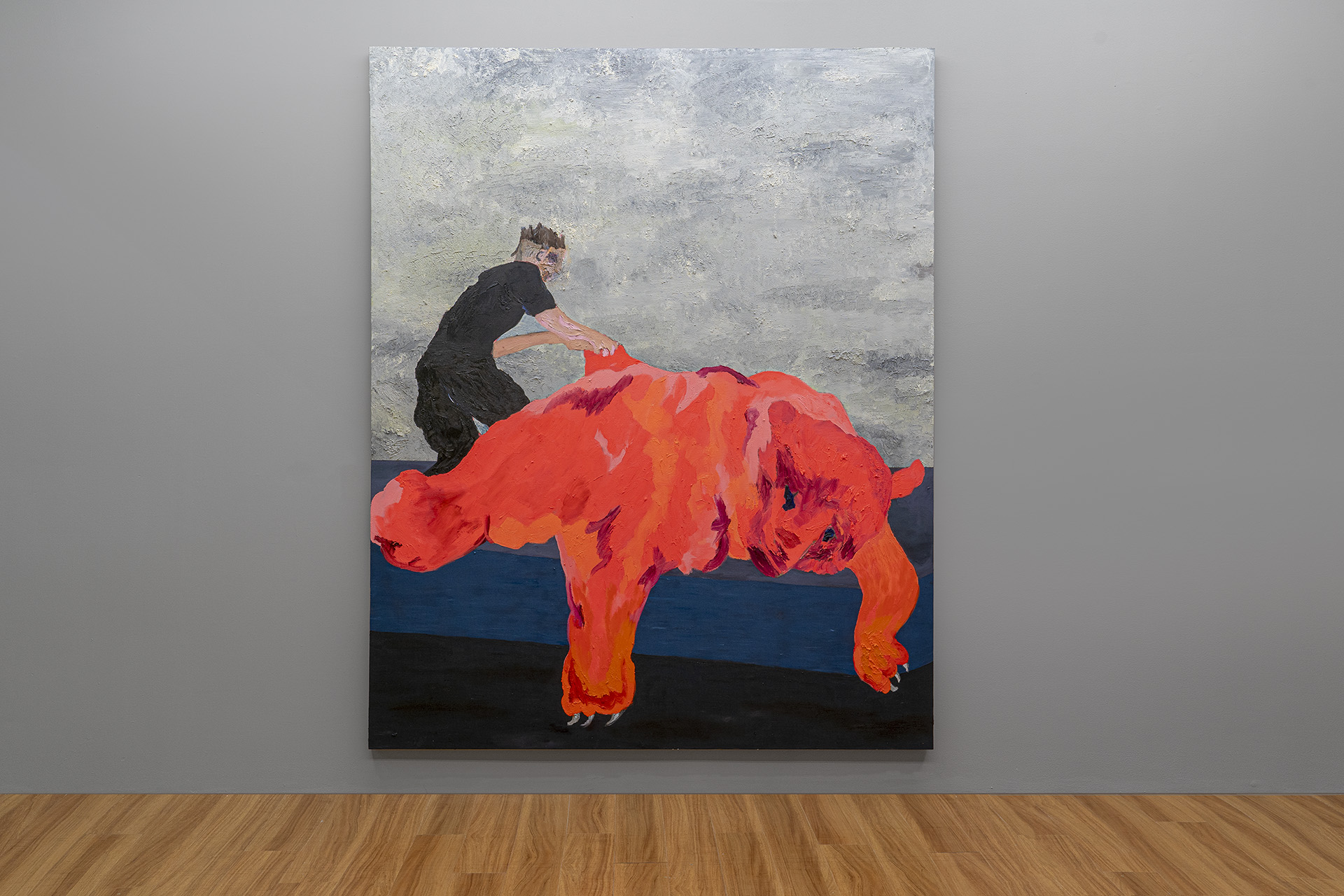
Installation view, Florian Krewer “Nice Dog”, M WOODS 798, Beijing, 2023, Image courtesy of M WOODS
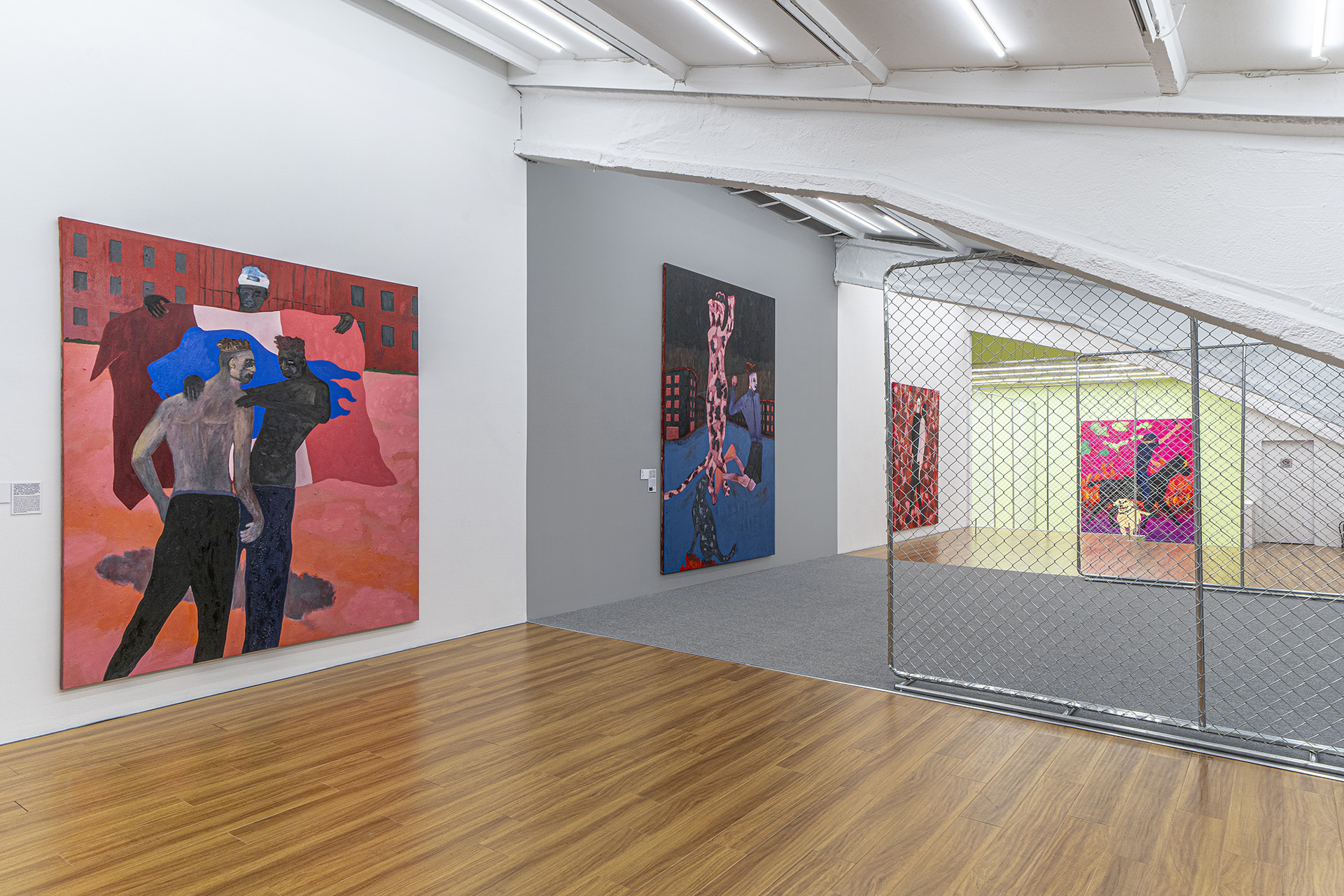
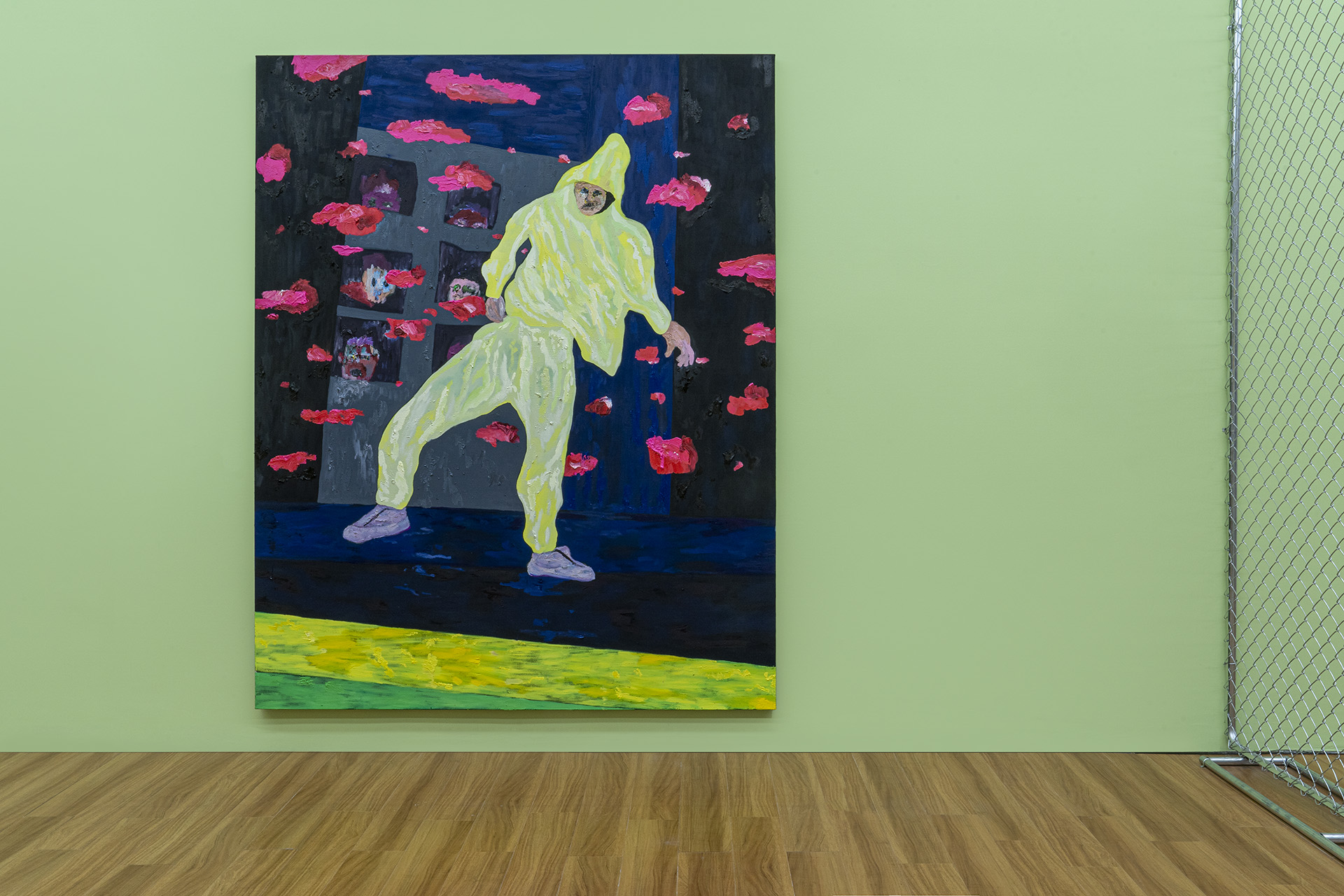

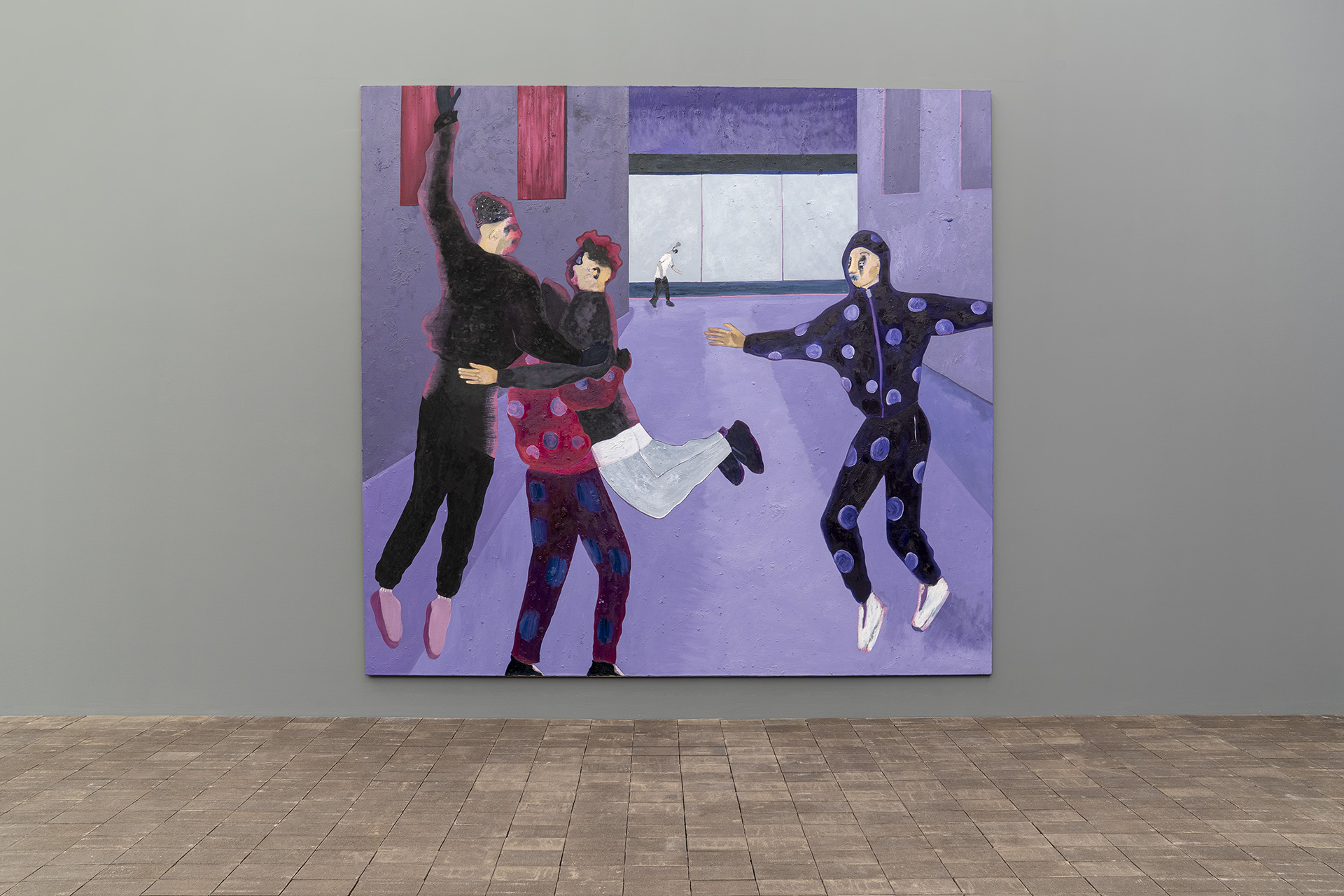
Installation view, Florian Krewer “Nice Dog”, M WOODS 798, Beijing, 2023, Image courtesy of M WOODS
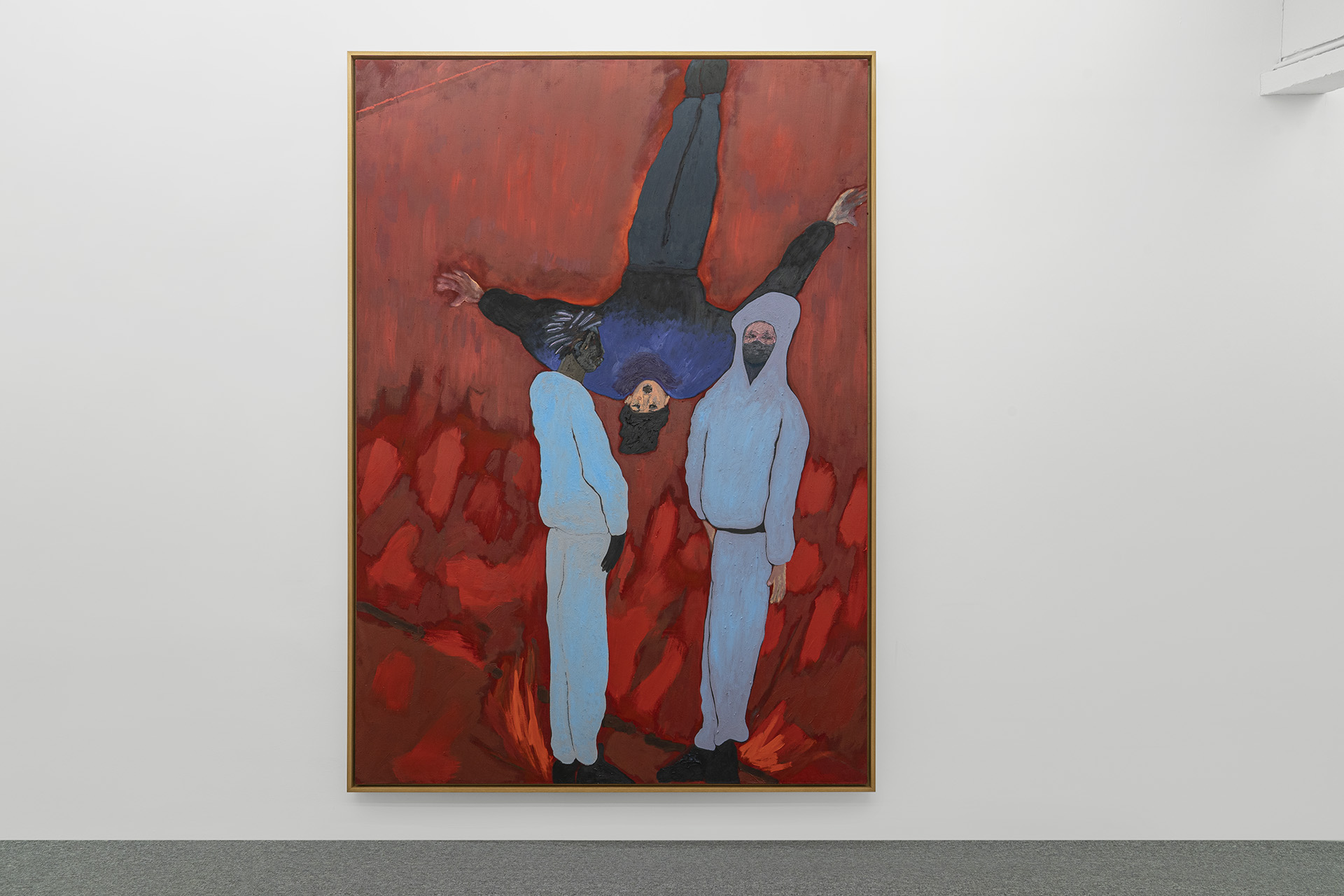
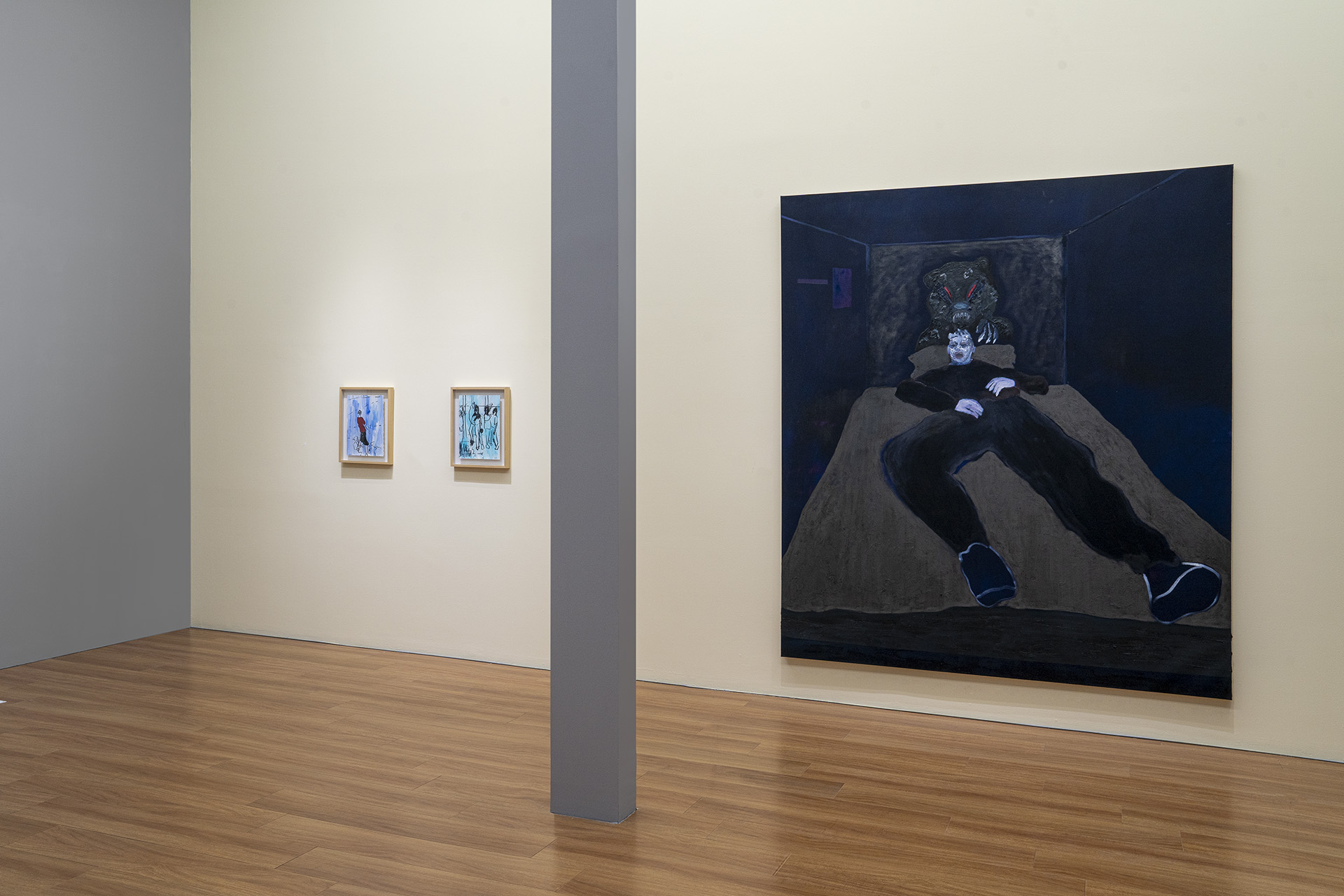

Installation view, Florian Krewer “Nice Dog”, M WOODS 798, Beijing, 2023, Image courtesy of M WOODS



Installation view, Florian Krewer “Nice Dog”, M WOODS 798, Beijing, 2023, Image courtesy of M WOODS
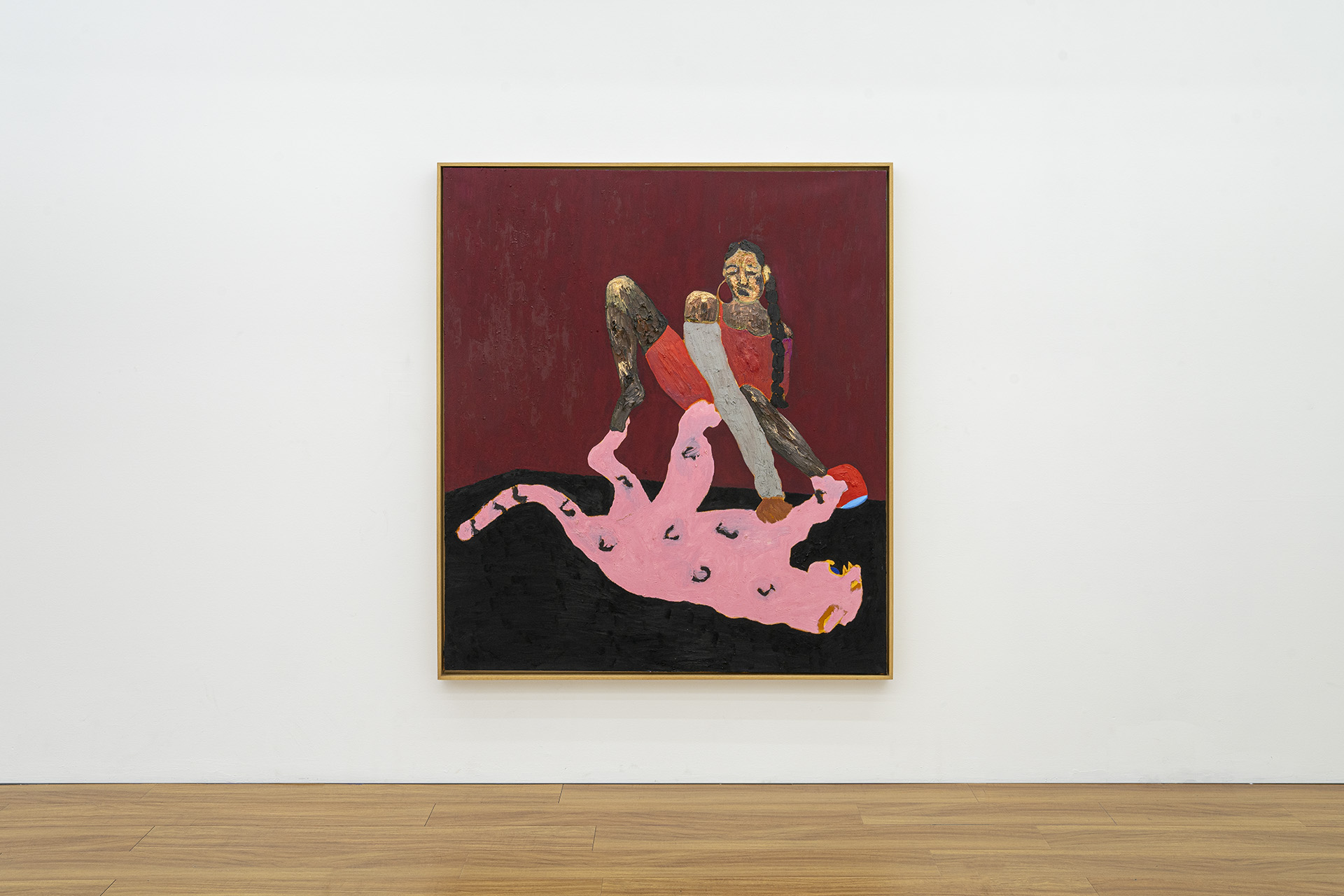
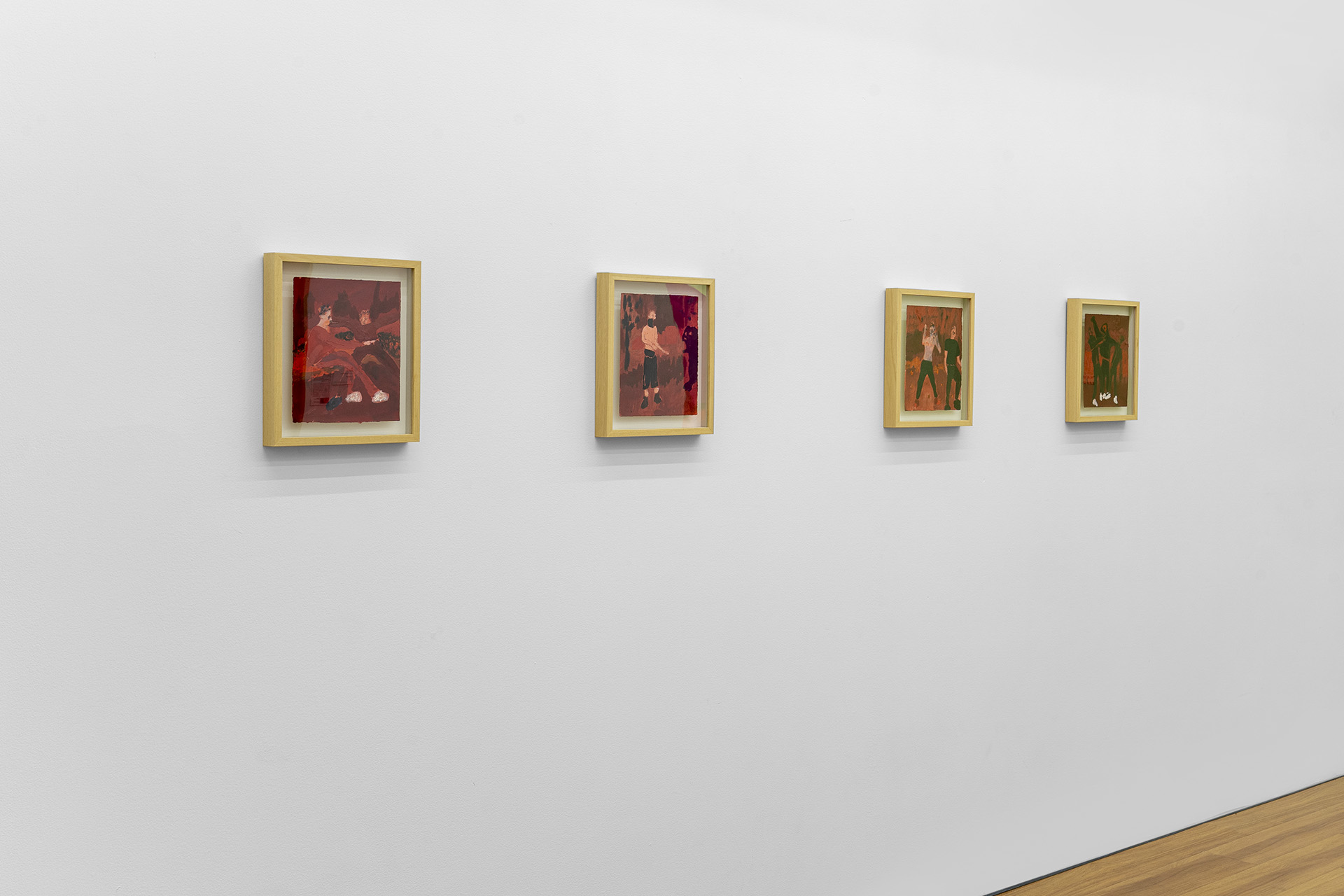
Installation view, Florian Krewer “Nice Dog”, M WOODS 798, Beijing, 2023, Image courtesy of M WOODS
-----
About the Artist
Florian Krewer’s work is held in important public collections worldwide. Recent solo exhibitions include light the ocean, Michael Werner Gallery, New York; everybody rise, Aspen Art Museum; Es liebt Dich und Deine Körperlichkeit ein Verwirrter, Kunsthalle Düsseldorf; and ride or fly, Michael Werner Gallery, London. The artist is the 2022 recipient of the Prix Jean-François Prat awarded by the Bredin Prat Foundation, Paris, and currently lives and works in the South Bronx, New York.
About Aspen Art Museum
Located in Aspen, Colorado, USA, Aspen Art Museum is an artist-founded institution dedicated to supporting artists in the development of bold ideas to shape our museum and the field of art today. As an exhibition-focused, non-collecting museum, we are positioned to make strong commitments to meaningful exchange, both responding to—and driving—cultural change.
With special support from Michael Werner Gallery.
--
Ryuichi Sakamoto:
SOUND
AND TIME
With collaborative works by Shiro Takatani | Daito Manabe | Zakkubalan |
Apichatpong Weerasethakul
Curated by Sachiko Namba and Victor Wang
M WOODS (People’s Park), Chengdu
30 July, 2023 - 5 January, 2024

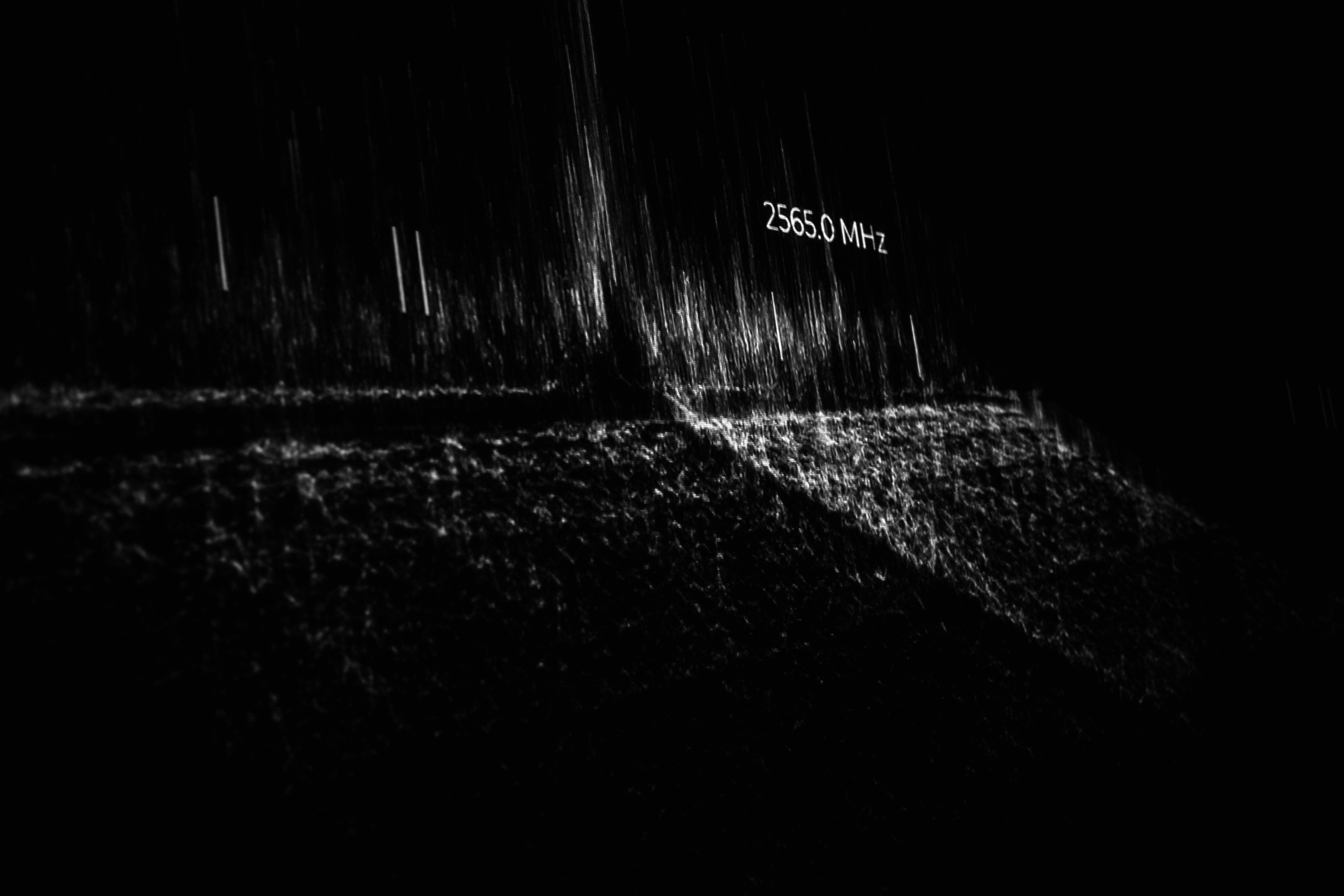

.
We are pleased to announce pioneering Japanese composer and artist Ryuichi Sakamoto’s solo show “SOUND AND TIME” as the inaugural exhibition of the newly founded M WOODS (People’s Park), Chengdu. Two years after the debut of Sakamoto’s artwork in China at M WOODS (Hutong), Beijing, “SOUND AND TIME” evolved and developed out of the previous iteration, serving as a large-scale retrospective that comprehensively presents Sakamoto’s artistic career in both an experiential and rhetorical sense.
During his more than 50 years of artistic career, Sakamoto continues to defy conventional boundaries between different disciplines and modes of artistic expression, radically transforming the way we think about creative practice and the potential of art. Rather than a linear chronological overview, the exhibition, not unlike his works, weaves together a diverse network that combines and connects different times and spaces.
The exhibition will focus on eight large-scale sound installations made in collaboration with fellow celebrated artists, among which a new outdoor site-specific installation made specifically for this exhibition will be shown for the first time.


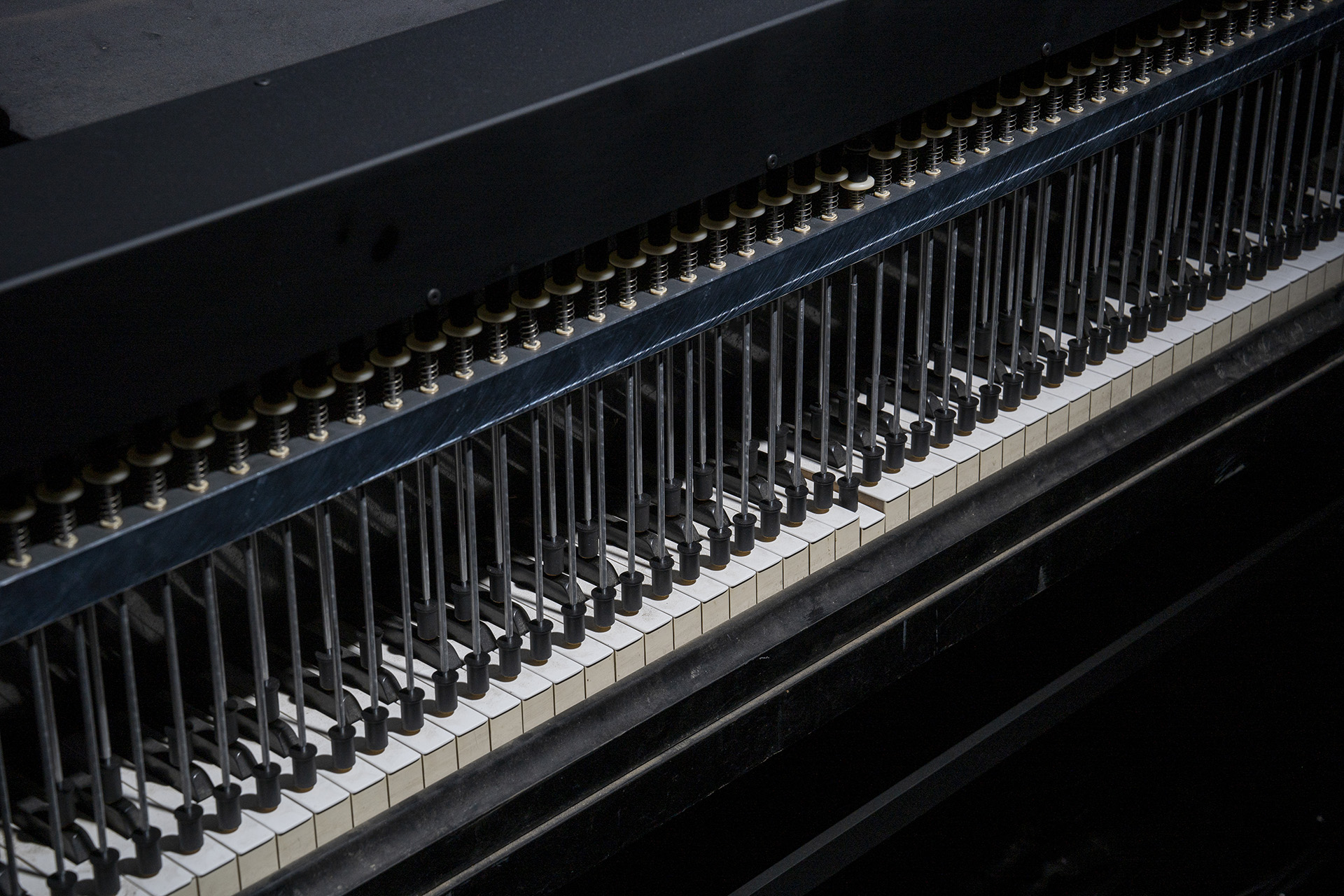
Installation view, IS YOUR TIME, 2017/2023, Ryuichi Sakamoto + Shiro Takatani, “Ryuichi Sakamoto | SOUND AND TIME,” M WOODS (People’s park), Chengdu, 2023, Image courtesy of M WOODS
About the artist:
Ryuichi Sakamoto was a composer, producer, artist, and environmental activist born in Tokyo. Making his debut in 1978 with the album Thousand Knives, Sakamoto's diverse résumé includes pioneering electronic works in the legendary techno group Yellow Magic Orchestra, producing globally-inspired pop albums and numerous classical compositions, two operas, and nearly 45 original film scores for directors, including Bernardo Bertolucci, Pedro Almodóvar, Brian De Palma, and Alejandro González Iñárritu. His film soundtracks have won prestigious awards, including an Academy Award, two Golden Globes, and many more.
Sakamoto made considerable contributions to the art world with both solo and collaborative installations and multi-piece exhibitions presented in galleries and museums worldwide. Most recently, M WOODS, Beijing, presented the largest and most comprehensive collection spanning 30 years devoted to Sakamoto's artworks in various media, centering around 8 large-scale sound installations.
Premiering at the Holland Festival 2021, Sakamoto and longtime collaborator Shiro Takatani presented a new theater piece, TIME. TIME continues to tour the world, bringing the artist duo’s last collaboration to long-time and new fans alike.
On January 17th, 2023, his 71st birthday, Ryuichi released “12", his 15th solo album. The new album is a collection of 12 songs selected from musical sketches Sakamoto recorded like a sound diary during his two-and-a-half-year battle with cancer.
Ryuichi Sakamoto passed away in March 2023 at the age of 71.
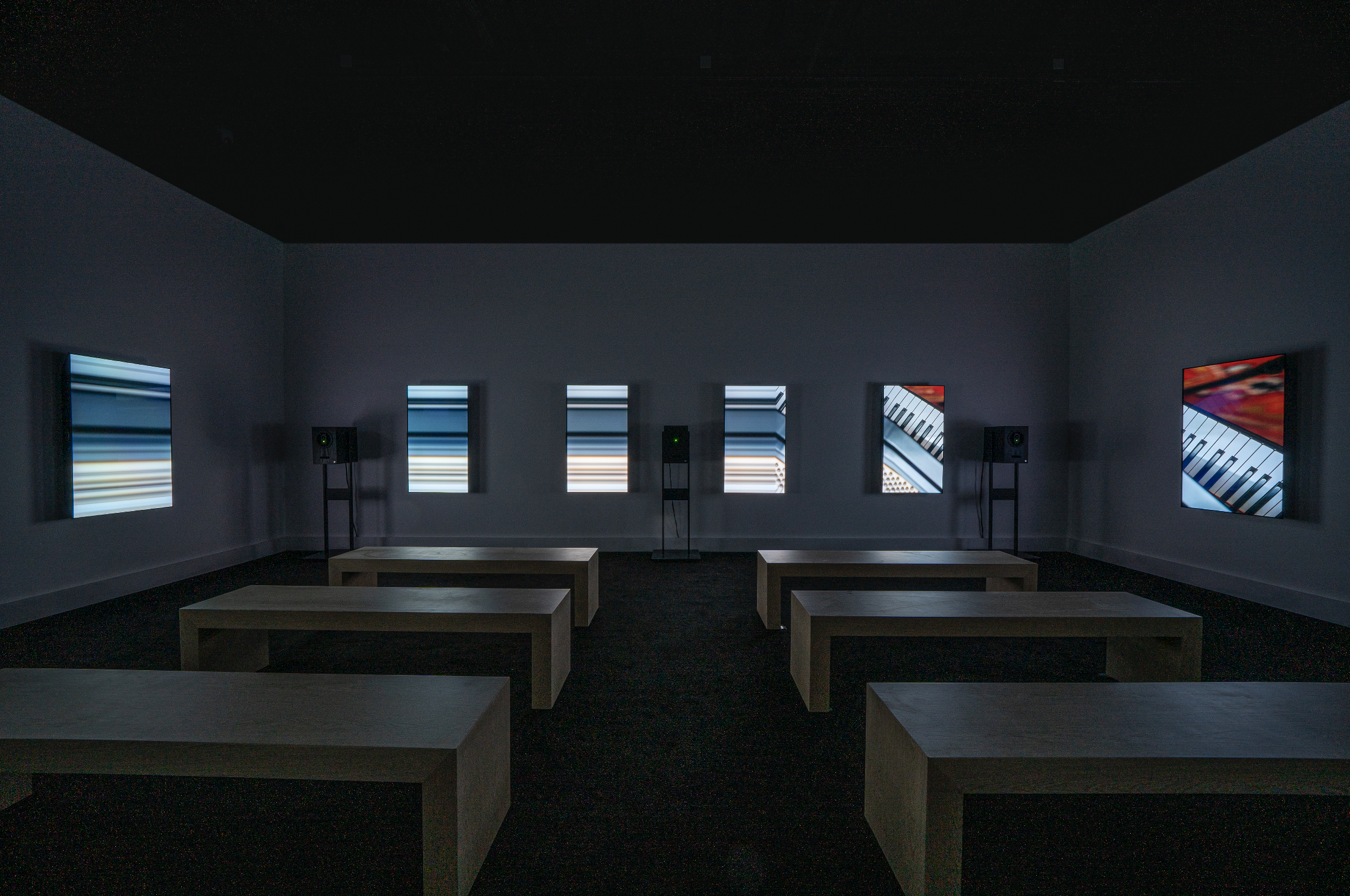
Installation view, async – drowning , 2017, Ryuichi Sakamoto + Shiro Takatani,“Ryuichi Sakamoto | SOUND AND TIME,” M WOODS (People’s park), Chengdu, 2023. Image courtesy of M WOODS



Installation view, water state 1, 2013, Ryuichi Sakamoto + Shiro Takatani, “Ryuichi Sakamoto | SOUND AND TIME,” M WOODS (People’s park), Chengdu, 2023. Image courtesy of M WOODS

Installation view, LIFE – fluid, invisible, inaudible… 2007/2023,Ryuichi Sakamoto + Shiro Takatani, “Ryuichi Sakamoto | SOUND AND TIME,” M WOODS (People’s park), Chengdu, 2023. Image courtesy of M WOODS
Installation view, LIFE – fluid, invisible, inaudible… 2007/2023,Ryuichi Sakamoto + Shiro Takatani, “Ryuichi Sakamoto | SOUND AND TIME,” M WOODS (People’s park), Chengdu, 2023. Image courtesy of M WOODS


Installation view, LIFE – fluid, invisible, inaudible… 2007/2023,Ryuichi Sakamoto + Shiro Takatani, “Ryuichi Sakamoto | SOUND AND TIME,” M WOODS (People’s park), Chengdu, 2023. Image courtesy of M WOODS
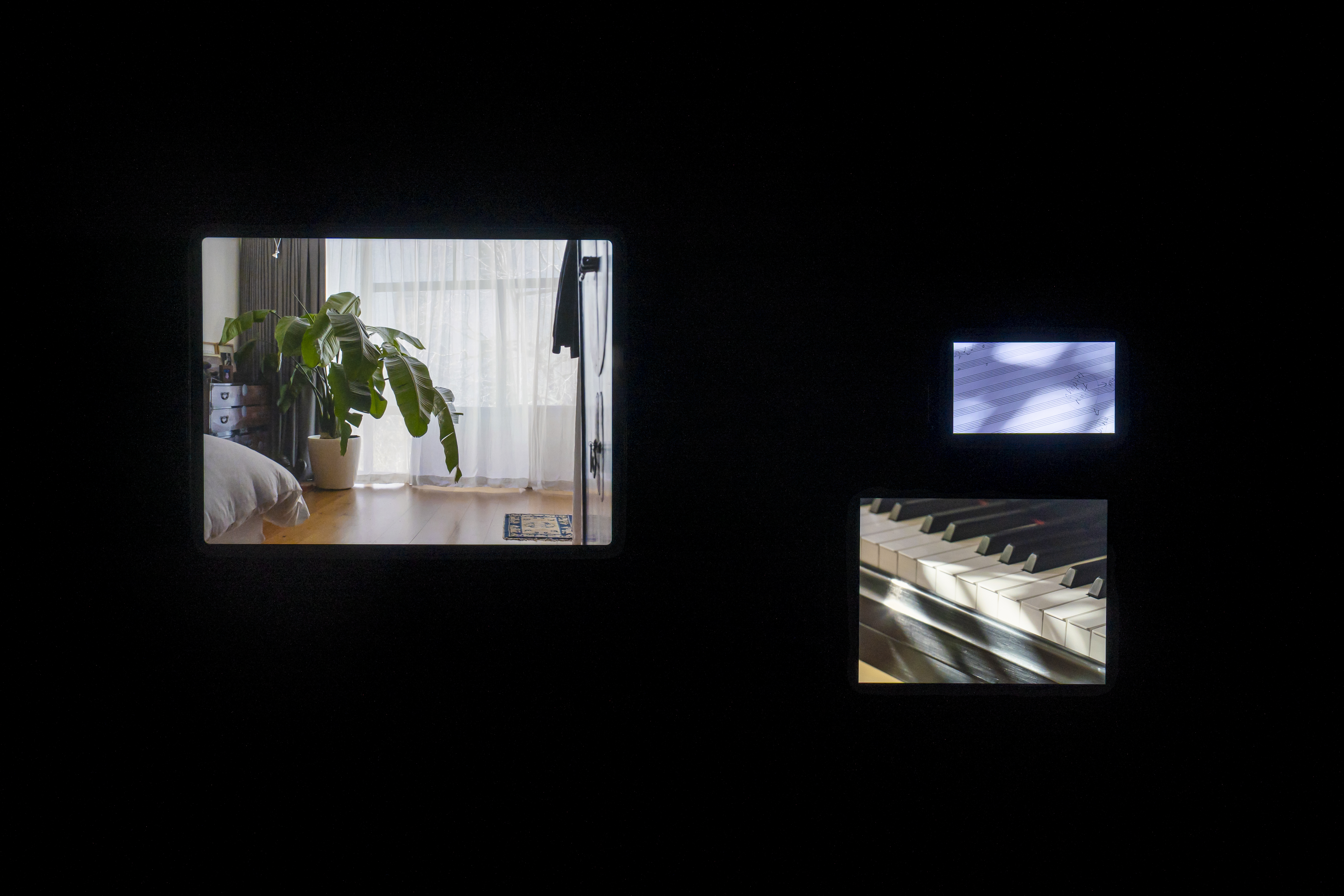
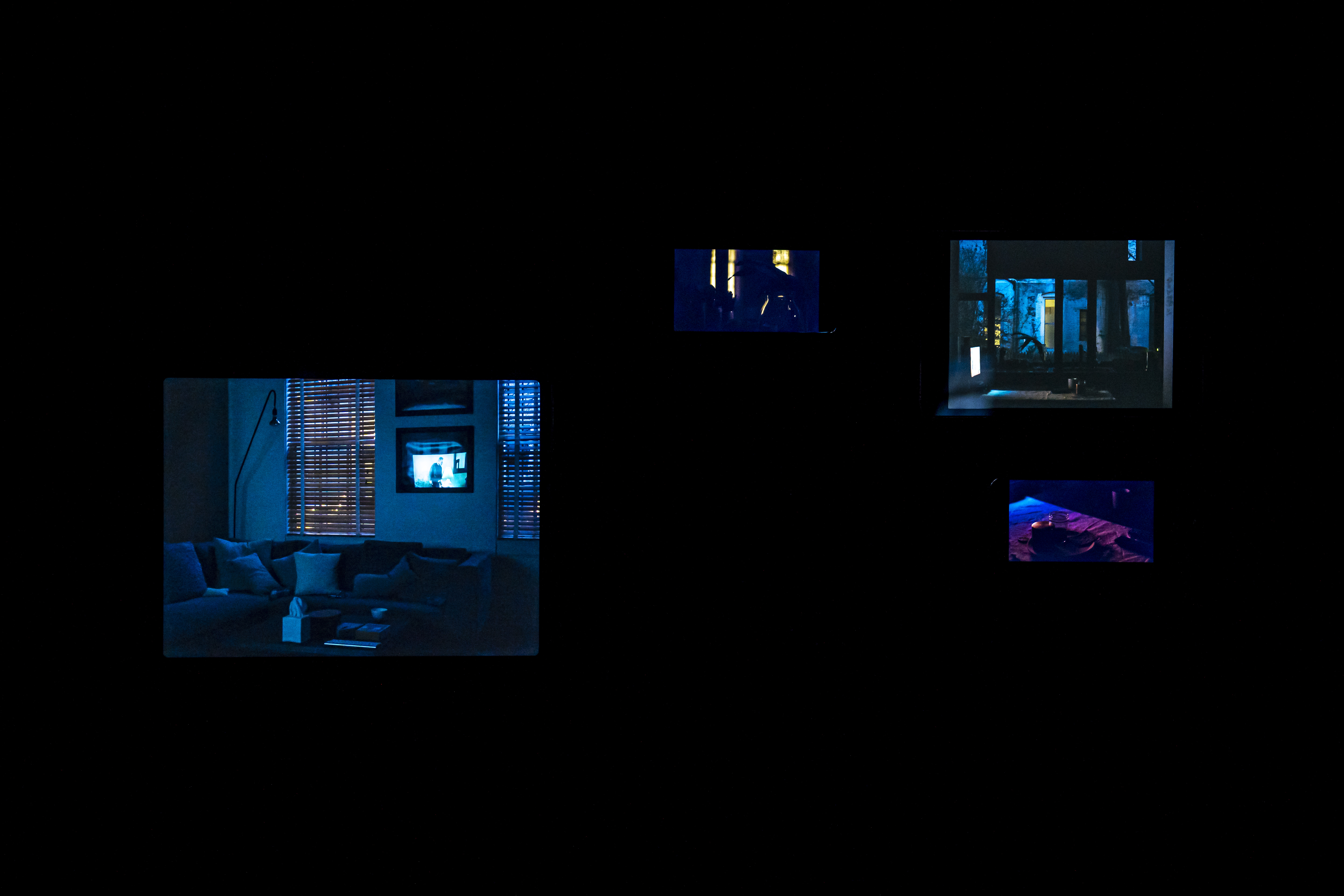
Installation view, async – volume, 2017, Ryuichi Sakamoto + Zakkubalan, “Ryuichi Sakamoto | SOUND AND TIME,” M WOODS (People’s park), Chengdu, 2023. Image courtesy of M WOODS

Installation view, TIME-déluge,2023, Ryuichi Sakamoto + Shiro Takatani, “Ryuichi Sakamoto | SOUND AND TIME,” M WOODS (People’s park), Chengdu, 2023. Image courtesy of M WOODS.

Installation view, TIME-déluge,2023, Ryuichi Sakamoto + Shiro Takatani, “Ryuichi Sakamoto | SOUND AND TIME,” M WOODS (People’s park), Chengdu, 2023. Image courtesy of M WOODS.

Installation view, async – first light, 2017, Ryuichi Sakamoto + Apichatpong Weerasethakul, “Ryuichi Sakamoto | SOUND AND TIME,” M WOODS (People’s park), Chengdu, 2023. Image courtesy of M WOODS
-----
Ryuichi Sakamoto:
SOUND
AND TIME
With collaborative works by Shiro Takatani | Daito Manabe | Zakkubalan | Apichatpong Weerasethakul
Head of Exhibition Program: Wanwan Lei
Curated by Sachiko Namba and Victor Wang
Exhibition Director: Deng Yingying
Organized by:
M WOODS Museum
Co-organized by:
Kab Inc. / Kab America Inc.
Cooperated by:
dumb type office
Yamaguchi Center for Arts and Media [YCAM]
NTT InterCommunication Center [ICC]
SAPPORO CULTURAL ARTS COMMUNITY CENTER(Sapporo Cultural Arts Foundation)
PROCESSART INC.
Rhizomatiks
Commmons
--
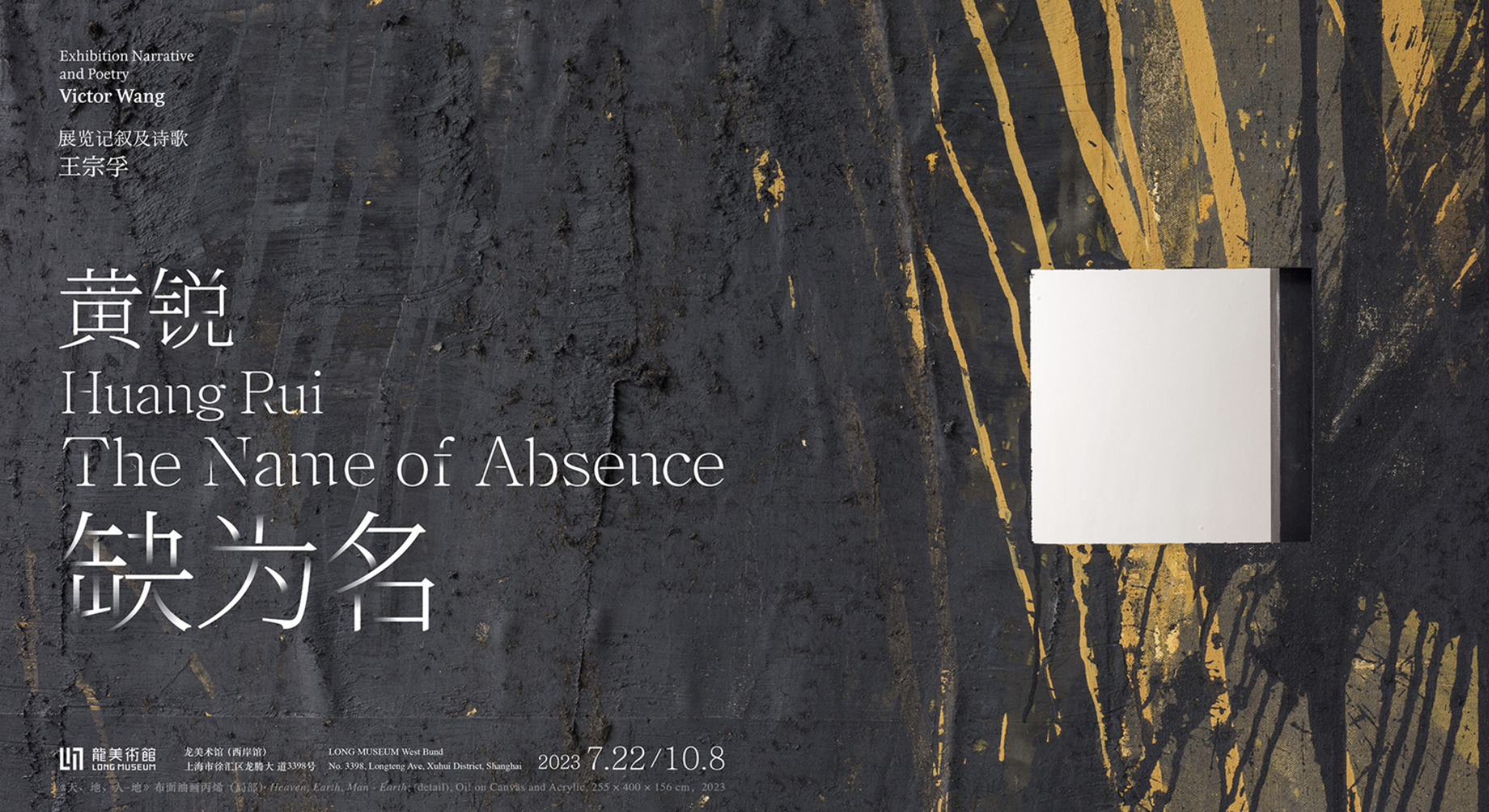
Huang Rui: The Name of Absence
2023.7.22-2023.10.8
LONG MUSEUM WEST BUND
| Artist |
| Huang Rui Exhibition Narrative and Poetry |
From July 22nd to October 8th, 2023, Long Museum (West Bund) will present Huang Rui's solo exhibition “The Name of Absence". This exhibition is Huang Rui's largest showcase to date, bringing together over 60 artworks spanning four decades, including The Star Period, Courtyard Series, Space Structure, Space, Painting Cubic Installation, Inside-out Dao, Absence Series, and Performance Art Photography. It is a new and revised exploration of the artist's creative journey.
This exhibition embraces two distinct curatorial approaches, providing viewers with a unique and multifaceted perspective on Huang Rui's artistic evolution. Firstly, it builds and expands upon the research and questions raised in his most recent large-scale exhibition in 2021, further exploring and pushing the concept of abstraction and its unique characteristics in China. Secondly, the exhibition integrates poetry written by writer and curator Victor Wang as a guiding narrative and framework, influencing the exhibition’s layout, composition, and arrangement of artworks on display.
Image of Huang Rui installing The Name of Absence.Installation View at Long Museum, 2023, at Long Museum West Bund, Shanghai.
Both the artist and writer have utilized the idea of “Tao (Dao)” in Taoism to organize the flow and layout of the exhibition. Often translated as ”way” in English, this approach allowed the show to break free from the traditional chronological approach in making survey exhibitions, and from the traditional binary between abstraction and figurative art. By embracing the fluidity of the Tao, the exhibition unfolded around three key pivotal works - “Oxygen No.1” (1981), “Portrait” (1975), and “Heaven, Earth, Man – Heaven” (2023) - complemented by a series of early performance pieces and key series of abstract works. Through this unconventional approach, the exhibition questions the division between figuration and abstraction, and sheds light on the profound influence of music, poetry, and performance in shaping the development of Chinese contemporary art, particularly in Huang Rui's remarkable artistic approach to abstraction and post-figurative art.
“The Name of Absence” exhibition unfolds over several distinct chapters and poems, each unveiling different facets of Huang Rui's artistic evolution which include photography and performance while contemplating how music, poetry, and East Asian philosophy have influenced the development of abstract painting in China and Huang’s work. Drawing on the legacy of music and poetry are important elements, notably, the exhibition pays homage to the pivotal encounter between Huang Rui and Jean-Michel Jarre, the ‘godfather’ of French electronic music, in 1981. Inspired by Jarre’s music, Huang Rui created the “Oxygen” series, responding to the invitation by Jarre to capture the essence of his music through interactive paintings, thus opening one important door to abstraction.
Oxygen No.1,1981,by Huang Rui.
The choice of poetry, as an underlining structure in both the work and exhibition, stems from Huang Rui's artistic development and serves as a testament to the profound influence of poetry in shaping his creative journey. His connection with writer and poet Beidao, established in 1969, and his active participation in the Underground Poetry Salon in 1971, marked a pivotal moment in his artistic path. Moreover, the significance of poetry extends beyond Huang Rui's personal growth, playing an often overlooked role in China’s modernity.
Throughout the exhibition, Huang Rui's exploration of abstraction unfolds, specifically through the artist’s Absence Series, and in his new work “Heaven, Earth, Man – Heaven” (2023), and again through a series of spatial interventions and layout, revealing a distinctive approach that transcends a mere dialogue with Euro-American abstraction – but a form that goes beyond that. In the artist’s most recent work, “Heaven, Earth, Man – Heaven”, the customary ontological frameworks of viewing art from the front are relinquished. The conventional Western paradigm in painting, whereby the contemplation of painting is confined to frontal engagement, is untangled, and a novel tridimensionality painting takes form, with neither front nor rear. Instead, an assemblage of surfaces intersects in a multi-perspective trajectory, unveiling themselves to the viewer with each step, as they walk through the space and around the work.
In his Absence Series, Huang Rui employs a unique technique of the ‘no-dao’, creating two layers of space within the canvas. By excavating a hole in the surface of the painting and suspending it at a distance from the wall, he establishes a fascinating interplay between the cavity and the surrounding architecture, forming a new spatial perspective that challenges the traditional notions of picture-plane relationships. Implementing a type of Wu Wei (无为) to abstraction, which allows the work to unfold naturally without resistance – harmoniously incorporating both the viewer and the exhibition space. This dynamic interaction not only opposes the two-dimensionality of the picture but also embraces it, leading to a captivating contradiction that transcends traditional abstraction into an immersive picture installation, one that shifts from a flat plane to a three-dimensional realm of architecture.
Performance art, alongside photography, holds a significant place in Huang Rui's artistic practice, and its importance is underscored in the exhibition by the inclusion of early historical performance works such as “Another Bridge” from 1995, shedding light on the profound relationship between performance and photography that emerged during this pivotal period in contemporary art. These performances not only offered a fresh avenue for self-expression but also became a powerful means of conveying essential ideas after China’s reform and opening-up, which often could only be done through the power of abstraction.
Huang Rui, The Name of Absence.Installation View at Long Museum, 2023, at Long Museum West Bund, Shanghai.
Huang Rui, The Name of Absence.Installation View at Long Museum, 2023, at Long Museum West Bund, Shanghai.
Huang Rui, The Name of Absence.Installation View at Long Museum, 2023, at Long Museum West Bund, Shanghai.
Huang Rui, The Name of Absence.Installation View at Long Museum, 2023, at Long Museum West Bund, Shanghai.
Huang Rui, The Name of Absence.Installation View at Long Museum, 2023, at Long Museum West Bund, Shanghai.
Portrait (1975),by Huang Rui.
Huang Rui, The Name of Absence.Installation View at Long Museum, 2023, at Long Museum West Bund, Shanghai.
Huang Rui, The Name of Absence.Installation View at Long Museum, 2023, at Long Museum West Bund, Shanghai.
Huang Rui, The Name of Absence.Installation View at Long Museum, 2023, at Long Museum West Bund, Shanghai.
Huang Rui, The Name of Absence.Installation View at Long Museum, 2023, at Long Museum West Bund, Shanghai.
Huang Rui, The Name of Absence.Installation View at Long Museum, 2023, at Long Museum West Bund, Shanghai.
Huang Rui, The Name of Absence.Installation View at Long Museum, 2023, at Long Museum West Bund, Shanghai.
Huang Rui, The Name of Absence.Installation View at Long Museum, 2023, at Long Museum West Bund, Shanghai.
Huang Rui, The Name of Absence.Installation View at Long Museum, 2023, at Long Museum West Bund, Shanghai.
Huang Rui, The Name of Absence.Installation View at Long Museum, 2023, at Long Museum West Bund, Shanghai.
--
About Huang Rui
Born in 1952, based in Beijing. He was a founding member of the groundbreaking Chinese avant-garde art group The Stars. In 1979, he made the first public appearance of his work at the “Stars Art Exhibition”. In the 80s, his practice centered on painting, and his works were influenced by Expressionism, Abstract Expressionism, Fauvism, and Cubism. In the 1990s he began to explore more diverse and experimental art-making techniques, including installation, performance art, photography, and prints.
His major solo exhibitions include ”The Art Life of Huang Rui”(Jupiter Museum of Art, Shenzhen,2021); “Ways of Abstraction” (UCCA, Beijing,2021); “Animal Time: 1204-2009” (Coudenberg Museum, Brussels, 2009); “Chinese History in Animal Time” (Museo delle Mura, Rome, 2009); “Huang Rui: The Stars’ Times 1977-1984”(He Xiangning Art Museum, Shenzhen, 2007); “Chai-Na/China” (Les Rencontres d’ Arles Photography Festival, 2007); “Huang Rui Exhibition” (Osaka Contemporary Art Center, 1990). Select group exhibitions include ”Art and China after 1989: Theater of the World” (Solomon R. Guggenheim Museum, New York, 2017); “CHINA 8” (Various Venues, Germany, 2015); the Venice Biennale (2013); and the “Stars Art Exhibition” (East Garden of the National Art Gallery, Beijing, 1979).
About Victor Wang
Victor Wang, curator, he is currently Executive Deputy and Artistc Director of M WOODS Museum. Wang has curated collaborative exhibitions with institutions such as Palais de Tokyo, Paris, Tate Modern, London, The National Gallery, Berlin, and the first collaborative exhibition between the British Museum (U.K.) and a non-state-run art museum in China.
Wang has recently curated the first large-scale museum surveys in China of artists such as: Ann Veronica Jannsens (2023); Salman Toor (2023); Martin Margiela (2022); Bruce Nauman (2022); Man Ray (2021); Ryuichi Sakamoto (2021); Giorgio Morandi (2020); and Richard Tuttle, (2019), all at M WOODS Museum, and Haroon Mirza at the Sifang Art Museum in Nanjing, (2019), Katja Novitskova at Cc Foundation in Shanghai (2017), and Neïl Beloufa at the chi K11 art museum in Shanghai (2016).Wang has previously served as curator of Frieze LIVE at the Frieze Art Fair in London (2020), and curator for PHOTOFAIRS in Shanghai (2018).
Wang has given lectures on curating at several universities, including The Courtauld Institute of Art in London, Goldsmiths at the University of London, and he is a regular guest tutor at the Royal College of Art, London. Additionally, he is the founder of the Institute of Asian Performance Art (IAPA).

Ann Veronica Janssens: pinkyellowblue
30 June 2023 – 26 November 2023
M WOODS 798, Beijing, China
Curated by Victor Wang, Artistic Director and Chief Curator, M WOODS
“I’m interested in the idea that a work can be almost invisible until it catches your eye, after which it becomes almost hyper visible and establishes an encounter: you could walk past without noticing it, but it creates an experience when you do” - Ann Veronica Janssens
Ann Veronica Janssens, the renowned Belgian artist, will be presenting her first solo museum exhibition in China at the M WOODS Museum, Beijing. The exhibition, entitled pinkyellowblue, is curated by Victor Wang as a meditative journey through Janssens’ 40-year career of colour and light in motion, a survey exhibition that will feature a selection of Janssens' luminous and sensorial works, inviting viewers to enter an immersive spectrum, where colour and light combine to expand the senses and stimulate perception.
Janssens’ art resonates with both Eastern philosophy and the opulent harmonies of color and light utilized in artistic movements such as Op Art, Minimalism, and Light and Space, which emerged in the 1950s and 1960s.These movements, which examined sensory and perceptual experiences through optical illusions and the manipulation of perception, find echoes in Janssens' use of light and space as mediums in themselves. In the context of China, the artist's practice also finds synergy with the philosophical traditions of East Asia, particularly Buddhism, where different hues of colour are believed to align with distinct mental states or qualities.
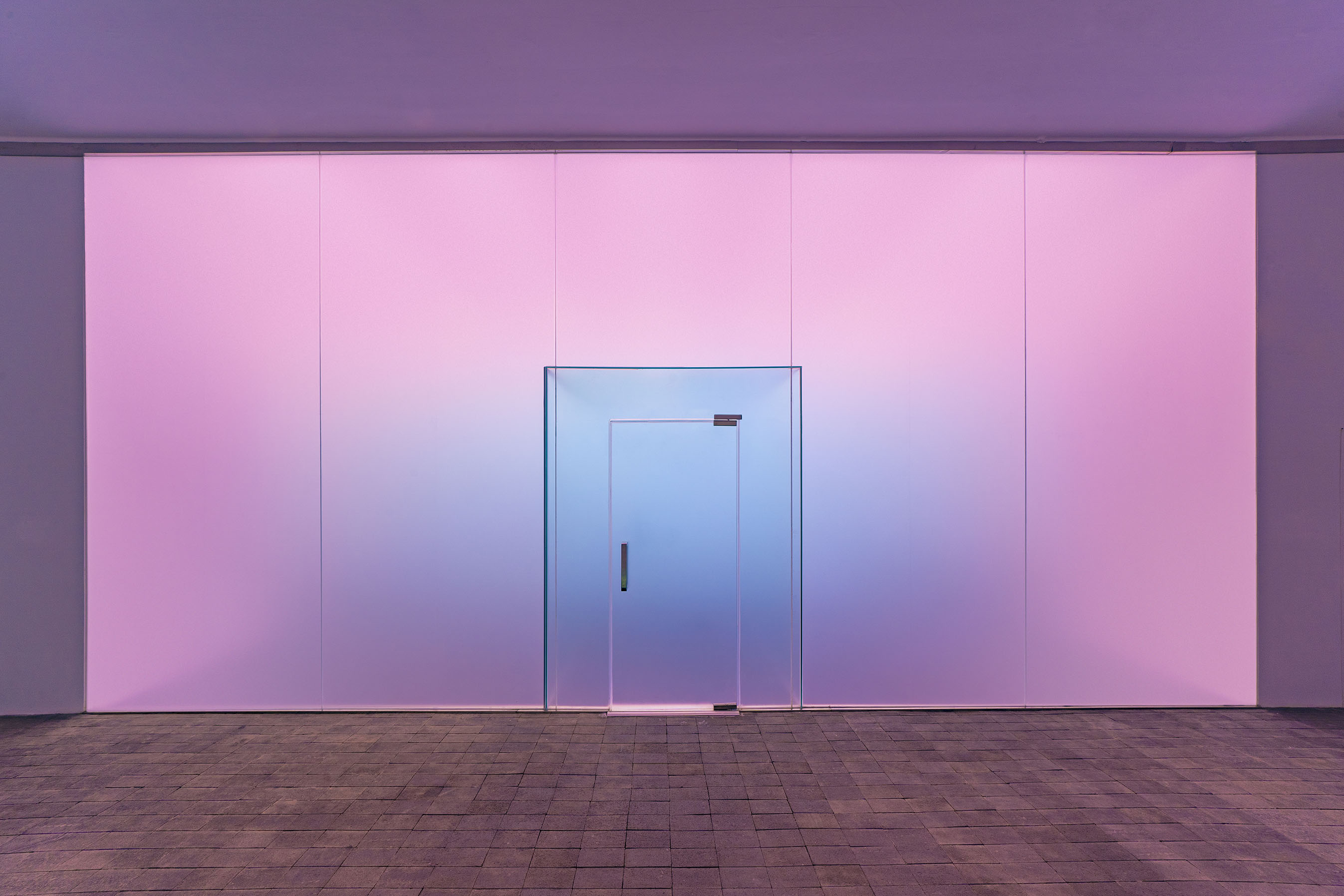 Ann Veronica
Janssens, pinkyellowblue (2015-2023), Installation View at M WOODS Museum, 2023, at M WOODS 798, Beijing. © MWOODS
Ann Veronica
Janssens, pinkyellowblue (2015-2023), Installation View at M WOODS Museum, 2023, at M WOODS 798, Beijing. © MWOODSThis survey exhibition, which comprises of key works from her 40-year career, was planned with the artist and curator over several years and is constructed as a series of experiential encounters and ‘sensory modalities’ that highlight fundamental ideas and concepts that Janssens has been exploring throughout her career. Forming the core of this exhibition as an immersive body of colour are several of the artist's most iconic works, such as: pinkyellowblue (2015-2023), and a new Beijing version of Janssens’ celebrated glitter sculptures. These artworks demonstrate Janssens' exploration of the dematerialisation of sculpture, unbounded by material or form. pinkyellowblue is an immersive installation that uses light and color to create a sensory and perceptual experience for the viewer. The work consists of a single space infused with hues of bold and bright colour and fog. As the viewer moves through the spaces, the colors blend and shift, creating a sense of movement and transformation: a journey of the mind and body through colour and space. Untitled (Silver Glitter) is another ethereal work that uses dispersed glitter to create a sea of silver colour and light on the floor. As the glitter is released into the gallery, it dances and swirls with the air upon impact, creating a floor sculpture in the space. Like pinkyellowblue, this work highlights Janssens' exploration of the “instability of material”, as it focuses on the sensory and experiential aspects of the work rather than physical form.

Ann Veronica Janssens, pinkyellowblue (2015-2023), Installation View at M WOODS Museum, 2023, at M WOODS 798, Beijing. © MWOODS
The exhibition, planned to coincide with the summer solstice, is structured as a journey into the expanded realm of sculpture. It offers a transcendental experience that uses colour and light as a primary gateway for understanding Janssens’ investigation into ‘soft sculpture’. It brings together key works that highlight the artist's approach to making art that examines sculpture through an interdisciplinary field.
For the first time in Beijing, key works that consider this relationship between the viewer, the museum, and light such as Hot Pink and Turquoise (2006) and Rouge 106 Bleu 132 (2003) are displayed. In these works, Janssens blends continuous fields of light with the museum's architecture to produce unique spaces that absorb the viewer in spectrums of colour. Enhancing both the visual and experiential nature of these works in the galleries, filling each room with soft, coral and cerulean hues of light, creating a sense of warmth and temporary tranquillity.
We invite audiences to consider the limits of their own perception through Janssens' art, and to explore how the artist complicates our understanding between the material and the immaterial in art. The sensory experiences created by the artist's use of light and colour, plus the transition to summer in Beijing, will leave a lasting impression on the viewer, proposing a deeper level of engagement with the work, and to further consider the relationship between our feelings and our observance of reality. Do not miss the chance to have your perceptions challenged and your mind expanded by the immersive, experiential art of Ann Veronica Janssens.

Ann Veronica Janssens, pinkyellowblue (2015-2023), Installation View at M WOODS Museum, 2023, at M WOODS 798, Beijing. © MWOODS
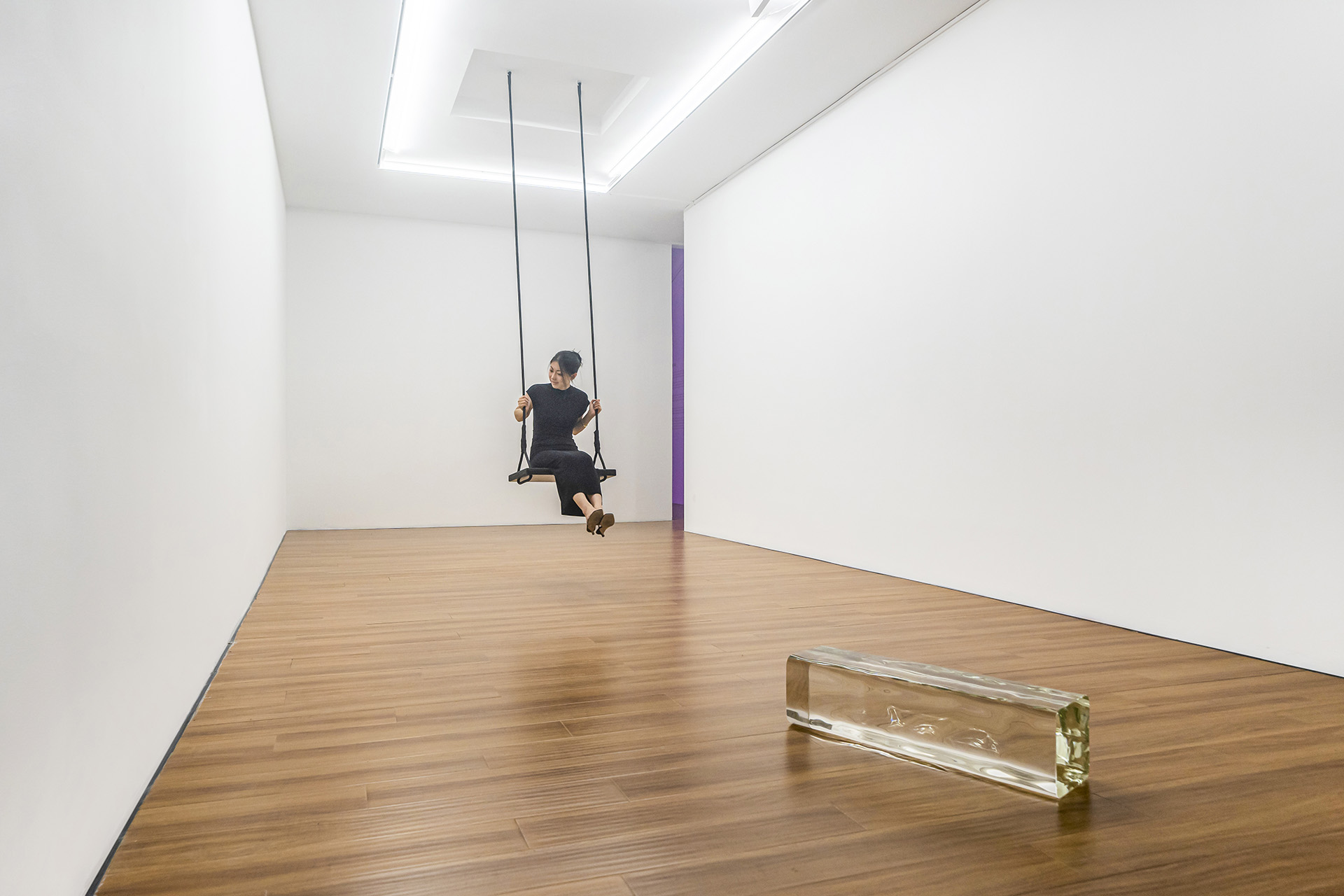
Ann Veronica Janssens, installation View “pinkyellowblue”, at M WOODS Museum, 2023, at M WOODS 798, Beijing. © MWOODS
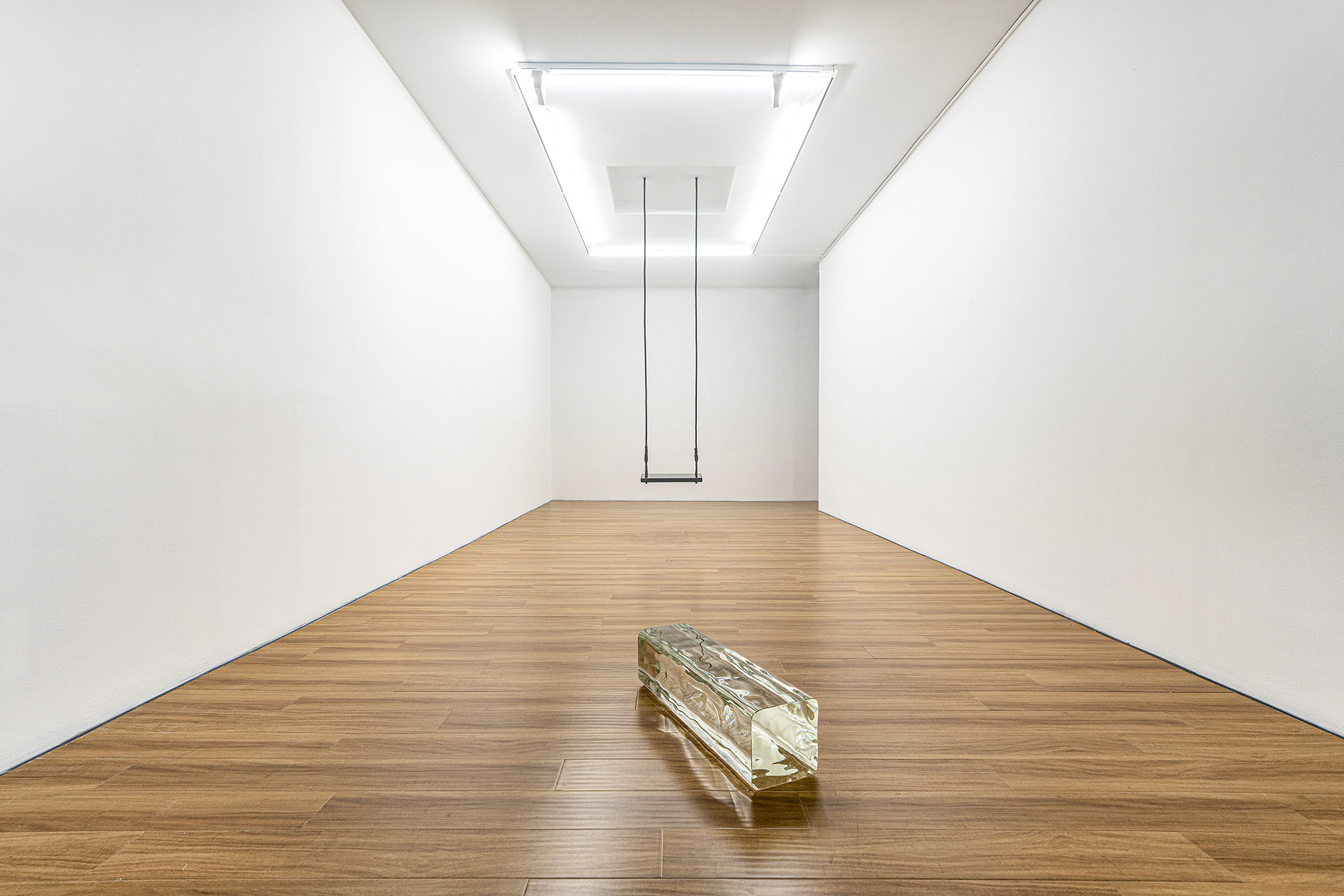
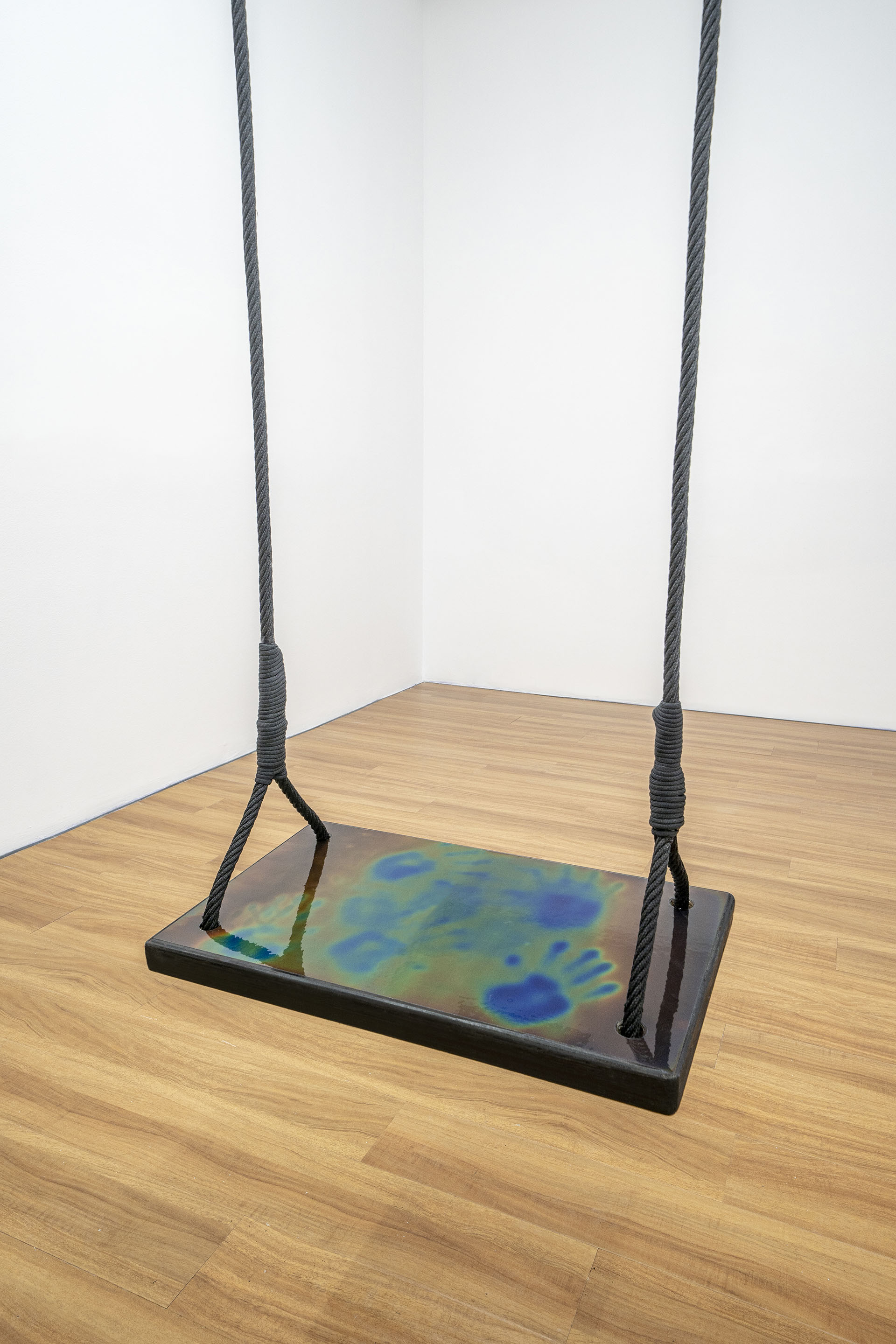
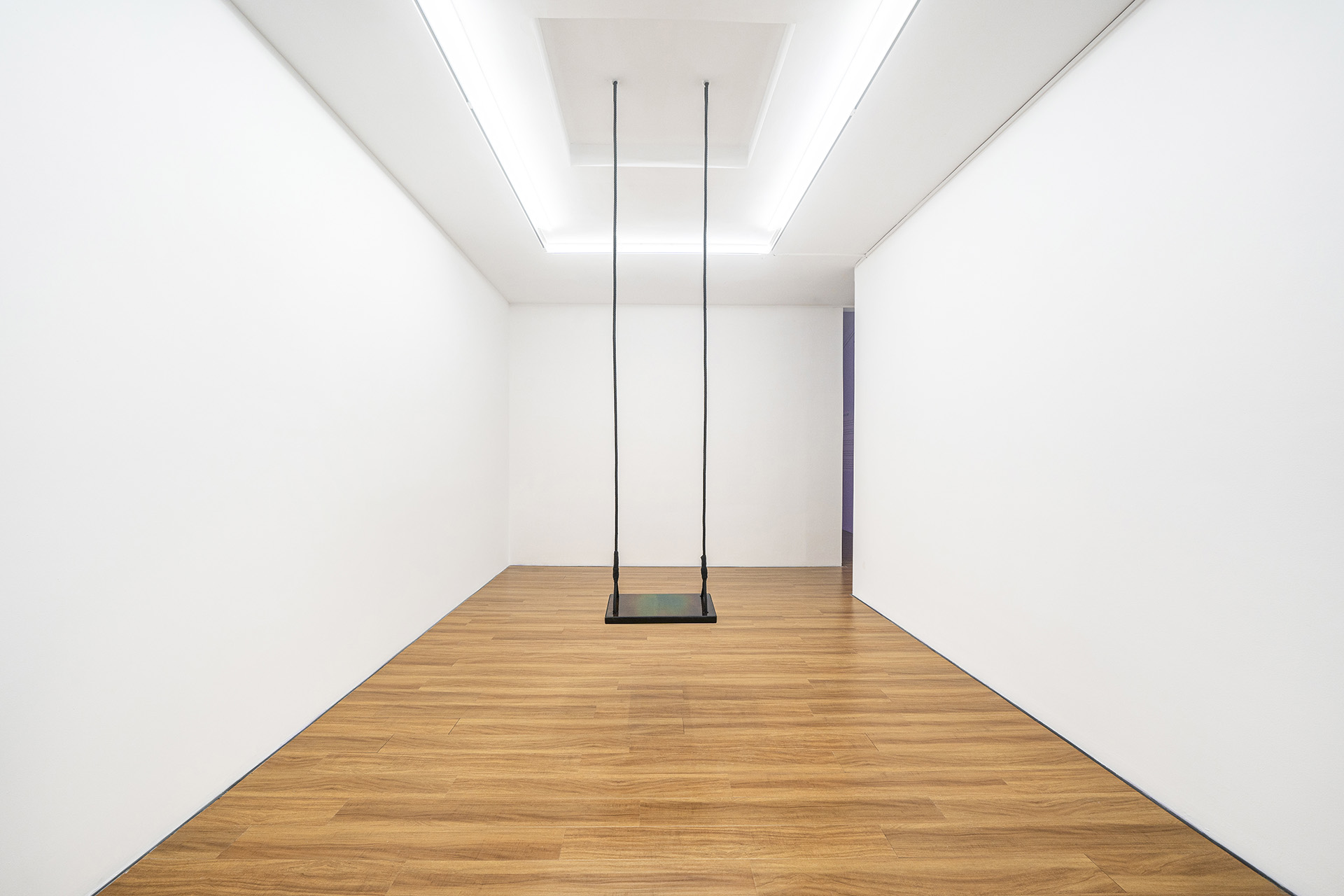
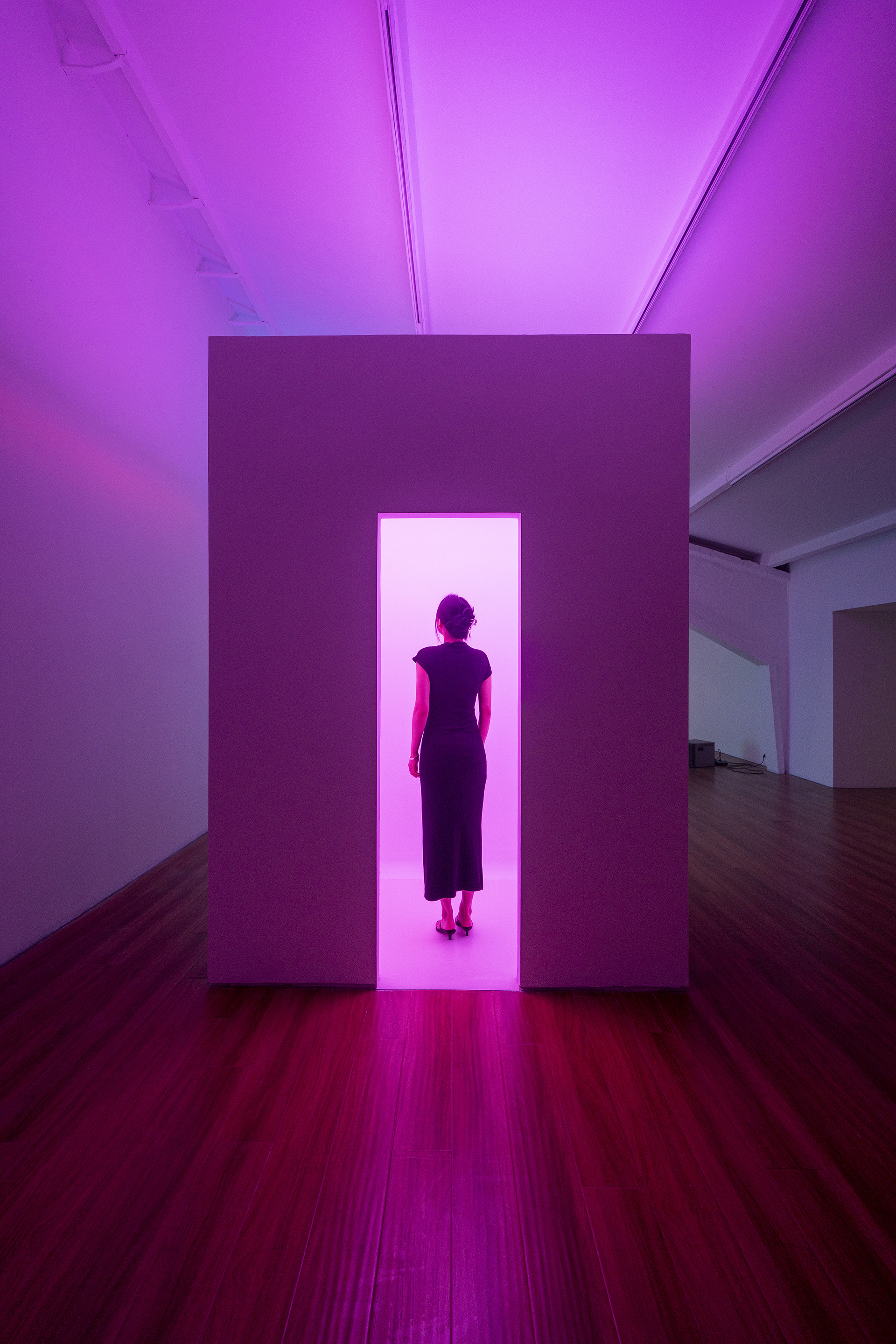
Ann Veronica Janssens, installation View “ Rouge 106 - Bleu 132” (Scale Model), 2003 - 2007, at M WOODS Museum, 2023, at M WOODS 798, Beijing. © MWOODS



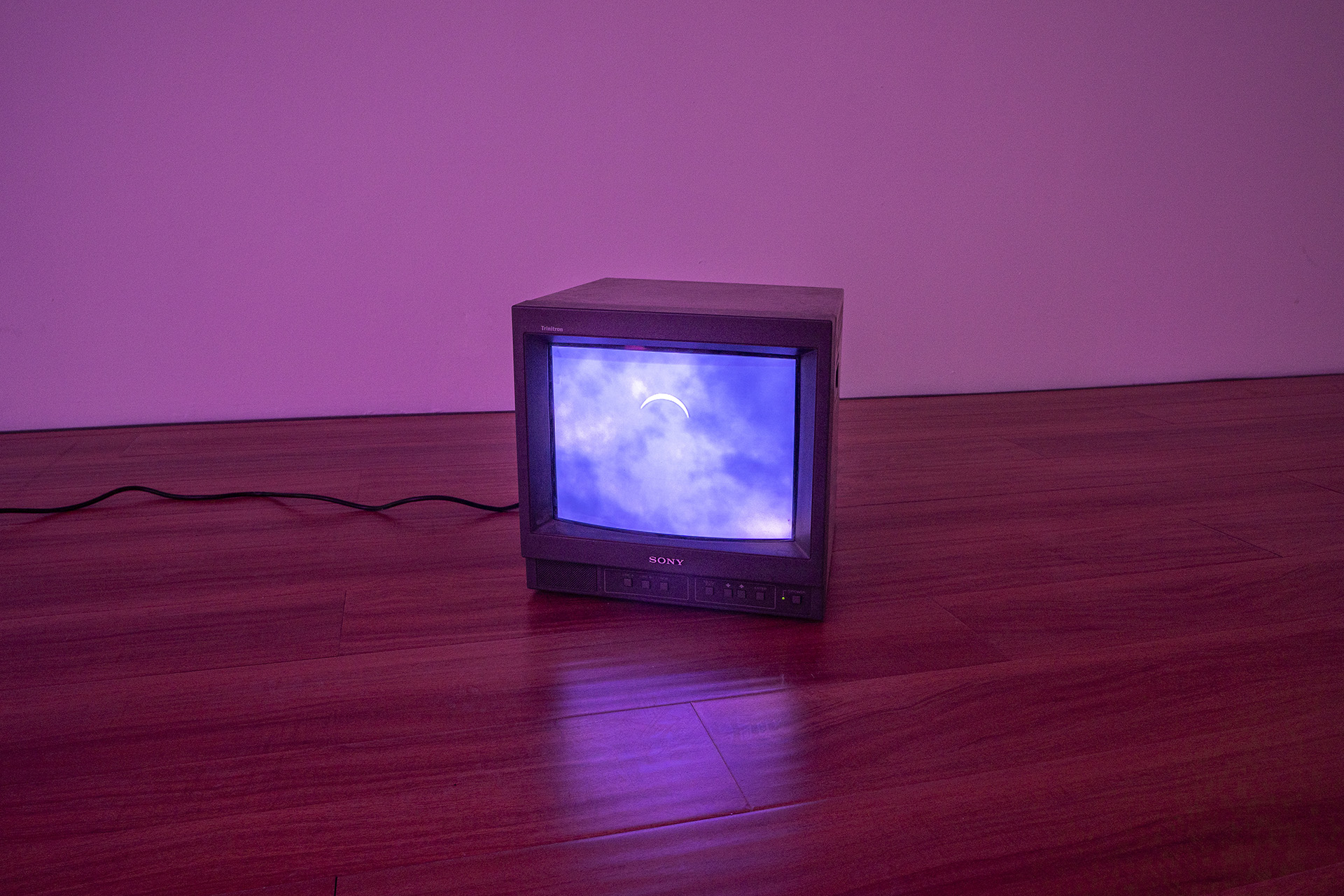 Ann Veronica
Janssens, installation View “
Eclipse – Shanghai, China 2” (after) (fine), 2009, at M WOODS Museum, 2023, at M WOODS 798, Beijing. © MWOODS
Ann Veronica
Janssens, installation View “
Eclipse – Shanghai, China 2” (after) (fine), 2009, at M WOODS Museum, 2023, at M WOODS 798, Beijing. © MWOODS
Ann Veronica Janssens, “Untitled (silver glitter), open sculpture #1”, 2015 - 2023, at M WOODS Museum, 2023, at M WOODS 798, Beijing. © MWOODS

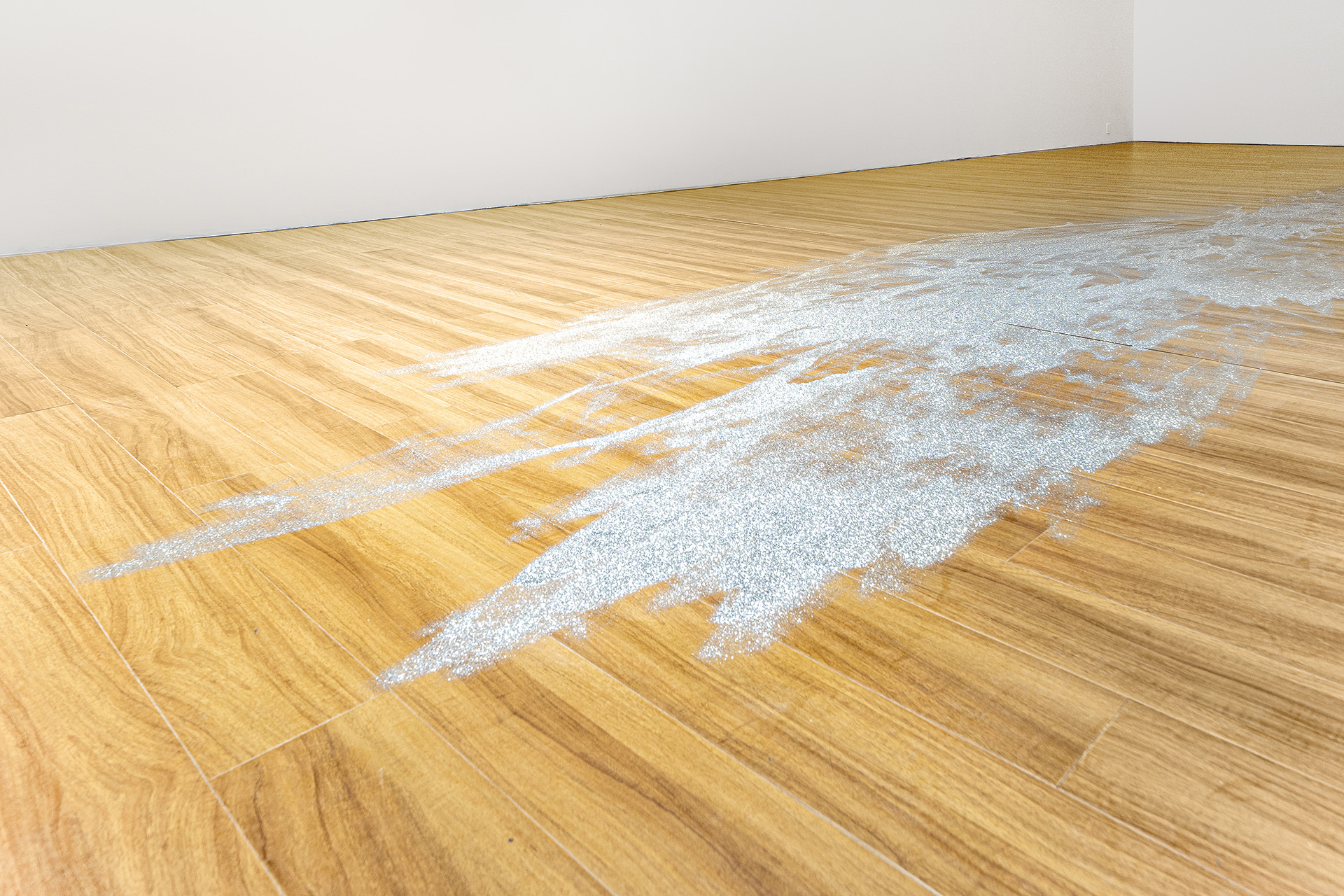
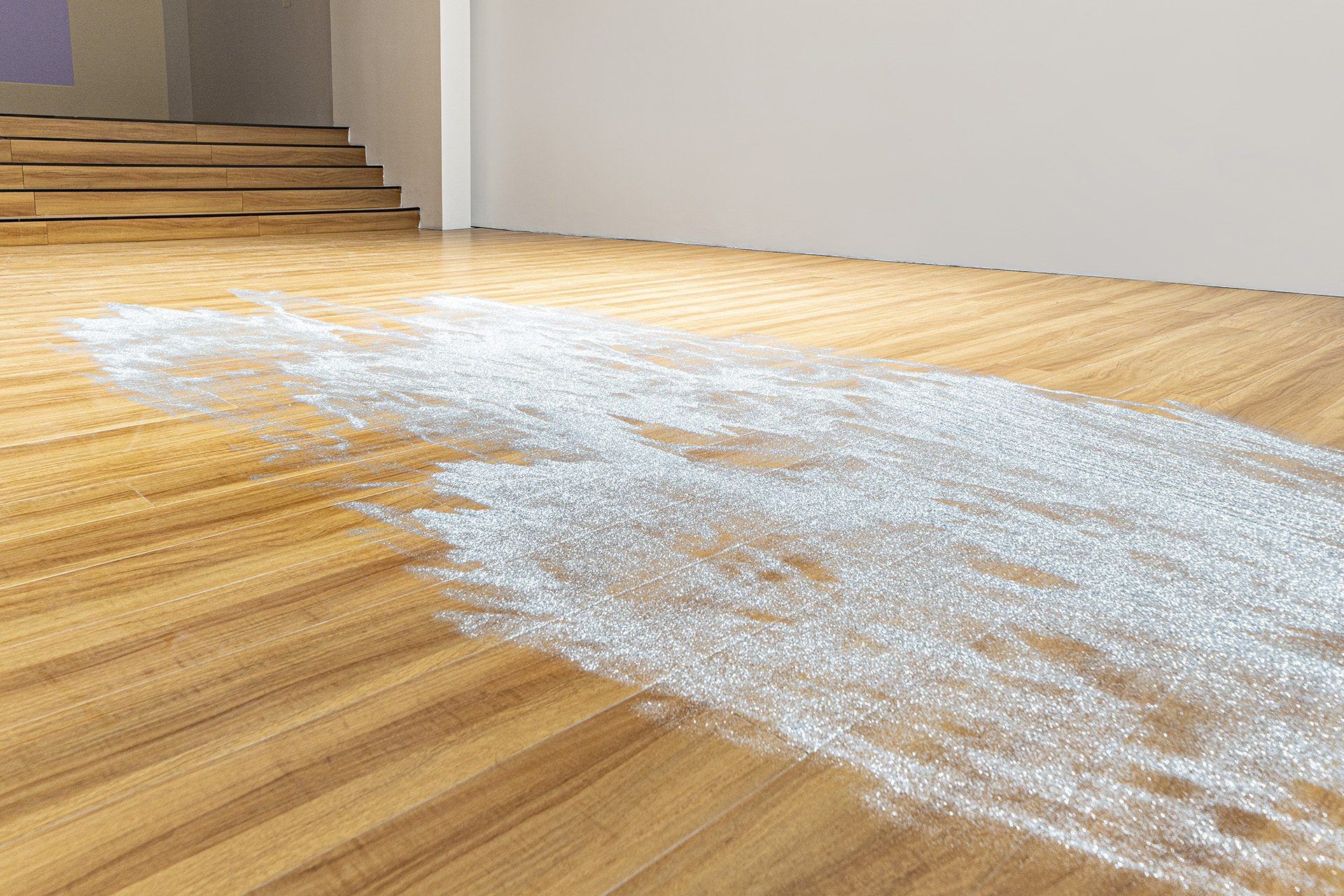
Ann Veronica Janssens, “ Untitled (silver glitter), open sculpture #1”, 2015 - 2023, at M WOODS Museum, 2023, at M WOODS 798, Beijing. © MWOODS
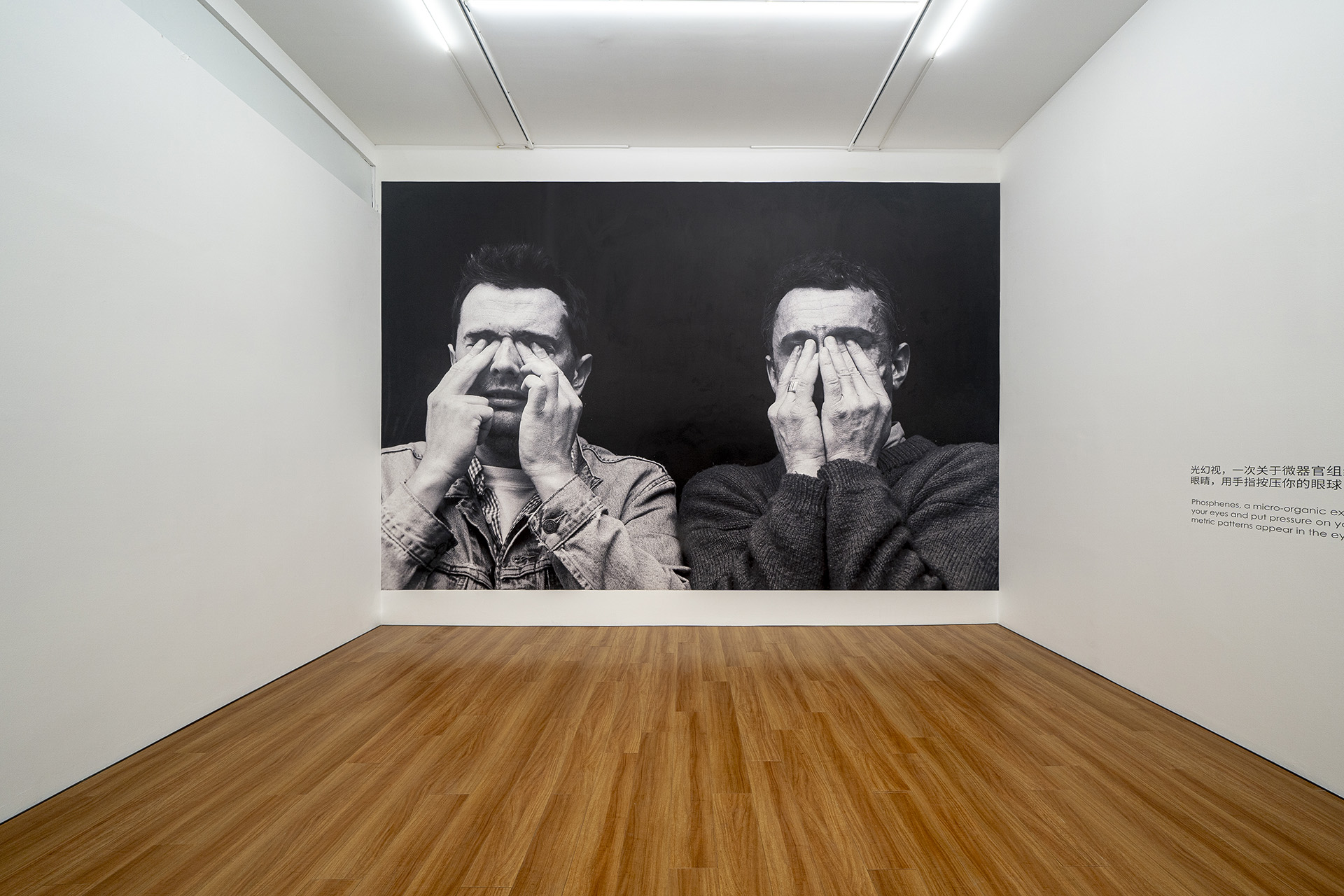
Ann Veronica Janssens, “ Phosphènes”, 1997 - 2018, at M WOODS Museum, 2023, at M WOODS 798, Beijing. © MWOODS

Ann Veronica Janssens, “ Scrub Colour 2”, 2002, at M WOODS Museum, 2023, at M WOODS 798, Beijing. © MWOODS
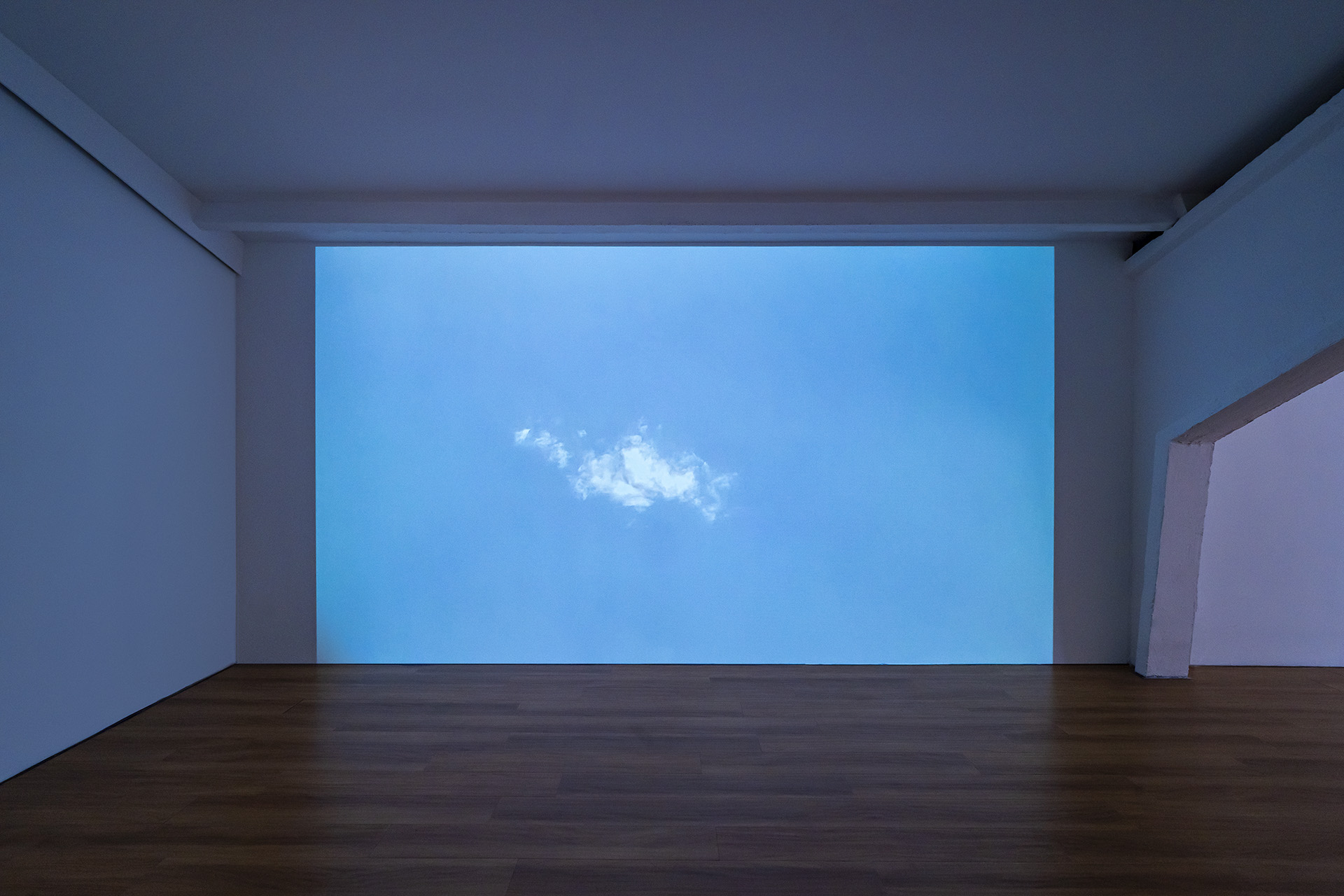
Ann Veronica Janssens, “Sky”, 2003, at M WOODS Museum, 2023, at M WOODS 798, Beijing. © MWOODS
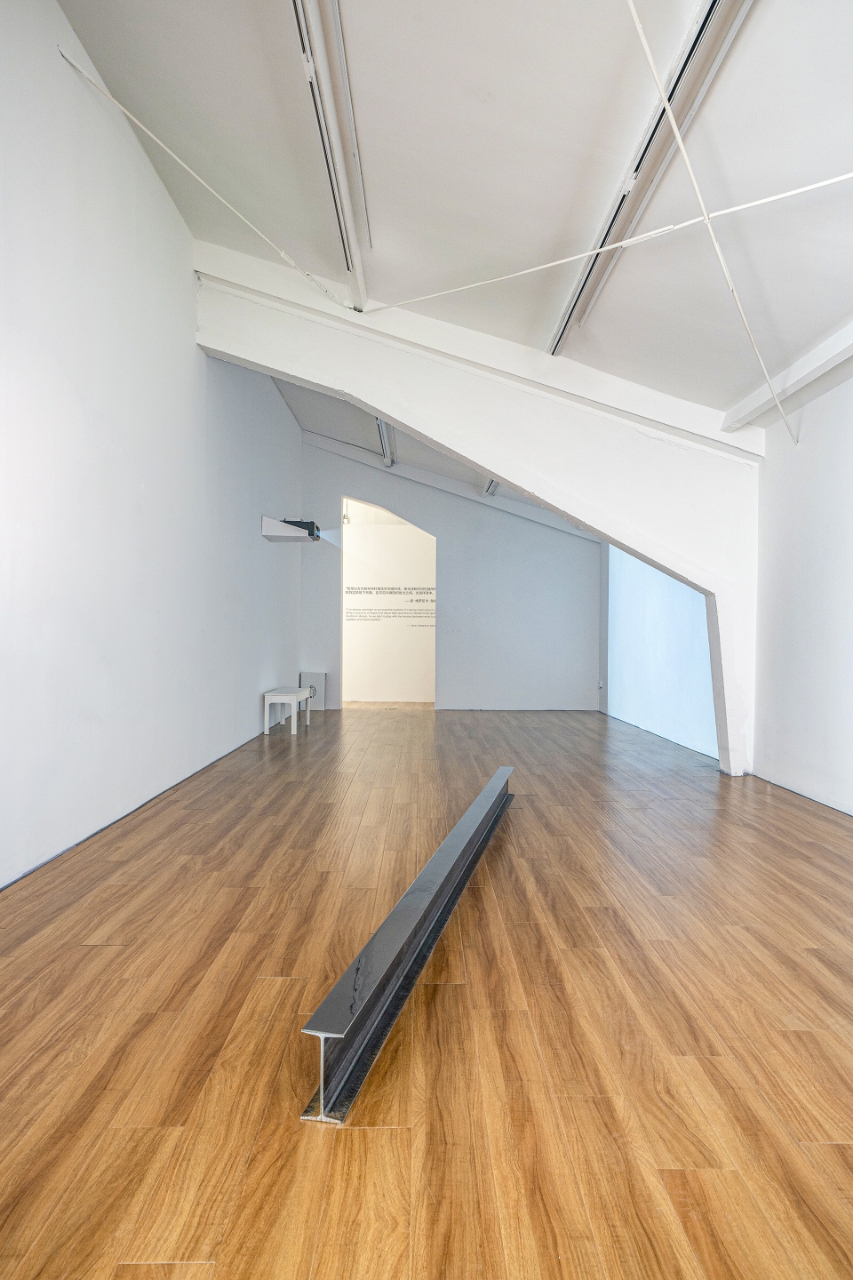
Ann Veronica Janssens, installation View “pinkyellowblue”, at M WOODS Museum, 2023, at M WOODS 798, Beijing. © MWOODS
-
 Photo: portrait of Ann Veronica Janssens, ©Andrea Rossetti , courtesy Esther Shipper Berlin
Photo: portrait of Ann Veronica Janssens, ©Andrea Rossetti , courtesy Esther Shipper Berlin
About the Artist:
Ann Veronica Janssens was born in 1956 in Folkestone, England. She studied at L’École de la Cambre in Brussels. The artist lives and works in Brussels.
Among her numerous solo exhibitions are: Entre le crépuscule et le ciel, Collection Lambert, Avignon (2022); gam gam gam, Galleria d'Arte Moderna – GAM, Milan (2021); Hot Pink Turquoise, South London Gallery, London (2020–21) and Louisiana Museum of Modern Art, Humlebæk (2020); Contrepoint 2, Musée de l'Orangerie, Paris (2019); Ann Veronica Janssens, Kiasma Museum of Contemporary Art, Helsinki (2018–19); Fog Star, Baltimore Museum of Art, Baltimore (2018); Ann Veronica Janssens, Nasher Sculpture Center, Dallas (2016); Ann Veronica Janssens: yellowbluepink, Wellcome Collection, London (2015); Serendipity, WIELS, Brussels (2009); CCA Wattis Institute for Contemporary Arts (2003); Rouge 106, Bleu 132, Musée d’Orsay, Paris (2003); and Light Games, Neue Nationalgalerie, Berlin (2001), amongst many others.
Selected group exhibitions include: Fata Morgana, Jeu de Paume, Paris (2022); Chagall. Le passeur de lumière, Centre Pompidou-Metz, Metz (2021); Time is Thirsty, Kunsthalle Wien, Vienna (2019); Luogo e Segni, Punta della Dogana, Venice (2019); Space Shifters, Hayward Gallery, London (2018); Poïpoï, une Collection Privée à Monaco, Nouveau Musée National de Monaco (2017); Daniel Buren – A fresco, BOZAR – Centre for fine Arts Brussels (2016); Illumination, Louisiana Museum of Modern Art, Humlebæk (2016); Manifesta 10, State Hermitage Museum, St. Petersburg (2014); Des choses en moins, des choses en plus, Palais de Tokyo, Paris (2014); Dynamo, Un siècle de lumière et de mouvement dans l’art 1913-2013, Grand Palais, Paris (2013); Fruits de la Passion, Centre Pompidou, Paris (2012), amongst many others.
Janssens's work is held in the collections of Caldic Collection – Museum Voorlinden, Wassenaar; De Pont Museum, FNAC, Paris; Fundación Jumex, Mexico City; Louisiana Museum of Modern Art, Humlebæk; mac, Marseille; Mona – Museum of Old and New Art, Tasmania; MUHKA, Antwerp; Musée national d'art moderne – Centre Pompidou, Paris; Musées royaux des Beaux-Arts de Belgique, Brussels; Mu.ZEE, Oostende; Musée des Arts Contemporains – Grand Hornu; Nasher Sculpture Center, Dallas; S.M.A.K., Gent; Tel Aviv Museum of Art, Tel Aviv, and many others.
With special thanks to 1301P, Gallery and to Ann Veronica Janssens‘ Studio.
Exhibition Credit
This exhibition is curated by Victor Wang, Artistic Director and Chief Curator, M WOODS, with Assistant Curator, Qi Yuanlin, M WOODS.
Curatorial assistance provided by Lin Yuyang, Assistant to Artistic Director and Chief Curator.
Exhibition Design by Victor Wang, Li Xindi, Yang Yang, Wang Jian, and M WOODS Technical Team.
--
VICTOR WANG
All content property of © Victor Wang 2009 - 2024 All rights reserved -- BEIJING - LONDON.
All content property of © Victor Wang 2009 - 2024 All rights reserved -- BEIJING - LONDON.